

Bee smart.. choose local National Honey Day 2024 Pages 16 - 17 PLUS - British lifestyle focus’s on The history of the pork pie Page 110









Bee smart.. choose local National Honey Day 2024 Pages 16 - 17 PLUS - British lifestyle focus’s on The history of the pork pie Page 110






Tel: 01827 880088
Email: isuzu@startintractors.co.uk
Web: startintractors.co.uk
Startin Tractors Ltd
Ashby Road, Twycross, Nr Atherstone Warwickshire, CV9 3PW






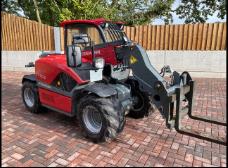

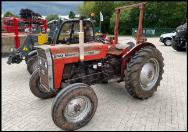





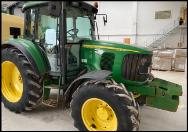


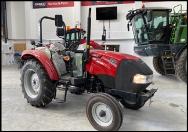

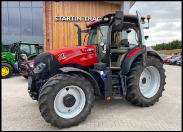
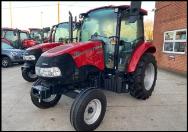

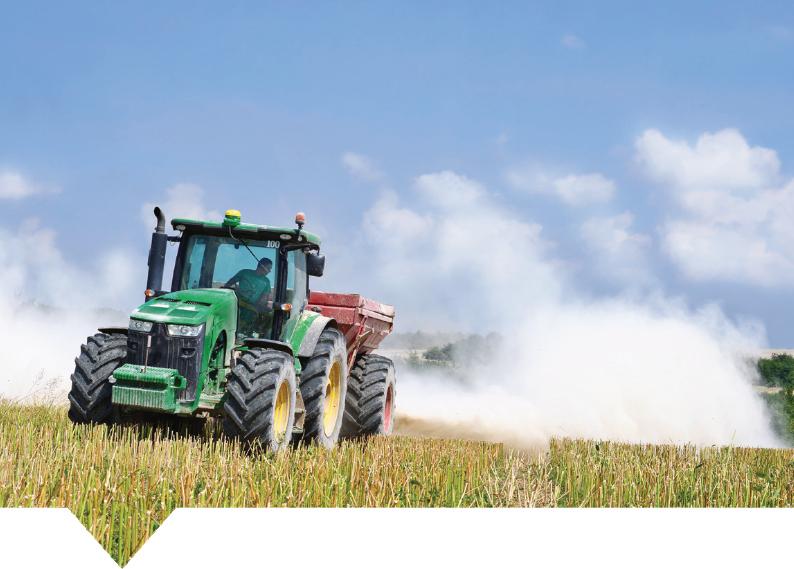



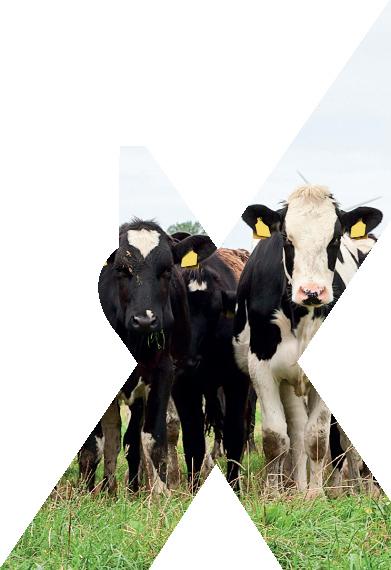
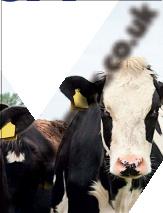






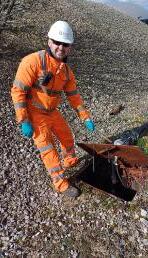









EDITOR
editor@farmingmonthly.com
EDITORIAL ENQUIRIES
editorial@farmingmonthly.com
ADVERTISING ENQUIRIES
Tel: +44 (0) 2476 353537
ADVERTISING DIRECTOR
Shona Beedham
shona@farmingmonthly.com
ACCOUNT EXECUTIVE
Jennifer Mills
jennifer.mills@farmingmonthly.com
ACCOUNT EXECUTIVE
Vicky Smith
vicky.smith@fatmingmonthly.com
SUBSCRIPTIONS subscriptions@farmingmonthly.com
PRODUCTION production@farmingmonthly.com






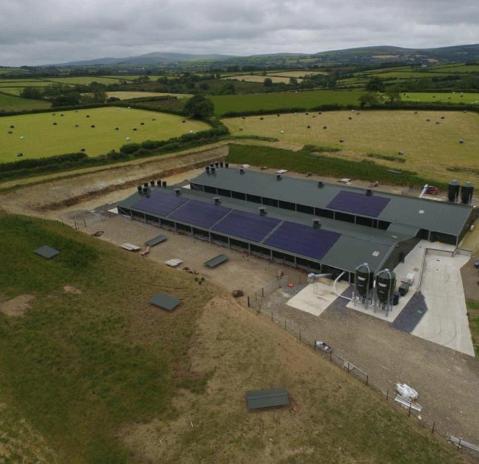



For editorial, general enquiries or to advertise please call +44 (0) 2476 353537 or email sales@farmingmonthly.com
Farming Monthly National is published monthly in the UK by Farming Monthly Ltd, Tel: +44 (0) 2476 353537 Printed in the UK
No part of this magazine may be reproduced without permission from the publisher.
Whilst every attempt is made to ensure accuracy, the opinions expressed in the magazine are not necessarily those of the Editor or publication. The Editor also reserves the right to alter or edit material as required and no responsibility is accepted for inaccuracies.
Full copyright applies. All rights reserved. ISSN 2044-0190 (print) ISSN 2044-0200 (digital) Agriculture. Covered.
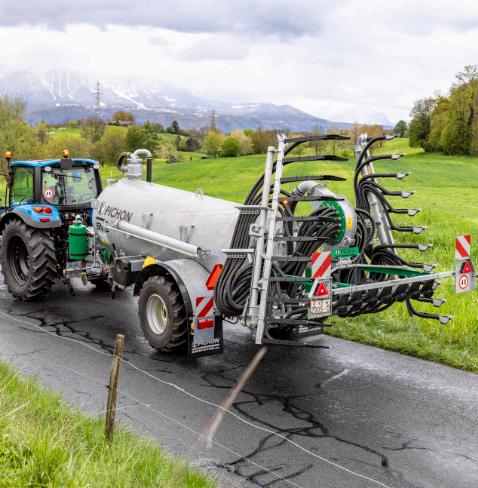
4 local councillors from across England, Wales and Scotland have been shortlisted for the 2024 LGIU and CCLA Cllr Awards, showcasing the vital contributions of councillors for the 15th year running in England and Wales and 7th year in Scotland.
Competition was extremely tight with more than350nominations received across fivecategories that celebrate the wide-ranging work of councillors:Community Champion,Leader of the Year,Young Councillor of the Year,Innovator of the YearandLifetime Legend.
The full England & Wales shortlist is availablehereand Scotland shortlist can be foundhere.
Jonathan Carr-West, Chief Executive, Local Government Information Unit (LGIU) said:
"The judging panel was blown away by the number of extremely high quality nominations this year, with councillors up and down the
country going the extra mile for residents. The shortlist for the 2024 Cllr Awards contains the most devoted elected representatives in England, Wales and Scotland.
With councils operating under enormous pressure, these Awards are a hugely important way to champion what councillors achieve in the places we live. Congratulations to all the councillors nominated and shortlisted and I look forward to announcing the winners in November."
Winners in England & Wales will be announced at the Guildhall in London on Wednesday 20 November while winners in Scotland will be revealed at the City Chambers in Edinburgh on Thursday 14 November.
The Cllr Awards judging panels comprise senior councillors and leading stakeholders from across the sector. These are the only national awards to celebrate and showcase the work of individual councillors. This year's awards are made possible thanks to the generous support of founding partnersCCLA.
CPRE head of policy and planning
Paul Miner said:'CPRE welcomes the government's announcement of £68m for councils to put towards housebuilding on brownfield land. There are already enough shovel-ready brownfield sites in England alone for 1.2 million new homes, this funding shows the government is ready to deliver on its brownfield first commitment.
'We are in the midst of an affordable housing crisis and more investment will also be needed
to make the government's affordable homes targets a reality.
'We urge the government to require a significant proportion of new homes to be genuinely affordable homes and, in particular, available for social rent. As well as a focus on developing brownfield, we need to see ambitious targets for genuinely affordable and social rented homes that the market, dominated by a small number of large players, has failed to deliver.'findi
ooking is now open for the next Argyll Monitor Farm open meeting, tackling ‘What to Expect from an Inspection –A Practical Approach’ and a look at what’s happening two years in for the Archibald family as Monitor Farmers on Islay.
With farming and crofting businesses subject to a variety of compulsory and voluntary scheme inspections, the Monitor Farm community group wanted to know more about them as requirements can change.
The meeting, on Tuesday 5 November, will see John MacAulay, Higher Agricultural Officer, Scottish Government Rural Payments and Inspections, and Eilidh McCulloch, Quality Assurance specialist from Quality Meat Scotland (QMS) walk and talk through cattle and sheep inspections and quality assurance reviews, using the Monitor Farm as a practical example. The aim is to share knowledge and experiences and remove any apprehension from inspections.
Argyllwintermeeting.eventbrite.co.uk) which will run from 9.45am-2.45pm at Craigens Farm, Isle of Islay. Car parking is limited, so car share if possible. Please wear suitable outdoor clothing and for biosecurity, clean vehicles, footwear, and clothing before attending. Sorry, no children under 16 or dogs are allowed.
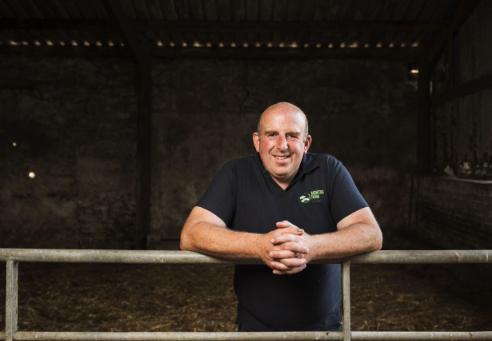
With the Archibald family almost at the end of year two as Monitor Farmers, they have undertaken a variety of trials and changes on-farm, including a review of the sheep system, testing before treating for worms and introducing rotational grazing. A trial of three different cover crops has been sown for this winter, plus an investigation into determining the most profitable suckler cow and nutrition planning on an island farm. Craig Archibald will provide an update of what has been happening on the farm and what lies ahead!
The morning on the farm will be followed by lunch at a local distillery. Then Margaret Morris and Morven Laurie of Nature Scot will demonstrate an app which will be launching soon to help farmers and crofters carry out biodiversity audits. They will be using the Monitor Farm as an example, and a carbon audit mini workshop will also feature.
Booking is essential for the meeting (see https://
Foot passenger transport can be arranged from and to Port Ellen, but must be confirmed at the time of booking. Foot passenger tickets can be booked via www.calmac.co.uk. The outward sailing is 7am from Kennacraig (arrives Port Ellen 9.10am), return on the 3.30pm from Port Ellen (arrives Kennacraig 5.25pm).
Christine Cuthbertson, Monitor Farm regional advisor said: “This will be a practical meeting, aiming to tackle a topic that many farmers worry about, and there will be plenty opportunity to ask questions. It will also be great to hear from the Archibald family about the changes they have made since becoming Monitor Farmers, as well as getting a sneak preview of a useful new app for farmers.”
‘What to Expect from an Inspection – A Practical Approach’, Monitor Farm update and distillery lunch. Tuesday 5 November, 9.45am-2.45pm at Craigens Farm, Isle of Islay, Argyllshire, PA44 7PW. Booking essential: https:// Argyllwintermeeting.eventbrite.co.uk
Enthusiastic, ambitious, passionate individuals looking to advance their careers are being encouraged to apply for the new two-year ForFarmers Commercial Development Programme starting in September 2025.
Founded in a range of six to nine-month placements covering field sales to procurement to marketing, the programme gives candidates knowledge and experience in activities across the livestock feed industry. Together ForFarmers and the successful candidates will map their placement journey, gain best in industry training and build a solid foundation from which to build their career.
"At ForFarmers we work side-by-side with our farmers, understanding their businesses, their opportunities and their challenges", says Greg Edwards, ForFarmers Commercial Director.

"We are a total feed business and find pride in the expert advice that we share on farm. By offering the best feed solutions for each individual
business, we ensure a higher return for our customers business, healthier livestock and improved efficiency. And we can only do this with the right people.
"The ForFarmers Commercial Development Programme gives insight and experience in our many business areas and product ranges. At the end of the programme, having experienced all the business has to offer and gained a better understanding of their own skill set, ForFarmers will aim to work with each individual to find a fulltime role, bringing with it greater responsibility and continued training," Greg explains.
"Motivation and attitude is key. This isn't a programme that is limited to graduates and we welcome applications from those with and without degrees. Nor is it limited to those at the early stage of their career. If you have a passion for agriculture, a can-do attitude and the desire to success we want to hear from you. Come and join our team and let us feed your career."
For more information about the Programme and details on placement opportunities, renumeration package and application process go to www. workingatforfarmers.co.uk/cdp

amping up its marketing campaign a notch this autumn is Gressingham Foods as it takes the bold decision to promote its brand nationwide on the small screen.
Gressingham Foods is working with ITV on a campaign from 7th October to 17th November, which will show just how easy it is to cook duck and achieve delicious results.
This is the first time Gressingham Foods has advertised on TV and the decision follows increased consumer-focused marketing over the last three years in the form of YouTube videos, podcasts and online advertising.
The new advertising campaign represents a significant investment for the brand and aims to build brand awareness and increase sales of its duck products through its major supermarket channels. The advert will also encourage people to go to the Gressingham Foods website and download the free recipe booklet.
The campaign is part of ITV's Backing Business like-for-like value incentive for brands considering advertising on TV for the first time, and also for encouraging the return of brands who've been away for some time.
"This is an exciting step for Gressingham Foods, and one that we expect will really boost sales throughout October and November and with luck attract a new and loyal audience," explains Brand Manager, Rebecca Alderton.
"We will be delivering millions of impressions on ITVX thanks to its Backing Business initiative and will be targeted to our key consumers. We're also working
with the team at ITV to measure its impact."
Jason Spencer, ITV Business Development Director, said, "I'm thrilled that Gressingham Foods are launching their first TV campaign with ITV. There are numerous different ways that brands of all sizes can utilise the power of TV to grow their business and we have several options for new to TV advertisers."
Gressingham Duck® is a unique breed with more breast meat and less fat, making it a more succulent meat. All of Gressingham's ducks are reared free-toroam in barns on Red Tractor assured farms across the UK.






John Deere and DeLaval have today launched the Milk Sustainability Center, an innovative digital ecosystem designed to enhance the efficiency and sustainability of dairy farming operations. With the dairy industry facing evolving sustainability standards and stricter regulations, the Milk Sustainability Center can integrate data on crop and animal performance into one unified platform.
other European countries soon. Users will be added steadily before the full release. Dairy farmers in the UK and Ireland can join the waiting list at www.milksustainabilitycenter.com to be among the first to benefit.
The Milk Sustainability Center is a cloud-based solution accessible on both desktop and mobile devices. It is developed and powered by Dairy Data Warehouse BV (DDW), a Dutch company with 11 years of experience in providing data solutions for sustainable dairy farming.

Developed through a joint effort initiated in September 2023, the Milk Sustainability Center data empowers farmers to optimise their operations, reduce their environmental impact, and continue to meet the growing demands for sustainable practices in dairy farming.
Dairy farmers can use the Milk Sustainability Center to monitor nutrient use efficiency and carbon dioxide equivalent across their farm, herd and fields. It collects animal and crop data, providing insights to help farmers manage nutrient utilisation effectively and reduce the need for manual data input. Farmers can also invite their consultants, dealers, vets and other partners to access the platform.
The Milk Sustainability Center is designed to serve dairy farmers regardless of the brand of farm machinery, milking equipment or herd management software. It is now available as a free version to a select number of dairy farmers in the USA, Netherlands, and Germany, with plans to expand to
Alexander Berges, Production System Manager atJohn Deere said: “The Milk Sustainability Center is designed to help dairy farmers meet their goals and address thegrowing demandsfrom dairy processors, retailers, government, and consumers.The future addition of the benchmarking and recommendations functionality will help farmers be more profitable while improving their sustainability.”
Lars Bergmann, Executive Vice President of Digital Service at DeLaval, explains: “Dairy farming involves using multiple, unconnected software solutions. The Milk Sustainability Center links these different systems into one platform. This integration reduces the need for manual data entry and provides farmers with a comprehensive view of their farm’s sustainability. The tool helps identify where farmers can save money and improve their sustainability efforts by highlighting nutrient losses and offering recommendations for reduction.”
The Milk Sustainability Center welcomes partners to join its mission to provide farmers with the comprehensive data and insights needed for a holistic view of the efficiency and sustainability in their dairy operations. For more information, potential partners can contact inquiries@milksustainabilitycenter.com
Marking a huge win for UK horticulture growers, British beetroot will now be allowed to enter the United States (US) for the first time fresh off the back of a delegation of NFU and government representatives visiting the country to promote UK agriculture.
During the trip, NFU President Tom Bradshaw and NFU horticulture and potatoes board vice chair Stephen Shields visited a UK horticulture business in the State of New York that processes and sells beetroots. Local supply wasn’t keeping up with demand and the delegation made the case to officials in Washington D.C. that importing products from England could boost sales and benefit both UK and US growers.
NFU President Tom Bradshaw said: “It is great news that after many years of campaigning, British beetroot growers will have access to the market in the United States (US) for the first time. Being able to access the US market, supplementing local production, will help to meet rising consumer demand for this healthy, nutritional crop, creating genuine growth opportunities for farmers and growers in the UK.
“I am especially delighted that this announcement comes days after we returned from the US where we
Farmers and growers are increasingly concerned by reports that the Treasury is considering major changes to Agricultural Property Relief (APR) as part of the forthcoming budget, something which would have a serious impact on many family farms.
APR allows working farms to be passed from the principal farmer upon their death to the next farming generation, by making such businesses free from Inheritance Tax so long as they are working farming businesses.
Significant changes to, or the abolition of, APR could have a disproportionate effect on small family farms, which are the backbone of British agriculture. NFU analysis of APR suggests that scrapping it would only save the Treasury £120 million a year, whilst the negative impact on farming would be much larger. The Union recently wrote to Chancellor Rachel Reeves about the vital need to protect family farms and tenants through APR, and NFU President Tom Bradshaw also made the case to the Chancellor at the Labour Party Conference in Liverpool this year.
were able to make the case for UK beetroot directly to government officials. Industry collaboration with government and especially with the UK’s agri-food attaché based in Washington has been key to resolving this issue.
“It shows the type of wins we’re able to achieve with the UK’s expanded network of agriculture attachés following a number of years of campaigning by the NFU for the creation of these positions.Long may the collaboration continue so British farmers and growers can expand into further markets and increase sales of great British food overseas.”
NFU horticulture and potatoes board vice chair Stephen Shields said: “As a grower, I am excited about the historic opportunity for UK beetroot to be exported to the US for the first time. It also shows just how important the trade visits the NFU conducts are and the opportunities they can deliver for businesses on the ground.
“This milestone not only enhances our market presence but also aligns with our ambition to grow the UK horticulture sector. By meeting the increasing demand for high-quality British produce, we can drive innovation and investment in our industry, benefiting growers and consumers alike."
Mr Bradshaw said today: “NFU members keep seeing these alarming media reports and they are understandably worried and upset. Major APR changes would put at risk many farming families’ succession plans and consequently undermine the government’s own ambitions for food and environmental security.
“I’m also very concerned that changes would damage the tenanted sector, as landowners will have much less incentive to let land to agricultural tenants. In short, this “Family Farm Tax”, which is what removing APR amounts to, could be too much for some farming businesses which are already struggling with numerous challenges.”
Mr Bradshaw added: “Farming is often a generational business, and APR is what makes it possible for small family farms to pass from one generation to another. We’ve given the Treasury the details and evidence for our concerns and we stand ready to meet ministers and officials again, at any time, to reinforce the point that a Family Farm Tax could push many small family farming businesses over the edge.”
The first week of September saw the annual ‘Love Lamb Week’ initiative celebrate lamb’s naturally delicious flavour and versatility and encouraged the nation to try lamb in different ways.
This year’s ‘Make it Lamb’ campaign saw a reach of almost two million users across social media in a collaboration between all four UK red meat levy boards. Led by Quality Meat Scotland (QMS), with the support of the Agriculture and Horticulture
Scotland, the Ulster Farmers’ Union and Red Tractor.
Activities ran UK-wide and included new, tasty recipe content, farm-gate banners, retailer and butcher promotional packs and the engagement of social media influencers to provide inspiration.
QMS had strong support for the campaign from influencers cooking recipes with Scotch Lamb on TikTok and Instagram with an organic reach of around 200,000 users - many of whom saved and shared the recipes, showing there is still a desire to cook from scratch. New recipes were developed especially for the campaign, including Harissa Scotch Lamb & Scotch Lamb Kleftiko and social post direction resulted in an upturn in web traffic to the Make it Scotch website’s recipe section. With regards to local press, QMS’ efforts within the Scottish titles achieved a reach of around 400,000.

Development Board (AHDB), Hybu Cig Cymru (HCC; Meat Promotion Wales) and the Livestock and Meat Commission for Northern Ireland (LMC). It was also supported by the National Sheep Association (NSA), in conjunction with the National Farmers’ Union, the National Farmers’ Union
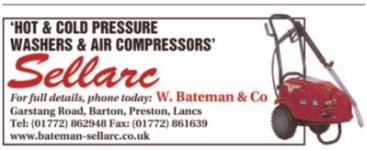
QMS Marketing Director Emma Heath said: “By collaborating with the other levy boards in England, Wales and Northern Ireland to launch this campaign, it ensured consistency of messaging on a nationwide level.
“The first week in September being peak season for availability of new season lamb provides the perfect opportunity to encourage consumers not only to purchase it, but also to experience how easy it is to cook with and how delicious it tastes - the results of the campaign are very promising.”
Results from AHDB showed that its social media content was seen over 5.8 million times including over one-and-a-half million video plays (excluding replays). The organisation also sent recipe leaflets, campaign stickers and children’s activity sheets to thousands of butcher shops and ensured over half a million campaign stickers went on lamb meat packaging across five retailers.
Carrie McDermid, AHDB’s Head of Domestic Marketing, said: “This year’s Love Lamb Week highlighted the passion and unity within our industry, bringing together levy boards, farmers, chefs and consumers to celebrate the versatility of British lamb. The 'Make it Lamb' theme inspired many to explore new recipes,
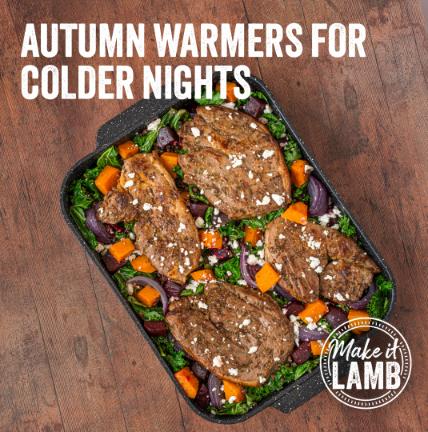
while highlighting the crucial role farmers play in producing high-quality lamb, and we’re thrilled to see the positive impact it has had.”
In Northern Ireland, the LMC chose to launch its 2024-25 post primary education programme during Love Lamb Week. 400 demonstrations were booked within the week, which will give pupils there the opportunity to cook with and taste lamb.
Promotional efforts through both digital and traditional media also returned promising results for the Commission. Social media content reached approximately half a million users, while coverage of LMC’s activity in press had a readership reach of around a quarter of a million. This activity was bolstered by a province wide radio campaign which emphasised the versatility of lamb and encouraged consumers to try cooking lamb recipes.
Commenting, LMC Chief Executive Colin Smith said, “Love Lamb Week shines a light on all the positive attributes of UK sheep production as well as highlighting the versatility of lamb and its nutritional credentials.
“We have a hugely positive story to tell, from farm right through to fork, and every year we look forward to sharing key messages via print, radio and digital platforms throughout the course of the first week in September, as well as launching our education programme.”
There were similar results in Wales with HCC reaching hundreds of thousands of social media accounts and having excellent broadcast results
with Make it Lamb content. HCC also has a dedicated education newsletter where, as part of the campaign, it shared details on the nutritional importance of lamb in children’s diets. HCC’s Head of Strategic Marketing and Connections Laura Pickup said: “Love Lamb Week was an excellent opportunity for us to engage consumers here in Wales, as well as in other parts of the UK, by collaborating with the other levy boards in England, Scotland and Northern Ireland.
“This new consumer-facing initiative, which celebrated everything amazing about lamb, ensured a wide-reaching, category raising national campaign during Love Lamb Week with a consistent look and feel that also allowed for tailored regional messaging.”
Philippa Gill, HCC’s Campaigns Executive, added: “Lamb is such a versatile and high-quality product with many different cuts to discover. Throughout this campaign week promoted the many ways that lamb can be enjoyed, ranging from simple weeknight dinners through to traditional Sunday roasts.”

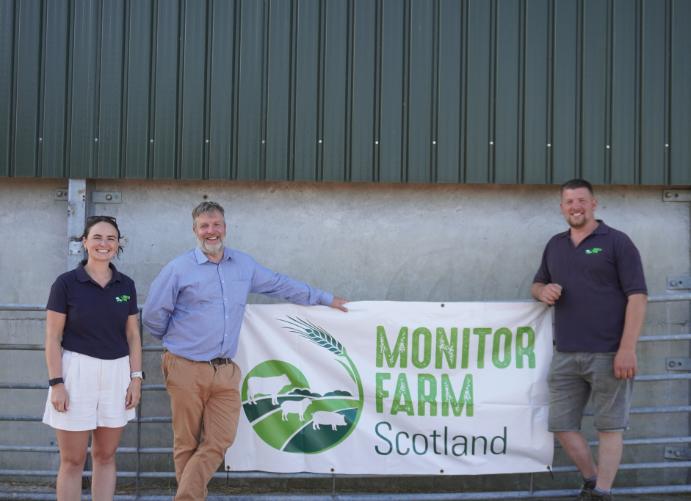
Quality Meat Scotland (QMS) has kickstarted the first of a series of strategic engagements with new and re-elected MPs for Scotland this summer, showcasing the vital role and priorities of the Scottish red meat supply chain. Starting in late July, these visits across government and opposition parties have provided a valuable platform for discussing the industry’s contributions, challenges, and future opportunities.
Lucy Ozanne, Industry Strategy & Public Affairs Manager at QMS commented: "The red meat industry is a vital cornerstone of Scotland’s rural communities as a significant economic contributor and providing jobs across a variety of businesses. Our recent engagements have highlighted the sector’s ongoing evolution, as well as the international recognition it has of producing world-class products.”
As highlighted in QMS's Red Meat Industry Profile 2024, the Scottish red meat sector generates £2.8 billion in output, contributes £839
million in Gross Value Added (GVA), and sustains 39,300 jobs, underscoring its substantial impact on Scotland’s economic landscape.
Lucy Ozanne added: “Our objective with these MP engagements is to ensure that key policy decisionmakers are fully informed and gaining first-hand insight into the opportunities and challenges facing the red meat supply chain in Scotland, and more directly, in their own constituencies.
“Having direct conversations with MPs, we aim to highlight the impact that decisions made in Westminster can have on pressing issues such as trade, labour, and funding. This approach allows us to build a long-term strategy that not only benefits the sector but also strengthens the connections between local producers, processors, and policymakers, ensuring the red meat industry continues to thrive.”

The series of engagements included: Conservative MP Andrew Bowie (West Aberdeenshire and Kincardine)visited
McIntosh Donald, Kepak on 5 August, where he addressed several critical issues affecting the agriculture sector. QMS highlighted the challenges of labour supply through the skilled worker scheme, the importance of multi-annual, ring-fenced funding for agriculture in Scotland from Westminster, the potential issues posed by the upcoming EU Deforestation Regulation implementation, the cost of trade, such as Export Health Certificates
• Labour MP Richard Baker (Central Fife)made a visit to Alex Mitchell Butchers in Glenrothes on 19 August to gain insights into the Scottish red meat supply chain and the industry operations specific to the Mid Fife constituency.

• Liberal Democrat MP Alistair Carmichael (Orkney and Shetland)attended Orkney Mart, focusing on the mart's operations. QMS highlighted the importance of multi-annual, ringfenced funding for agriculture in Scotland from Westminster, and challenges and opportunities in the red meat supply chain specific to Orkney.
Kate Rowell, Chair of QMS commented: “I am deeply encouraged by the proactive engagement of our newly elected and re-elected MPs in the red meat industry. These visits are an invaluable
opportunity for us to showcase the crucial role this sector plays in supporting rural communities, providing jobs, and sustaining our national economy.
“By highlighting the challenges and opportunities within the supply chain, we can ensure our MPs understand the importance of reserved policy support in areas such as immigration and trade in maintaining the long-term sustainability of our industry. Their involvement is key to driving the future growth and resilience of Scotland's red meat sector.”
QMS encourages further dialogue between MPs and the industry and invites other MPs to visit key industry sites. For more information or to arrange a visit, please contact us at externalaffairs@qmscotland.co.uk
In addition, QMS is committed to ongoing engagement with MSPs on devolved matters and at the end of July, met with Scottish Conservative MSP and Convener of the Rural Affairs, Islands and Natural Environment Committee, Finlay Carson (Dumfries and Galloway) at Dumfries Monitor Farm. Discussions centered on Scottish agricultural policy reform and the Monitor Farm programme.
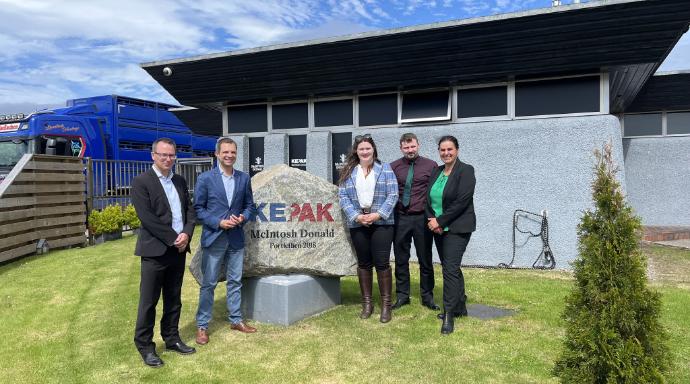
Beekeepers across the UK are calling on consumers to discover for themselves the incredible array of benefits that come with buying a jar of honey from their local producer, ahead of this year’s National Honey Day (21st October).
The British Beekeepers’ Association (BBKA), which represents more than 30,000 members in England and Wales, has launched a ‘Bee Smart, Choose Local’ campaign, to celebrate the unique taste and regional variation of local honey, as well as the positive impact buying from your neighbourhood beekeeper can have on the environment, the regional economy and our general health and wellbeing.
According to the International Trade Centre, the UK imported an average of 50,917 tonnes of honey in 2023. Some of this will have been adulterated, with added sugars, an ultrafiltration process and even the removal of pollen from the final product. Jars and bottles of ‘honey’ can be bought off the shelf for as little as 69p, but often feature a blend of products from a number of different countries.
In contrast, the BBKA is arguing that local honey, means real honey – made by bees collecting nectar from the surrounding environment, travelling straight from the comb to the jar and featuring all the goodness that comes with keeping the final product as close to nature as possible. Native plants vary between regions, meaning that locally produced honey will look and taste different wherever you go, offering an endless array of experiences depending on location and season.
And because the product is extracted and sold within the community, the money spent on a jar of honey will be directly reinvested back into the local economy too, helping to support small businesses and secure the future legacy of beekeeping within the UK.
Diane Drinkwater, Chair of the BBKA, said:
"As a beekeeper I know just how delicious the honey is from my own hive. I'm always keen to try other beekeeper's honey as it really does vary so much. There's a huge range of local honey out there, why not try some from your nearest beekeeper?"
Lynne Ingram, BBKA Honey Ambassador and Chair of the Honey Authenticity Network (HAN), an international collaboration to stop honey fraud, added:
“National Honey Day is a brilliant opportunity to celebrate and taste the wonderful variety of natural honeys produced in the UK.
“Real honey is a delight to eat with the flavours varying according to the flowers visited by the bees, rather than just being uniformly sweet. The colour can range from the palest yellow to almost brown.
“Celebrate British honey this year by buying local and supporting British honey producers.”
As part of the ‘Bee Smart, Choose Local’ campaign, a poster has been created and distributed, providing a link for members of the public to find their nearest beekeeper, and discover the pleasure and benefits of local honey for themselves.
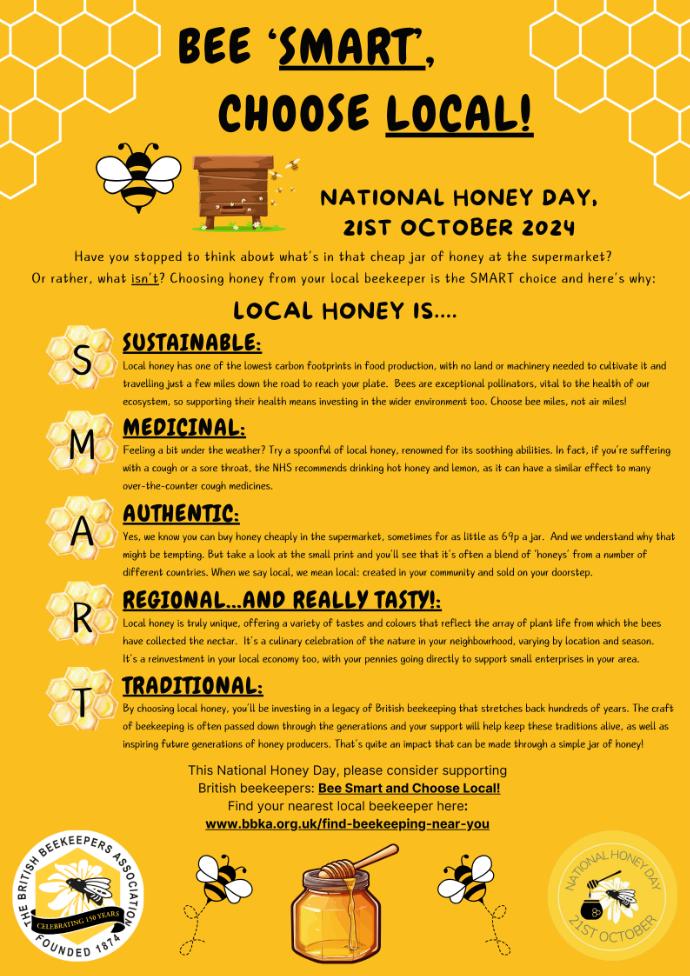
For twelve years theBritish Farming Awardshas been shining a light on the best in British Farming. During this annual event Britain's farming industry comes together to celebrate the achievements of its contemporaries. Pioneering farmers and industry professionals across all sectors were highlighted through fifteen categories such as technology, science, food production and sustainability. With a further three special recognition awards being announced during the evening.
This year saw a record number of award entries, painstakingly shortlisted by our team of judges, with winners of each category being crowned last night (17 October), VOX Birmingham. We are thrilled to introduce the winners of the 2024 British Farming
Awards below:
2024 Winners
Agri-tech Innovator of the Year(sponsored by My Name'5 Doddie Foundation) PES Technologies, Norfolk
Soil health innovator, PES Technologies, has developed a market-leading product designed to analyse soil health instantaneously. This new product is the brainchild of Andrej Porovic, CEO of PES, who discovered a gap in the market following a meeting with experts from the National Institute of Agricultural Botany. Andrej created a handheld device that provides in-field data on over 12 indicators of biological, chemical, and physical soil health in 5 minutes. The judges noted the global potential of this product, alongside the cross sector benefit for all UK based farmers. This product saves time and money, and takes a step in the right direction for the industry. Reflecting upon winning the award, Andrej commented, "I'm absolutely chuffed and surprised, to be recognised for what we've been doing is immense, when we started this is was just a pipe dream. Agriculture is going through massive changes and in our way, we can help farmers, this award announces that we are here."
Agricultural Student of the Year(Sponsored by Richmond Asset Finance)
Holly Bonner, Bridgwater & Taunton College of University Centre Somerset
Holly Bonner's journey from a non-traditional educational path to pursuing a BSc (Hons) in Agricultural Management at Bridgwater & Taunton College of University Centre Somerset reflects her deep commitment to agriculture. Hailing from Devon, Holly initially chose a Level 3 Agricultural Apprenticeship over A-Levels, working on her family farm and gaining diverse experience in livestock sectors and event catering. This hands-on approach fuelled her passion for farming and laid a solid
foundation for her studies. The judges found Holly's commitment to self-growth and pushing herself out of her comfort zone incredibly admirable. Along with her dedication to her studies, Holly's interests outside of education have enabled her to develop a rounded understanding of the wider agricultural industry. Commenting that, "her passion for learning and farming will see her succeed". Discussing the award, Holly commented, "I feel very overwhelmed and it's incredibly humbling, the other finalists are amazing, so I was just expecting to come and have a good night. When I applied for this award, my family and all the people I've worked for got behind me and then I wanted to win this for them." Moving forward, Holly wants to continue encouraging people to join the farming industry.
Arable Farmer of the Year(Sponsored by Maschio Gaspardo)
Nicholas Watts, Vine House Farm, Spalding
Located in the Lincolnshire Fens is Vine House Farm, which until 1992, was a typical 160 Hectare fenland farm intensively farming crops resulting in negative implications for the local wildlife. Nicholas Watts, who owns the farm and runs the business alongside his three daughters and their husbands, noticed a decline in the farmland bird population and sought to rectify this by laying feed for the birds in his farmyards. The resulting influx of birds was such a spectacle that he organised an open day for local residents to view the feeding frenzy, which subsequently led to guests requesting to buy feed for their own gardens. The judges noted that Nicholas has been at the forefront of arable farming for decades, with his longstanding commitment to wildlife, biodiversity, coupled with his adaptability in the face of challenging markets making him the unanimous winner. Nicholas commented on winning the award, "I never thought I would be awarded this, and I'm so pleased that I've been recognised for what I've done for 50 years. The awards recognise the best in the industry, there was four great finalists out there tonight, and I was the lucky one."
Beef Farmer of the Year(sponsored by ABP Foods)
James Herrick, Herrick Partnership, Leicestershire
At Folly Farm, James Herrick is leading a transformative shift from mixed livestock and arable farming to a focus on grassland and suckler cows. This change reflects a strategic review of the farm's operations, with a goal to increase the herd size to 250–300 suckler cows while implementing rotational grazing practices. Inspired by experimentation and a family tradition of farming, James emphasises the importance of soil health and efficient grass management in achieving optimal livestock
performance. James' ability to increase cattle numbers using modern grazing techniques and his willingness to change the breed for the benefit of the system, highlighted his clear business vision, with the judges commenting that, "his enthusiasm could be bottled". When asked about winning the award, James commented, "this is just the start of the journey." Upon the ceremony itself, James said, "It's an amazing celebration of everyone and the hard work they do, it's an excuse to get off the farm, we spend so much time alone on the farm... to come here is a fantastic thing to do."
Content Creator of the Year(Sponsored by Hillsgreen)
William Murray, W&M Brown, Edinburgh
Known as @williammurray93 on TikTok, William has amassed an impressive following of 194,500 across all his platforms. His engaging content showcases the reality of British agriculture, offering followers an authentic glimpse into daily life on his family farm. By sharing behind-the-scenes footage of cattle, sheep, machinery, and contract work, he highlights both the challenges and humorous moments of farming. William aims to educate his audience about the hard work involved in food production, countering misconceptions often perpetuated by mainstream media. With farming at the core of everything William, creates content that engages, educates, and raises awareness for the industry whilst remaining authentically himself. The judges found that his honesty and passion for the industry really shone though, and he provides context that resonates with both farming and consumer audiences. Commenting on his work, William said, "There's so much more to agriculture than is known by the public. Coming to the event and being able to speak to everyone and ask them what's going on, it's such a tight knit community, there's no way you can't fit in. You'll never stop learning things in agriculture."
Contractor of the Year(Sponsored by Farming Community Network)
Nigel Harper, ND Harper Limited, Cheshire
Nigel founded ND Harper Limited 14 years ago, transforming a small contracting business into one of Cheshire's leading agricultural contractors. With roots in potato farming, he began with three silage trailers, a maize drill, and a buck rake. Today, his operation boasts a fleet of 16 Case tractors, two JCB shovels, two foragers, and two combine harvesters, employing 34 dedicated staff members and serving 75 customers within a 10-mile radius. The judges were impressed by Nigel's understanding of the business's operational costs and his focus on building and maintaining his customer base, especially through the option of individual payment plans to suit the cash flow of his customers. Similarly his recognition of the value of staff in the longer-term progression of the business with the introduction of the ability for key members of the team to become shareholders, which integrates them further into the success and direction of the business. Commenting on his win, Nigel said, "This is for my team, my customers and my family. The team of people behind me are the real stars. It's a time to champion British farming, and show people the great work that we do, we're all champions in farming, we need to shout about it."
Dairy Farmer of the Year(Sponsored by Feather Down)
Tom & Karen Halton, Halton Farms Ltd, Cheshire
Tom and Karen Halton, along with their experienced team, farm at Chance Hall Farm, Congleton, Cheshire. The farm is home to 500 ProCROSS dairy cows, producing average annual yields of 11,800 litres, with milk sold via their platform, The Milk Shack. Since its creation, The Milk Shack has developed its offering to include pasteurised milk, milkshakes, cheese, eggs, cakes, butter and much more. Tom and Karen use this as an opportunity to engage with the public, similarly, the couples 'Moobile' Milk Shack which attends local events and food festivals, furthers their integration with the community. The judges found that Tom and Karen are well rounded in every aspect of their business, from disease management, sustainability and staff management, commenting, "they have a firm eye on the future and are also determined to forge great connections with the public". Upon winning the award, the couple commented, "we try so hard to do everything right at home, and just to be acknowledged and be in the top four is amazing, but to win and take it back to everyone at home is everything, we do this as a team, and the cows come first." Commenting on the awards themselves, Karen said, "it's great to put British Farming in the spotlight, we feed people, we're feeding the country."
Diversification of the Year (Small to Medium)(sponsored by NFU Mutual) Cheryl Reeves, Agri-cation CIC, Wrexham
Agri-cation CIC is a community-focused initiative aimed at bridging the gap between urban and rural lifestyles. Cheryl Reeves engages with local charities and organisations, with Agri-cation running weekly sessions with dedicated volunteers, building a vibrant community hub. They collaborate with organisations like Woody's Lodge and North Wales Wildlife Trust to support veterans and promote environmental education. Agri-cation CIC also focuses on reducing unemployment in Wrexham by partnering with the DWP to develop bespoke programs that help individuals transition back into the workforce. Their outreach extends to Berwyn Prison, where they aim to engage inmates with farming backgrounds or interests, providing opportunities for reintegration. The judges noting this as a key reason for the win, commenting, "social impact needs a special mention in terms of helping disadvantaged, rehabilitating offenders, getting people into farming from nonfarming backgrounds". When commenting on what the award means to her, Cheryl said, "it's the recognition, we work really really hard as farmers and this is recognising the amount of work that we put in."
Diversification of the Year (Large)(sponsored by Sykes Holiday Cottages)
Ed Foster, The Rhynd, JLW Foster, Fife
Ed Foster oversees a diverse range of businesses at The Rhynd, which includes a gym, café, event space, clay ground, and livery stable. With a focus on customer satisfaction, Ed and his team aim to create enjoyable experiences for visitors. They continually seek to improve facilities and offerings based on
feedback. Since Ed took over, The Rhynd has significantly evolved, with diversification providing a stable income throughout the year. Strategic development of services, including expanding the event space and enhancing the café, has attracted more visitors. Ed emphasises teamwork, ensuring staff are engaged and motivated. The judges saw the diversification of the arable unit at Craigie Farm as a pivotal moment in the businesses' 100 year history, with a wide range of offerings, the farm is now secured for the future. Commenting on the win, Ed said, "we've got an amazing team, it's a stamp to say we're on the right path, to come here for the first time is an honour. Preserve... it's not easy, do something you love."
Family Farming Business of the Year(sponsored by Goodyear Farm Tires)
The Ladds Family, R & E Ladds, Cumbria
The Ladds Family, operating as R & E Ladds, runs a mixed farm with 200 Holstein cows, averaging 36-38 litres of milk per day through twice-daily milking. Alongside dairy, they manage 800 Texel cross and North of England Mule ewes, as well as 35 pedigree Texel ewes for breeding shearling tups. Their farm contracting services cover forage harvesting, round baling, slurry work, and GPS-controlled fertiliser spreading. They also operate a 45-site static caravan park established post-foot-and-mouth disease, diversifying their income streams. Additionally, they partner with Kendal College, hosting practical classes and providing valuable hands-on experience for students. With business sustainability that is second to none and a focus on supporting future farming generations, the judges were impressed by their practical approach to cost management, healthy risk taking and honest, passionate and down-to-earth nature. Upon winning the award the family commented, "we are absolutely ecstatic, amazed and dumbfounded to have won. The background to most farms is a family, and my family was raised along with the farm, and now the next generation has families of their own and are doing the same."
Farm Worker of the Year(sponsored by Isuzu)
Andy Lambert, Hellifield Highland fold, North Yorkshire
Andy Lambert has been assisting Robert and Wendy Phillip at Hellifield Highland Fold for several years. The farm breeds pedigree Highland cattle and replacement heifers on a grassfed production system which supplies Waitrose at Christmas. The farm breeds pedigree bulls that are successfully hired out to highland folds for breeding, with offspring being brought back into the farm to ensure a constant supply of beef throughout the year. Environmentally, the cattle conservation graze moorland to aid the management of different grasses, ensuring the wildlife remains diverse and healthy. His herd of Swaledale ewes also supply the meat for high-end restaurants around the UK. The judges were impressed with his selfless dedication to maintain and develop, not only his own business, but managed his neighbours business through, stating that he "lives and breathes farming life, a true farming hero". Andy commented on his win, saying, "when you know what goes on behind the scenes, it means so much and it's a super evening celebrating the best in British agriculture. I
just love my job, I love getting up in the morning. If people realised what went on behind the scenes, they'd appreciate food doesn't just turn up on supermarket shelves, there's a lot that goes into it."
Farmer of the Year(sponsored by Germinal)
Andy Goodwin, D & P Hollinshead, Cheshire
Andy Goodwin runs Dayhouse Green Farm in Cheshire, which spans 155 hectares, including some rented land. In 2020, Andy and his wife Katy took over the family farm after her father had an accident. Over the first year, they modernised the farm, introduced a new herd, and invested in infrastructure like water systems and tracks. The farm operates with 300 autumn-calving cows, focusing on high-fat, highprotein milk for their contract with Joseph Heler. Cows graze from March to mid-October on a 95% grass diet, thanks to meticulous grazing management, measuring and recording results throughAgrinet. Andy is committed to improving forage production, reducing waste in the herd, and continuously enhancing soil health. The farm also engages with the local community, hosting school visits to educate the public about sustainable farming practices. The judges were impressed with Andys commitment to sustainability and his initiative in transitioning from a traditional system to a specialised grass-based operation. They commented that he, "demonstrates a strong commitment to reducing carbon footprint, improving soil health, enhancing efficiency and including community". Upon winning, Andy commenting, "we enjoy what we do, or we wouldn't be doing it, it's an honour and a privilege, as its been a difficult twelve months, but we're really pleased to be nominated and win. It's great to have so many farmers and likeminded people in the room. I'm really passionate about what we do, we're doing a good job."
New Entrant Award: Against the Odds(sponsored by Massey Ferguson)
Sam & Samantha Edwards, Edwards Farming Partnership, Dorset
Edwards Farming Partnership is a livestock-based business in the heart of Dorset, originally set up as a hobby with just a handful of ewes grazing small pony paddocks. It has grown into a flock of more than 700 ewes producing prime lambs solely from a grazing and forage-based system. With an emphasis on producing lamb as cheaply as possible while keeping margins high and output maximised, the partnership has focused on genetics to enhance business performance. Operating entirely on grazing licenses, without buildings or fixed-base tenancies, they have created a flexible business model that allows for adjustment without significantly impacting performance. The judges were impressed with Sam and Samantha's clear passion for the industry, overcoming setbacks and challenges to achieve what they have on the farm today. They commented that, "their forward-thinking and innovative approach, alongside the effort they have put into their farm in Dorset as tenant farmers has clearly made them stand out among our wonderful set of candidates".Commenting on the win, Sam and Samantha said, "we are overwhelmed by the award, we've tried so hard to take every opportunity and
make every opportunity we can, alongside the support of our family and local farming community, that's how we make it work, we are so determined." When asked about what this award means for new entrants for farming, they said, "this award will inspire people - if someone picked up a copy of Farmers Guardian, read about the awards and thought they could have a go to, that's what this award means."
Farmer of the Year(Sponsored by Shine Ewe-reka)
At Aimshaugh, Oliver Harrison manages an upland sheep unit comprising 600 North Country Hill Cheviots and 600 Cheviot crosses, utilising a mob grazing system to enhance productivity and promote biodiversity across 850 hectares. Oliver and his family have adapted their farming practices to suit the unique conditions of their land, focusing on sustainability.Transitioning to a paddock grazing system has allowed Oliver to improve grass quality while encouraging wildlife to flourish on the farm. This method not only benefits the sheep but also contributes positively to the surrounding ecosystem. As they tackle labour shortages, the Harrison family is actively seeking new team members to help support their growing operation. Commenting on Olivers success at the awards, the judges commented that he, "demonstrated a progressive and forward thinking approach and has made changes which have improved productivity and profitability". Commenting on winning and the awards, Oliver said, "it means the world that we've been noticed for what we do, I live for it, ever since I was tiny this is what I have wanted to do. It's a massive family effort. Farming is an industry that needs bringing together and that is what the awards do."
Sustainable Farmer of the Year(sponsored by NSF) Johnny Wake, Courteenhall Farms, Northamptonshire Courteenhall Farms, under the management of Johnny Wake, spans 570 acres and is a model of sustainable and diversified farming practices. The farm combines arable crops with innovative practices to strengthen environmental stewardship, community engagement, and financial stability. Johnny utilises key sustainable practices such as regenerative farming, circular agriculture, renewable energy, biodiversity and conservation, and community education. The judges were impressed with the breadth of the 350-year-old estate's sustainable enterprises which span across renewable energy and rainwater harvesting, regenerative farming practices which have boosted soil organic matter and various stewardship schemes which deliver for nature.They saw that "Courteenhall's approach to sustainability has helped the estate make significant improvements in profitability whilst also improving soils and wildlife". Upon winning the award, Johnny commented, "I'm blown away, this means recognition for the whole team, they have put in so much work over the past few years and this award is for them. We are planning for the future, working with our community through schools, and bringing wildlife back to the farm. Engaging with the community is our license to practice, our license to farm."
Outstanding Contribution to British Agriculture(sponsored by The Ethical Butcher)
Andy and Lynda Eadon tragically lost their son Len to suicide in early 2022, at the age of 22. Despite their profound grief, they have been dedicated to raising awareness about mental health in the farming community, aiming to prevent similar tragedies. Through their initiative "Len's Light," they have raised over £170,000 for mental health charities, including the Farming Community Network, Yellow Wellies, and Papyrus. They also organised a tractor rally from John O'Groats to Land's End, visiting agricultural sites and even Westminster, to highlight the importance of mental health support in rural areas and honour Len's memory. Commenting on winning this award, the Eadon's said, "this really means a tribute to our son, obviously he was the main part of our life, and since the loss of him we've tried to stop other families and communities going through that heart ache we have. Thank you so much to Farmers Guardian for this dedication to our son. It means so much to the pair of us, if the rural community gets together for social events more often, rather than a death of a loss. We do what we feel we need to do, and that's what has motivated us all along, right from the very beginning, we wanted to keep up awareness, and keep the whole problem very much alive in people's minds."
Farming Hero: Flying the Flag for British Agriculture(sponsored by Eternit)
Abi Reader – NFU Cymru Deputy President.
Abi's unwavering dedication to Welsh agriculture and her role as a champion for Welsh farming has made her the 2024 Farming Hero. As NFU Cymru's deputy president, she balances responsibilities on her family dairy farm with representing and advocating for farmers across Wales. Abi has been at the forefront of addressing challenges such as the Sustainable Farming Scheme, which has caused concern within the industry. Her leadership was pivotal in organising the wellies protest outside the Senedd, symbolising the potential job losses in the sector. Her tireless efforts make her a powerful voice for Welsh farming. Commenting on what the award means, Abi said, "It's amazing to think I've made a difference, the cows always have to be fed, and that goes for everything, it's the ethos of farming, everyone in the country has to be fed... and this is a great opportunity to share in everybody's success."
New for 2024 – Service to the Industry(Sponsored by Farmers Guardian)
Raymond Lund
Raymond Lund is an incredible asset to the farming community and a legend in the auctioneering world. Following 38 years of selling at Hawes Auction Mart, he is hanging up his gavel to retire. Commenting on his recognition at the awards, Raymond said, "I've always worked for the farming community, to get something like this is a great honour." He discussed the incredible importance of the auction Mart, saying, "this is where the price is fixed and the price is made." Planning on celebrating at the awards, he said, "carriages leave at 1:30, I might leave at 3."
The sprawling 12,500-acre organic farm estate, near Corwen in North Wales, has up to 3,000 pumpkins ready for picking.
And following the success of last year’s spooky celebrations, the Estate will hold a six-day programme of events, beginning on Saturday October 26.
Rhug’s first-ever Pumpkin Festival is expected to attract thousands of people from across North Wales and beyond, with a series of special guests including the team from Animal Encounters and their Face Your Fears workshops, complete with creepy crawlies, reptiles and spiders.
Rhug Estate owner Lord Newborough said: “Last year’s Halloween celebrations were so popular we decided to do more for our loyal customers and visitors this autumn.
“The organic pumpkin picking was a huge hit with families, so we have introduced further activities across the Estate, to make it an even more fun – and frightening! - experience.”
There will also be foraged fun sessions courtesy of Living Wild’s Witches and Webs, ghastly games, a frightening twist on the farm walk, and warm treats – including monstrous marshmallows and horrific hot chocolate - to enjoy from the award-winning shop, café, On the Hoof takeaway, and drive thru. You can even craft your own witch’s broom, magic wand, spider’s web or ghosts and ghouls. Estate Farm Manager Emyr Owen, from Llanrwst, added: “There will be lots to keep children and parents entertained, so we look forward to welcoming people for a spooky and unforgettable half-term at Rhug.”
On arrival there will be signs around the car park and farm shop with directions to the pumpkin patch and attractions. There will also be an activities sheet and map available from the farm shop. Booking is only required for the workshops, not the pumpkin picking.
For more information, visit:Pumpkin Festival | Rhug Estate.
The team at Rhug Estate would love to see your pictures on Instagram so be sure to add the hashtags #rhugpumpkins and #pwmpenrhug to your posts so they can like and share!
For the latest news and information from Rhug Estate, including a programme of events for the rest of 2024, visit the websitewww.rhug. co.ukand follow @rhugestate on social media.

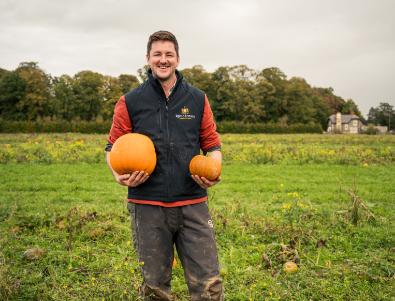

TheSoil Association has responded to today's announcement by Defra that itwill introduce new legislation to support precision breeding.
Soil Association Director of Policy
Brendan Costelloe said: “We are disappointed with Defra's commitment to push forward with PBOs in spite of public opinion, and the risks this could pose to our ability to trade organic produce. It is, therefore, vital to both consumer confidence and the organic sector that the right statutory instruments are now put in place ensure full transparency of PBOs with clear labelling to reassureand protect consumer choice, secure the organic and GMO Free sector and protect trade. We are absolutely determined to work with Defra to deliver these reassurances.
“This is critical for the entire organic food sector to maintain the legal standards required and to ensure that the thousands of organic businesses in the UK can trade with Europe and with other countries who have exclusions on Genetically Modified Organisms including PBOs. We must avoid any barriers to consumer choice and trade at all costs – the organic food sector is worth over £3.2 billion."
The Soil Association has been consistent in calling for the following to be introduced in the statutory instruments:
• An appropriate, robust notification and registration system for gene-edited products to
ensurethat only products that meet the requirement of the Precision Bred (Genetic Technologies) Act are being declared as PBOs.
• Mandatory requirements for the identification and traceability of PBO’s in a supply chain – to be appropriate for all supply chains and include requirements when used in breeding and along generations and to enable them to be excluded where specific supply chains, like organic, require it.
• Appropriate risk assessments (to include risks to the environment, biodiversity and animal welfare) of the genetic changes taking place before they can be released or sold as food or feed (with enough information released to enable analysis to be carried out to identify/ verify their presence in a product).
• Identification (i.e labelling) at the point of sale of products containing GE ingredients to enable consumers and supply chains to make a choice of whether to use them or not.
Brendan said: “Defra’s own public consultation showed that 85% of the public had genuine misgivings about gene-editing and its long-term unforeseen implications and wanted to see clear labelling of any foods containing GE ingredients and robust system of tracing and licensing producers using GE ingredients.”

The UK farming unions have written to Food Security Minister Daniel Zeichner to raise concerns overpossiblechanges to the new dairy contracts legislation.
The Fair Dealing Obligations (Milk) Regulations 2024have only recently come into force. More than a decadeon from the SoSDairyCampaign and after years of intense campaigning from the UK farming unionscalling outunfair practices and abuses of power in thedairysupply chain, these regulations introduce hard won safeguards.
The new regulations, following full consultation with the dairy sector, are designed to ensure fair and transparentcontractsfor all dairyfarmers by stoppingcontractchanges being imposed without agreement.
It's understood thepotentialchanges relate to exclusivity and theunintended consequences of the tiered pricing provisions within the regulations.
The UK farming unions said: "Historically, contracts have allowed milk buyers to have complete discretion over the price paid for milk and exclusivity over all of the milk produced on a dairy farm.
"A cornerstone of the new legislation was designed to sever this control over both price and volume, allowing a dairy farmer access to a non-exclusive agreement enabling them to be able to market some of their milk elsewhere when it is not desired by the primary purchaser.
"We understand governmentis proposingto change this to allow for aspecificinterpretationof tiered pricingthat encompasses both aprice bonus and penalty linked to seasonal milk volumes – this wouldeffectively allow the milk buyer to discount certain litres of a farm's milk, even where a contract is exclusive.
"The UK farming unions have always believed that the ability for milk buyers to control both price and volumes of milk on a dairy farm should be separated. We cannot see any reason why anyone would object to a farmer being free to market their excess milk to a third party should their primary purchaser be discounting it.
"We share the Food Security Minister's desire to improve fairness in the dairy supply chain, but these proposed changes would act against the best interests of dairy farmers. That is why we have written to him seeking further clarification and a proposed solutionwithout delay."
While it is positive that the Seasonal Workers Scheme (SWS) has been confirmed by the government for 20251, it is essential to our food security and environmental delivery that horticulture and poultry businesses get the certainty of a long-term scheme they can plan around, says the NFU.
The NFU has been pressing the critical role that seasonal workers have in the UK’s farming and growing businesses with the government for several months and prior to that over a number of years when they were in opposition2. It is good to see that the government recognised the positive experience the vast majority of workers have with farmers and growers in the UK, following 95% of respondents expressing a desire to return to the UK in the Seasonal Worker’s Survey.
NFU President Tom Bradshaw said: “For the many horticulture and poultry businesses that produce climate-friendly food and plants for the country, this news will be a relief as they will be able to plan for the year ahead. But farming and growing businesses don’t just work on year-to-year production cycles, they plan their business operations years ahead.
“As has been widely reported confidence of farmers and growers is at an all-time low and worker availability has been a significant barrier to growth – a key mission of the new government. Horticulture and poultry businesses in the UK both have the ambition to grow, but essential to this is long-term certainty. The recent recommendations by the Migration Advisory Committee (MAC) recognised how significantly important the SWS is to domestic food security and the vital need for a long-term scheme. We urge the government to publish its response to the MAC report as soon as possible, to give farming and growing businesses the confidence needed to invest in the country’s food security and deliver for its environmental targets.
“We don’t want to see a return to empty supermarket shelves or further years where £22 million of crops are left to rot in the fields and we want to ensure consumers have access to their favourite Christmas centrepiece during the festive season. We have an ambitious industry that wants to drive productivity to support the health and wellbeing of our nation, but action is needed to make this a reality.
Movingforward we need to see assurances of a longterm SWS and the government’s response to the MAC report.”
MPs from across the House of Commons called on the government to deliver an increased agriculture budget after an opposition debate day raised the importance of farming to Britain’s food security, environment and economic growth.
There was cross party consensus throughout the debate that food security is national security. The agriculture budget is essential to investing in the farming and growing businesses that underpin the future of food and deliver for the environment.
NFU President Tom Bradshaw said:“As we saw in the debate, food is not partisan. It should not be a kicked around like a rotten pumpkin. The farming and growing businesses that produce food need long-term certainty so they can plan and invest for the future. The number one way to do this is to ensure we have a strategy to boost Britain’s food security, and this must be invested in and supported by an increased agriculture budget.”
During the debate:
• Defra Secretary Steve Reed reiterated that “farming and food security are the foundations of our economy, our communities and indeed our environment.”
• Shadow Defra Secretary Steve Barclay pressed that “if we don’t support our farmers now, many farm businesses say they’re unlikely to survive.”
• Liberal Democrat Efra spokesperson Tim Farron MP highlighted how farmers are “utterly invaluable in the fight against climate change.”
Mr. Bradshaw continued:“Over the first 100 days of this new government and ahead of the election, British farmers and growers have experienced a period of policy paralysis as they wait – surrounded by flooded fields and failed crops – for news of promises to reset the government’s relationship with British farming and invest in its future. This must start with all
departments across Whitehall creating policies that assess the impact on our nation’s ability to feed itself, as well as take advantage of growth export markets and trade.
“High costs, record inflation, low farm returns and the persistent bad weather has resulted in a collapse in farmer confidence, which is at its lowest level since records began. This October budget is key to delivering certainty to our food producing businesses, food security and environmental targets, all of which contribute to the government’s missions for growth and prosperity.
“The Chancellor recently held an ‘I’m backing British farming’ sign at our Labour Party conference stand.The Defra Secretary Steve Reed said at our Back British Farming Day parliamentary reception he was ‘making the case to Treasury to maximise support for farmers’. And the Food Security Minister Daniel Zeichner has been on farm six times in the last 100 days. There are countless examples of the government showing they value British farming, but these gestures and warm words must now be backed up by policy action.
“We’re at a tipping point in British farming, the bedrock of the industry that contributes £148 billion to the economy and provides 4.2 million jobs1. It is vital the government recognises this on the 30thOctober and give farmers and growers the confidence needed to invest in the future and deliver on our joint ambitions for growth, food security and the environment.
“That is why we’re asking the government to back British farming by delivering a renewed multi-year annual agriculture budget of £5.6 billion2, the majority of which is needed to deliver the government’s environmental goals, with the remainder looking to drive productivity and support the economic stability of farm businesses, all supporting the health and wellbeing of our nation.
“Now is the time to make our voices heard.I urge all members to use our campaigning letter template3to write to their MP to tell them why the agriculture budget is so important to their businesses. It’s vital we show that this is an issue that affects farmers across the whole of the country.”
Environmental and financial sustainability will take centre stage at the 2024 Larking Gowen Autumn Farming Conference. After two successful annual events at venues in East Suffolk, it will be held in the west of the county, at All Saints Hotel, Fornham St. Genevive, Bury St Edmunds, on Tuesday 5 November 2024. Aimed at farmers, growers, landowners and the agricultural / rural business sector, this insightful event is organised by Larking Gowen, supported by the Country Land and Business Association (CLA).
A major regional independent accountancy partnership Larking Gowen is one of the UK’s top 50 accountancy firms, its Farms and Rural Business division having one of the largest teams of agricultural specialists in East Anglia and beyond, with five partners and 50 FTE staff serving over 800 clients farming 400,000 acres.
The Country Land and Business Association (CLA) is the membership organisation for owners of land, property and businesses in rural England and Wales.
The event will be hosted by Bruce Masson, the Larking Gowen partner who originated it, supported by two of the firm’s other partners Steven Rudd, Head of the Farms and Rural Business team, and Laurie Hill.
“This year’s Autumn Farming Conference will highlight the options available to help farmers put their businesses on a sure footing for the future,” Bruce states. “The emphasis will be on delivering practical information and advice in the areas of environmental schemes and reporting which delegates can apply to their own situation.
“The extreme weather-related challenges which many farming businesses faced last season resulted in lower yields and profitability, compounded by volatile input and commodity prices. The closure of the Basic Payment Scheme in 2023 in favour of delinked payments from 2024 to 2027 has exacerbated
these issues.
The financial impact of these events is now being felt by farming businesses, which to recover and remain viable will need to maintain a high degree of flexibility, optimise their use of available resources and focus on long-term solutions rather than short-term fixes. We have seen a surge of interest in agri-environment initiatives, but before committing to any changes farmers must consider all their options and discuss them with a professional adviser, as schemes such as the Sustainable Farming Incentive (SFI) will be right for some but not for others.”
The event will be Chaired by CLA East Director Cath Crowther, who comments: “At a time of significant change and uncertainty, the Autumn Farming Conference provides the perfect opportunity to get together and discuss key challenges and opportunities for the agricultural sector. The CLA is delighted to be involved in an event where you can hear from a range of experts, gain unique insights and network with others in the industry.”
Headline sponsor, Alan Boswell Group, is an insurance and financial planning group with 40 years’ experience. One of the largest independent insurance brokers in the UK, it has 400 members of staff at eight offices in Norfolk, Suffolk, Lincolnshire and Cambridgeshire. Chris Gibbs, Managing Director, states: "We are pleased to sponsor this year’s Autumn Farming Conference, acknowledging the crucial role farmers and agriculture play in supporting both our local communities and the wider economy.”
The conference is also being supported by Ashtons Legal and Virgin Money.
Toby Whittacker-Cook of Ashtons Legal comments: “Ashtons Legal are proud to be sponsoring Larking Gowen’s upcoming farming conference. Like Larking Gowen, we know the landscape of East Anglia well. Our Agriculture Solicitors have been helping many of the region’s agricultural businesses, both large and
small, for many years. We understand that farms and estates are much more than businesses. They are homes and often financial centres for extended families. Understanding both the commercial and the cultural aspects of farming and the wider agricultural sector is essential background to providing an effective legal service. We look forward to meeting conference attendees on our stand at the event, catching up with business owners we know, and having the chance to meet new contacts.”
Oliver Maxey, Head of Agriculture, Virgin Money, adds: “Virgin Money Agriculture are delighted to sponsor the Autumn Farming Conference given the great line-up of speakers who will be talking about all the key aspects of farming as it shapes up for the challenges ahead. The many Relationship Managers within Virgin Money Agriculture remain focused on supporting and serving the bank’s customers.”
The 2024 Autumn Farming Conference will include presentations from a range of speakers, all experts in their respective fields. Collectively, they will provide a valuable insight into where we are as an industry, the headwinds facing the farming sector, the opportunities for businesses which position themselves correctly, together with an insight into the future direction of travel. Full details of the topics, speakers and sponsors are currently being finalising.
The speakers include Abigail Maynard, Agricultural Environmental Consultant, Divisional Partner, Brown & Co who will talk through the myriad options when it comes to Environmental, Social and Governance (ESG) and Biodiversity Net Gain (BNG) schemes. The government defines BNG as a way of creating and improving natural habitats as well as making sure development has a measurable positive impact on biodiversity, compared to what was there before.
Michelle Masson, a Fellow Chartered Accountant (FCA) who is trained in Landed Estates and associated business, will discuss the ‘why’ and ‘how’ of ‘Sustainability & Carbon Reporting,’ a new area for many in the farming industry. Michelle, who has worked across many sectors in recent years providing support in Streamlined Energy and Carbon Reporting (SECR), and developing baseline carbon reporting, will outline how to get started and planning for the future.
The initial presentations will be followed by an ESG panel discussion and coffee at 10.30, following which Sam Steggles, owner of awardwinning farm business The Goat Shed at Honingham near Norwich, will outline his inspirational diversification journey over the last 15 years, charting how he went from dreaming about becoming an artisan cheese producer to running an award-winning customer-focussed farm-based business. Underlining the fact that there are always opportunities ‘out there’ this year has seen the biggest evolution in the Goat Shed’s history, its farm shop doubling in size to offer a new deli, bakery and butchery, paddock area and maize maze to help connect visitors to the land and animals.
Edward Vipond, Farms Manager for Troston Farms Ltd at Stanton in Suffolk, will outline how the business is positioning for the future by using technology to help balance the requirements of food production and the environment. Since 2015 when he joined Troston Farms, which is owned by the Claas family, one of the world’s largest farm machinery manufacturers, Edward has managed significant change and growth. In 2021 he won Farmers Weekly’s ‘Farmer of the Year’ and Farm Manager of the Year’ Awards.
The event will conclude with a joint presentation by Chris Gibbs and Bruce Masson highlighting how to navigate the plethora of red tape surrounding Inheritance Tax and succession planning, a topic which has become very topical since the current government came to power. Given that the Autumn Budget will be on Wednesday 30 October 2024 there will likely be plenty of questions from delegates on the impact of the Chancellor of the Exchequer’s measures.
Charity partners for the 2024 Autumn Farming Conference are YANA (You Are Not Alone), which provides mental health support for the farming and rural community, and RABI, which provides practical, financial and emotional support to the farming community. All profits will go to these much-admired organisations.
Further details of the Autumn Farming Conference are available at www.larkinggowen.co.uk/AFC and tickets, costing £25£15 for students - can be booked online. The event will start with arrival/registration from 07.45, bacon rolls and drinks being served on arrival. A hot lunch will be available at 13.30 and the event will conclude at 14.30.
owan is reminding farmers and contractors intending to apply Avadex Excel (tri-allate) this autumn that they offer free dummy granules for effective applicator calibration.
The dummy granules can be used up to three times before they need to be replaced, and farmers can request them through the Gowan website, says Hank King, Gowan country manager.
“These are the same granules that are used in the product, just without the active ingredient, and they closely reflect the product. Using dummy granules ensures the most accurate calibration.”
“Accurate calibration is important for product stewardship, which is complementary to efficacy. Grass weed control is a huge challenge, and we want to ensure growers get the most from the herbicides they use,” adds Hank.
Oxfordshire farmer and contractor Will Hazell utilises a Techneat applicator mounted to a 24m Sands self-propelled sprayer. He farms light brash and sandy soils, whereas the main customer base for his Avadex spreading service is further east on heavy clay land, which tends to have more challenges with grass weeds.
weed concerns to drill the bulk of their crops well into October.
The benefit of applying Avadex with a drill-mounted applicator is that a farmer is guaranteed a robust start to their herbicide program if the weather changes and compromises following pre-emergence applications, says Hank. Additionally, it saves the cost of an additional pass to apply Avadex Excel separately.
“Given the uncertain weather we have seen over the last few years at drilling time, it makes complete sense to take this approach where possible.”
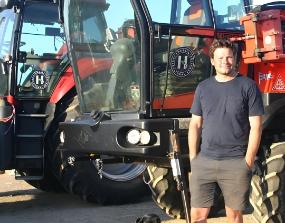
Will spent some time with the Techneat experts calibrating his applicator. Combined with GPS autosteer on the Sams sprayer, he finds the Avadex application highly accurate.
“The Avadex (granule size) is so consistent out of the bag. Once you have it set right, it tends to run well for the whole season,” explains Will.
From a peak of applying 2,000 Ha per season of Avadex to customers’ farms, demand for spreading contractors in the areas has reduced locally, according to Will.
“I wouldn’t say the usage of Avadex has gone down. With the grants available, a lot of people have bought new drills, and they tend to spend a little extra to have an Avadex applicator fitted to the back.
“I know some farmers who won’t even think about planting wheat without using Avadex,” adds Will.
Despite the challenges establishing crops last autumn, Will still expects most heavy land growers with grass
Hank has further advice for the growing number of farmers applying Avadex Excel at drilling.
“The most important requirement is that the product is applied according to the label and, being a pesticide, the drill operator must be PA4G qualified if the application is to be made in the same pass as the drilling operation.
“The granulator applicator also needs to be calibrated in its own right and include patternation testing. The aim is uniform coverage across the drill width for best efficacy,” explains Hank.
When using Avadex, Hank advises operators to sow winter wheat below 40mm. The crop seeds can potentially germinate within the herbicide residual layer in the soil if it is sown shallower than this. It is also essential that the drill slots are adequately closed and the seed covered before Avadex is spread at the back of the drill.
“Drills can often be run at a decent forward speed, but operators must remember that they need to drill at the speed of the slowest operation. In some cases, this means slowing down to ensure optimum Avadex coverage.
“It is the same for weather conditions. Drilling can carry on in substantial winds without a problem, but this is not true for Avadex spreading,” Hank adds.
Rolling will consolidate the seedbed, which aids crop establishment, reduces slug activity and provides better conditions for the efficacy of pre-emergent herbicides. However, the 40mm drilling depth needs to be maintained to ensure the safety of the crop, and whilst Hank has seen no issues with rolling after applying Avadex Excel with the drill, the seed depth must not compromised due to the rolling action.
The Agriculture and Horticulture Development Board (AHDB) have released theirsixth and final harvest reportof the 2024/25 season, with data from the Met Office highlighting how dry weather towards the beginning of harvest gave way to frustrating delays towards the end.
With harvesting of cereals and oilseeds now complete for all farmers in AHDB's survey across the UK, the report looks back at the results of the 2024harvest.
Helen Plant, AHDB Senior Analyst (Cereals & Oilseeds), said: "Despite being planted later than usual, spring crops generally fared much better than winter crops, which had a very tough start with the second wettest August through Februarysince 1837, when records began."
Weather conditions were favourable during much of the 2024 wheat harvest, and 88% was cut by 28 August, well ahead of the five-year average of 60% complete at that stage. But progress slowed down notably in September as rain and humid conditions led to interruptions.Yields are estimated to be down 7% on average across the UK, at 7.5t/ha.While some growers have managed to produce high yields given the circumstances, many have seen significant drops.
The barley harvest (both winter and spring) is now
complete and quality has been good, with good germination scores reported, but low nitrogen levels.Moisture content of spring barley samples increased on average as the harvest progressed into Scotland.However, moisture adjusted yields were only reported to be down 3% on the five-year average level across the UK.
There was a noticeable improvement in performance across oats towards the end of harvest, reflecting the transition from winter oats to spring oats. The winter crop was, generally, established in poor conditions, but while many spring oats were planted much later than usual, they had a favourable start. Oat yields (winter and spring crops combined) in the UK were just 2% below the five-year average.
Oilseed rape quality has been good this season, with oil content high. Yields have been variable from region to region and are down 8% on average, at 2.97t/ha.
Helen added: "It is evident just how variable yields are from region-to-region, farm-to-farm, and field-to-field. This is not surprising given the unusual weather we have experienced, but the larger drop in yields for some businesses will pose significant cash flow challenges.
"With harvest complete attention is now turning to establishing the 2025 crop.Many will be eager to get winter cereals in the ground considering last year's extremely wet autumn and winter conditions."

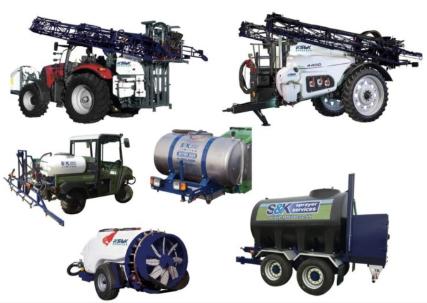

he British On-Farm Innovation Network (BOFIN) is looking for farmers to become 'PROBITY Pathfinders', taking a vital role in thePlatform to Rate Organisms Bred for Improved Traits and Yield (PROBITY) project.
The main responsibility of the PROBITY Pathfinders will be to drive discussion on precision breeding and share insights with the wider agricultural community.
Tom Allen Stevens added: "Our Pathfinders will act as project ambassadors and help build the community to include as many farmers as possible. Then together with scientists, plant-breeding representatives and other industry innovators our ambition is that it becomes a hive of activity, with ongoing discussion to steer the project going forward."
The PROBITY project launched in August this year. It is a three-year,£2.2m farmer-led project, funded by Defra's Farming Innovation Programme. Defra is working in partnership with Innovate UK, theUK's Innovation agency, who are delivering the programme.


Tom Allen-Stevens, founder of BOFIN said: "The SequenceCircle is our community to lead discussion on precision-bred crops and help steer the PROBITY project. It launches next month and we need farmers who are motivated to generate open discussion and help us push forward with the project.
"As with all BOFIN projects the Pathfinders will receive a payment for their involvement."
The Sequence Circle includes a moderated discussion forum and resource hub which will be launched as part of a special event at this year's CropTec.
In 2025-6 up to 25 English farms will participate in onfarm trials which will see the first geneedited crops to be grown on commercial farms in Europe. In the meantime the project's activities include multiplying up seed of three varieties created through geneediting.
Tom Allen-Stevens concluded: " This project has the potential to bring about a revolution in how we grow cereals. I encourage anyone wanting to be part of this pivotal project to apply to become a PROBITY Pathfinder."
Suitable candidates for the role are arable farmers who are seen as thought-leaders within the industry, with effective credible networks and existing platforms with which they engage with other farmers. They do not have to support precision breeding but should have a track record of supporting evidence-based and informed opinion and preferably a passion for innovation.
For more information on the project and the PROBITY Pathfinder role visit probityproject.co.uk
This October, British farmers will benefit from an innovative decision-making tool designed to help optimise phosphorus use efficiency in crop production.
Developed by Unium Bioscience, ‘Phosphate Power’ is a free, easy to use online tool that helps farmers assess the phosphorus biological availability in their soils with just a post code entry. A critical nutrient during germination and establishment phases, phosphorus availability can often be limited by various soil and environmental factors.
Phosphate Power offers tailored recommendations depending on the phosphate bioavailability in the soil. By using the phosphorus index, based on peer-reviewed data, it informs farmers whether their soils are biologically optimised to provide what the crop needs.


October to April,” says John.
“Depending upon your soil P levels, it will help to dictate whether you need to mine reserves - the only way to do this is to push out more roots, more active roots in terms of pushing out more exudates to feed soil biology or by supplying an efficient form of phosphorus—organic or inorganic—based on your soil’s pH, placing it strategically near the root structure, or using effective foliar treatments for optimal uptake,” he says.
This model is the next step to help farmers make informed decisions, question practices or recommendations and to stimulate debate as to how to manage phosphorus uptake better.
“The new service is simple and practical,” explains John Haywood at Unium Bioscience. “It links environmental conditions such as soil moisture, temperature, soil texture and location to a forecast for the next seven days to help growers with precise, location-specific information. This enables informed decision making on how best to supply crops with phosphorus at a very critical and sensitive time in the plant’s physiology,” he says. If phosphorus availability is limited, the tool provides advice on appropriate actions, such as the application of seed treatments, foliar phosphorus products, or biostimulants, which encourage root growth to enhance phosphorus absorption from the soil.
“Seed treatments are a sensible choice when you are planting outside optimal conditions to boost establishment and root growth – for planting from


One of the key advantages of this tool is its ability to help farmers during the critical early stages of crop development, ensuring that their plants have the necessary nutrients for optimal growth. By leveraging environmental data, Phosphate Power aims to maximise efficiency, leading to healthier crops, improved yields, and reduced input costs.

In trials with Cambridgeshire arable farmer Russ McKenzie, Unium has achieved lower costs and increased yields with its nutrient programme. “We are excited to be able to bring this tool to help growers optimise their yield potential in the same way,” he says.
“It’s designed to help farmers make better decisions about phosphorus management and improve crop yields, while also reducing costs and maximising return on investment,” adds John. By integrating this tool into their practices, farmers can expect to optimise crop phosphorus uptake and enhance their overall production efficiency. Phosphate Power will be available to growers nationwide, helping them achieve optimal results through smarter nutrient management.
Farmers can access Phosphate Power by visiting uniumbioscience.com/phosphate-calculator/ where they can quickly input their postcode to receive a detailed analysis of the phosphorus content in their soils.
This year’sOrganic Trade Conferencehad an upbeat message for the sector as it revealed the sector is now outperforming non-organic as the food and drink industry recovers from the impacts of the cost-of-living crisis.
A year on from launching‘Organic For All’an ambitious new approach for scaling organic production and consumption in the UK – Soil Association Certification was able to report that the organic market is coming out of the cost-of-living crisis with a renewed vigour and a shared determination to meet the challenges and opportunities for more rapid growth.
The event yesterday (Thursday 10 October) heard that latest market data for organic food
and drink shows strong growth both in value and unit sales, with sales value increasing 6.4% in the year up to August, compared to 5.4% growth for non-organic.
Soil Association Certification Commercial Director Alex Cullen said: “It has been a fantastic year of progress towards a shared vision for the future of organic. There have been some tough times and challenges remain, but it is great to see the sector bouncing back from the impacts of the costof-living crisis as shoppers seek the wellness and sustainability credentials that organic provides
“It has been a demonstration of the power of collaboration and the energy of the sector with significant progress to understand the barriers and opportunities for growth and
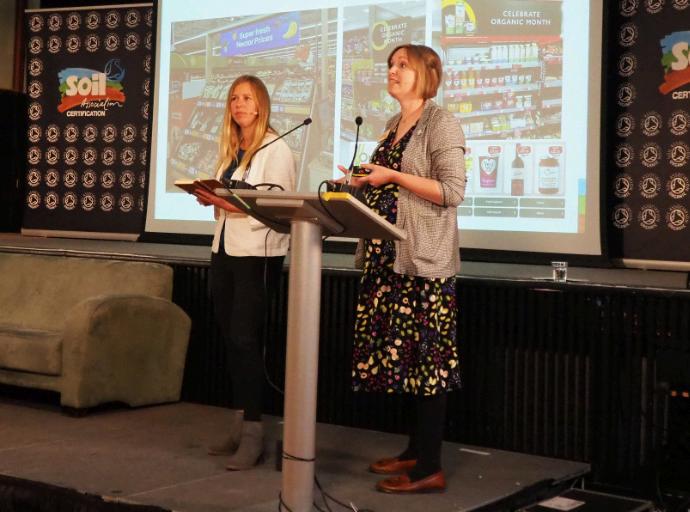
what we need to do to unleash the potential of organic and meet the booming demand for it. We are celebrating the inspirational energy, innovation and tenacity of all of those working in the sector from farm to fork.
“And with a newly elected government, there’s cause for optimism on how we get more organic into the hands and mouths of people across the country. But it is critical that we learn the clear lessons from Europe on how we can achieve scale for organic food and farming at pace to realise the benefits for health, nature and the environment.”
Mike Watkins, Head of Retailer & Business Insight, NielsenIQ, shared key data insights on the health of the organic market and sales performance in the supermarkets, and highlighted the key trends which reveal the motivations of shoppers looking for more healthy and sustainable choices.
Today consumers are becoming accustomed to the higher cost of living, with 29% saying that it is their biggest concern compared with 57% two years ago, and shifting instead to other areas like health and wellness which is now at 28% after being just 11% in November 2022.4And now 69%of shoppers say they actively look for sustainable/eco certifications or logos when buying food and drink.5
Mike said: “Shoppers are increasingly aware of the need to balance the future demands of a growing population, as well as their own health, with a change to their diets. But there is also opportunity to inform and educate about the need for changes in how we produce food and in the supporting the supply chain as part of helping UK food security. Organic is part of this journey."
Scotland and EU lead the way in waking up to organic as a solution
The conference reflected on the sharp contrast between the UK government and the EU where there are targets to increase organic land and organic is recognised as a key sustainable solution.
Just last month the President of the
European Commission, Ursula von der Leyen, was advised that organic farming is the only regulated sustainable system that already delivers environmental and climate protection, in areportthat is set to shape the European Commission's Vision for Agriculture and Food. The report said organic is a prime example of a food production system that reconciles nature protection and farmers’ income.
This message was reinforced by guest speaker – Michaël Wilde, Founder and Bio Ambassador for The Organic Embassy in the Netherlands, who shared his insights on the rapid growth of the Dutch organic market. He described the Dutch government’s Organic Action Plan, the strategies of the major retailers, and the establishment of organic cities and regions.
Michaël said: “Our experience has been incredibly positive driven by a shared understanding for the need to address the environmental and health crisis across government and supply chains. Clearly there are still many challenges to overcome, not least the increasing polarisation of the intensive food sector and combined organic and regenerative sectors, but I am optimistic about the future and the lead we are taking in Europe.
“The UK has some fantastic organic farmers, processors and products. I am inspired by the level of innovation and the commitment to organic principles despite the apparent reluctance of the previous government to create the necessary conditions to allow organic to flourish and reach its true potential.”
Delegates also heard from brand leaders representing innovative organic businesses who shared their stories of commercial success in European markets and beyond including Gusto Organic, Cocofina, PLAYin CHOC, Natracare, Frugi, and English Tea Shop.
And the conference heard about the social impacts and community benefits that organic can provide with inspiring insights from Mossgiel Organic Farm, Bore Place, the Organic Cotton Accelerator, and charity Sustain.
Grodan, the global leader in supplying innovative, sustainable stone wool growing media solutions for the professional horticulture industry, has teamed up again with Signify, the world leader in lighting, to conduct a second research trial at Botany in the Netherlands to optimise year-round tomato cultivation.
The aim of the trial is to further improve energy efficiency through spectral dimming of the full LED installation, using innovative climate screens and energy recovery from an active dehumidification system. Additionally, the trial will test new adapted fertigation and irrigation management strategies.
Through the end of April, a holistic approach will be utilised to achieve optimal energy efficiency and plant performance while maintaining high light use efficiency, excellent taste, and optimal fruit weight. This marks an exciting prolongation between two industry leaders dedicated to advancing sustainable horticulture practices.
“When growers started using LEDs to grow tomatoes, we could explain how steering light and heat separately had huge benefits. When growing with full LED, another factor comes into play; steering your humidity to better manage the crop balance,” indicates Marcel Raats, plant specialist for Philips LED grow lights. “With a holistic approach to growing; meaning separately managing light, heat, evaporation, fertigation, irrigation, and measuring and monitoring each factor, you will get the best insights in how the crop performs over time,” he adds. “Last year we used 50% less heat input compared to commercial reference growers. This highlighted the potential of active dehumidification combined with full LED lighting in climate control. As we move into the second year, we are focused on fine-tuning our approach to strike the balance between optimal crop production and more energy efficient methods.”
Taking the learnings from 2023 and 2024, the trial aims to demonstrate to growers how energy efficient strategies can lead to additional improvements in plant and fruit performance:
This year’s trial will focus on:
• The use of spectral dimming – to improve electrical efficiency of the LED installation. The strategy this year will be to target specific Daily Light Integral (DLI) whilst switching off the least efficient LED colours when they are not needed.
• The use of advanced climate screens – to offer greater thermal insulation of the greenhouse with a higher potential for heat-recovery through the dehumidification system.
• Gaining insights into the vertical plant temperature –to help create better crop balance and steerability in the development speed of both the young fruits in the head of the plant, all the way to the maturing fruits in the lower part of the canopy.
• Managing water and nutrient uptake – to target the lowest possible electrical conductivity (EC) while maintaining the highest production and fruit quality and simultaneously steer crop-balance with the right nutrient composition.
“Last year’s trial has demonstrated that controlling and optimizing all aspects of the cultivation enables a lower heat input. Using active dehumidification stimulated sufficient plant transpiration to support a strong crop and realise a high production. Extra generative growth at the start of the crop was encouraged by actively manipulating nitrate and chloride levels in the feed recipe. During the cultivation, the greenhouse climate was so stable that in the 30 weeks of the cultivation the average drain volume was a mere 8%”, states Andrew Lee, knowledge manager at Grodan.
"Collaborating with the right partners can drive innovation and enhance our collaborative efforts, bringing knowledge and expertise outside of the Grodan and Philips LED collaboration.” adds Andrew Lee. We will continue our partnership with BASF, Ridder, Normec Groen Agro Control and Wireless Value, and we are excited to announce that Ammerlaan Construction B.V has joined us. Adding a new partner broadens the scope of our research and by combining our efforts we can create synergy by bringing everyone’s expertise to the table to achieve a greater level of energy efficiency and set a direction for the future”.
“Grodan and Signify understand that growers play a significant role in shaping the direction of sustainable horticultural methods . By involving growers (and consultants) we will ensure that the knowledge we develop is not only innovative but also practical and aligned with growers’ needs. This year grower’s experience and insights will contribute to enhancing the trial’s strategy,” adds Marcel Raats. “This collaboration will ensure that the knowledge we develop is also viable in day-to-day operations and the new strategies developed are aligned to real-world challenges of commercial tomato growing today and tomorrow.”
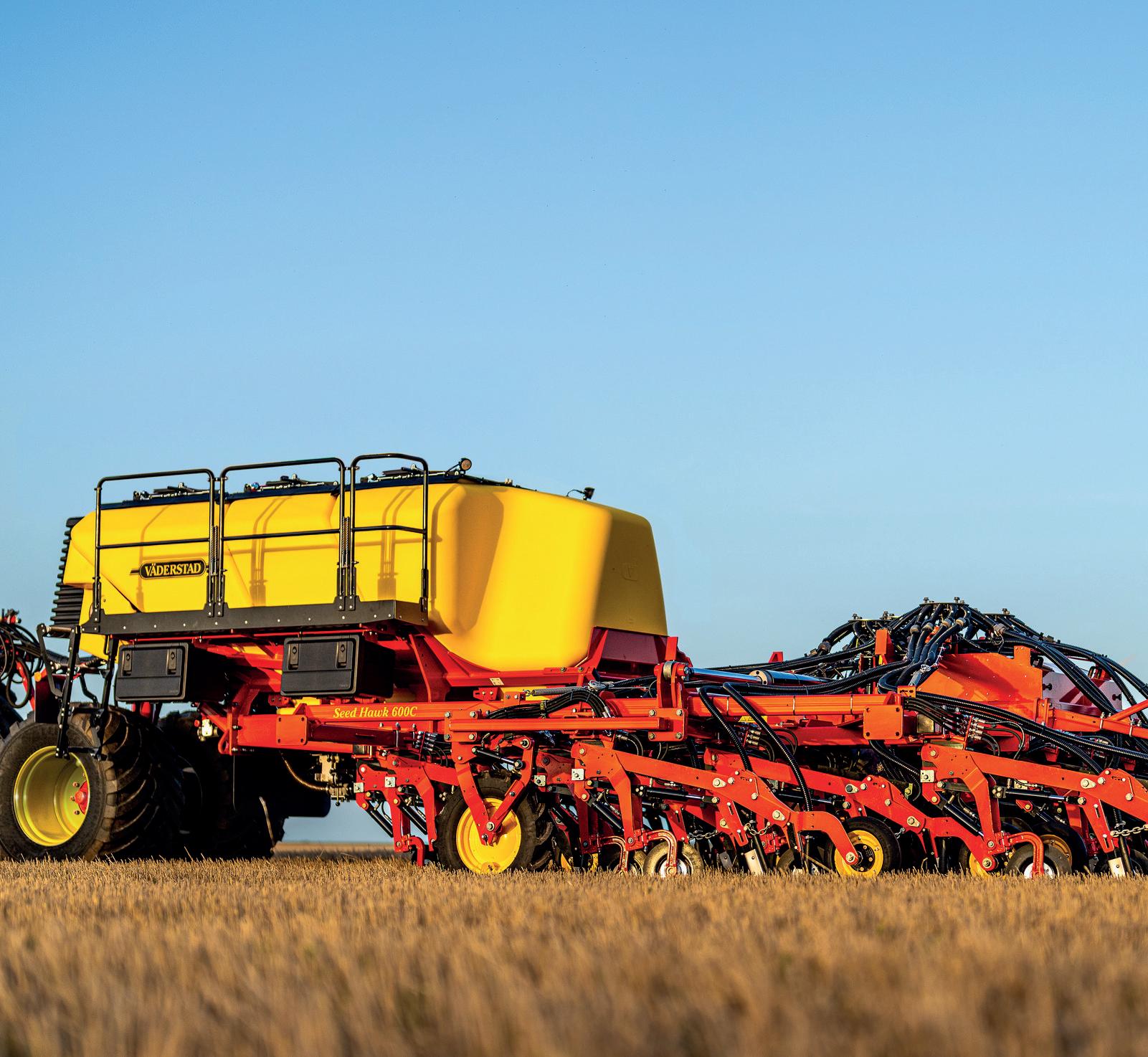


Rising field trial costs and stricter regulatory requirements are significantly increasing the expense of developing new crop protection products. This trend underscores the urgent need to reassess and improve field trial methodologies. Agriculture, the oldest industry in human history, often relies on traditional practices, however, modernization is essential when tradition hinders progress. Advanced digital solutions offer a way to streamline field trials, accelerating time to market and reducing the number of required trials, substantially cutting costs. In this article, Ron Baruchi, CEO of Agmatix highlights five costly challenges digitization can address.
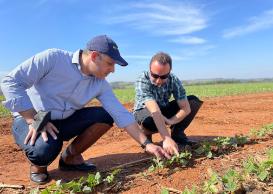
Poor communication and inefficient use of historical data often lead to repeated trials. Redundancies can inflate costs by 20-30 percent and consume significant resources. As agronomic trials depend on land, labor, and specific growing conditions, it is likely that field trial redundancies have an even higher cost. Designing models and protocols through a shared platform can minimize these redundancies, optimizing both R&D and marketing demonstration trials.
Agricultural field trials are fundamental in developing new crop varieties and synthetic and biological crop protection products. Yet, traditional trial management methods are plagued with inefficiencies, data integrity issues, and extensive data processing times. These challenges significantly inflate the costs of bringing new products to market – and for many, make it simply impossible to develop new products. A Crop Life International study reveals that the cost of developing a new crop protection product has surged from $152 million in 1995 to $301 million today, with approximately 30 percent of these costs attributed to field trials.
This highlights a pressing need for agronomists to adopt solutions to improve efficiencies, streamline data analysis and reduce field trial costs. Advanced digital solutions in the form of field trial management platforms can assist greatly with this, but what challenges exactly do they solve?
Redundancy in trial management is a major issue. It’s common for uncoordinated teams to unknowingly conduct similar or identical trials, leading to duplicated efforts and increased operational costs. A study by the University of Florida found that inefficient scheduling and resource use increased operational costs by 20 to 30 percent due to overlaps and misallocated resourceshttps://edis.ifas.ufl.edu/publication/ AG447. A centralized field trial management system accounting for all available resources and required trials can streamline scheduling, eliminating overlaps and avoiding unnecessary expenditures.
Undefined protocols in field trials lead to variations in data collection methods, causing inconsistent data and formats across teams. This inconsistency makes it difficult to compare data and interpret results. A cloud-based platform can resolve these issues by enabling the creation and sharing of standardized protocols which can be easily shared across the team. This ensures the collection of consistent and reliable data for actionable insights. Manual data entry further increases the risk of human errors, which undermine data integrity. Comprehensive field trial platforms allow agronomists to input data directly into a digital notebook, allowing the data to be instantly verified. An advanced system would also be able to flag potential errors or outliers, ensuring accurate data.
Data silos, in which vital data is scattered across several platforms and formats, delay critical insights. Consolidating data from several platforms is time-consuming and hinders timely decisionmaking. A unified data management system can provide real-time insights, enabling faster, informed decisions that accelerate product development. Contrary to some beliefs, implementing these systems doesn't require a complete overhaul of existing systems or processes, as most digital platforms integrate seamlessly with existing solutions and can process data from other platforms and programs.
Not only this, but a digital platform makes analytics easily accessible to marketing managers by allowing them to independently analyze product performance. From this, they can create visual proof points such as charts and graphs, allowing them to demonstrate product efficacy and create compelling marketing materials.
4)Harnessing Legacy
Many agronomists and growers have valuable historical trial data which often remains untapped. Previously, many programs wouldn’t be able to combine data sets collected with different methods - but this is no longer the case. According to a report by the Food and Agriculture Organization (FAO), effective use of legacy data can help to improve decision-making capabilities by 30 to 40 percenthttps:// www.fao.org/family-farming/detail/en/c/ 1506686/. This demonstrates the need for historical information within data analysis, aiding accurate predictions on crop production, soil health, and weather patterns, as well as identifying potential cost-saving opportunities and risks.

certification. A robust field trial management tool can provide real-time data access and monitoring, ensuring trials stay on track and any issues are promptly addressed.
Outsourcing trial work introduces logistical challenges, including limited access to raw data and the inability to monitor progress, potentially resulting in delays and disrupted product
The agricultural industry faces pressure to innovate with fewer resources. Adopting advanced field trial management systems is crucial for improving efficiency, data integrity, and decision-making speed – and crucially, making product development a more cost-effective process. This in turn will enable faster product development, certification and release – and potentially, enable the commercial launch of solutions that might never have reached the market without these lower cost trials. Advanced field trial management systems are already allowing growers to increase yields, reduce waste, and produce more ‘profitable’ food with less land. By streamlining these processes, we can make significant strides in addressing global food shortages, ensuring a more sustainable and foodsecure future.
Yara UK welcomes Roger Bacon, who joins the Crop Nutrition Services team as a Farm Account Manager covering the Lincolnshire area.
As part of his new role, Roger will be working face to face with farm customers providing agronomic advice on crop nutrition and crop nutrition plans, as well as supplying them with the full Yara portfolio. This will include liquid and solid fertilisers, complimented by our YaraVita micronutrient and YaraAmplix biostimulant product range.
Roger brings a wealth of knowledge to his role, having spent most of his working life as an agronomist, for Ag chem distributors and manufacturers. He spent time working as an agronomist in New Zealand and most recently, he worked for a seed company which specialised in producing grass and forage seeds. As part of that role, he dealt with merchants and distributors as well as providing agronomic

support to farm customers, an ideal grounding for his new role with Yara UK.
Speaking about what he enjoys most about his role, Roger points to the all-encompassing package of support Yara is able to offer its customers. "We can provide a full nutritional package of support to farmers and growers for all kinds of crops so they can get the most out of their crops, improve the health of their soil, and improve their bottom line by being more efficient. As well as that, I enjoy the face-to-face contact with customers and helping them solve their crop nutrition problems," says Roger.
He adds that as farming has become a more professional and specialist field, it's important that Yara can also offer customers technologies like NSensor, N-Tester, and Atfarm that are going to help them take their farm businesses into the future. It was Yara's reputation for being a forward-thinking business that attracted Roger to the role. "I've always known about Yara, and my perception of the business has always been that they're forward thinking, they're thought leaders, and they are at the cutting edge of crop nutrition. There are plenty of big things happening such as new partnerships with PepsiCo and it's quite exciting to be on the ground, seeing how things are changing, and being able to back-up my product recommendations with fact, figures, and trial data from Yara's world-class R&D," he adds.
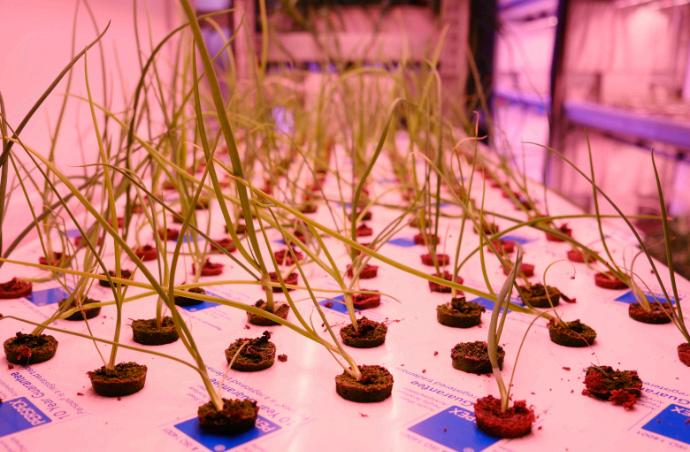
In an exciting project being led by Jonathan Bell at Stourgarden, Professor Tracy Lawson and her team at the University of Essex are growing onions using LettUs Grow’s ultrasonic aeroponics, an irrigation technology that allows crops to be grown without soil.
What are the current issues with growing onions?
Onions are a staple crop in the UK and around the world, with over 100M tonnes produced each year. There are three key challenges with growing onions in the UK and globally: disease, seasonality, and storage.
Onions can only be grown over the spring and summer months, since light levels are important to their development. They are sown

outdoors around March and typically begin to bulb after the summer solstice. So with conventional methods, you are limited to one crop per year - but of course the demand for onions remains all year round. This means that often onions are imported from as far away as New Zealand, resulting in high food miles, a larger carbon footprint, and increased costs. To extend the UK season, onions are kept in cold stores and can be held for up to 10 months. This demands a huge amount of energy and often the quality of the onions can suffer, leading to further waste when onions are sorted. Another issue with growing is the prominence of soil-borne diseases. Fusarium, a type of rot, can cause losses of up to 40% in the UK. This not only results in food waste, but waste
of growing resources and profit losses for the grower.
How could controlled environment agriculture (CEA) help?
By growing onions from seed to bulb in a controlled indoor environment, there is the potential to quadruple the number of crops in a year in the UK. In trials conducted at the University of Essex, Professor Tracy Lawon and the team are aiming to reduce the overall carbon footprint of growing, remove the need for storage, increase the speed of growth and grow a consistent quality product. Onions are being grown in an indoor environment, using LettUs Grow’s aeroponic irrigation systems. In an aeroponic system, onions are growing without soil. Instead, roots are suspended in air and nutrients are delivered through a mist that is generated using ultrasonic technology. This method boosts access to oxygen, which promotes root zone strength and growth, but crucially the lack of soil here reduces the risk of soil-borne disease in the early and vulnerable stages of growth.
The academic team has been recording crop growth, climate parameters and energy consumption data - and so far, the results are
promising. Jonathan Bell, Operations Manager at Stourgarden, said, “we have successfully grown onions to a stage where the first signs of bulbing can be seen. The aim of the project is to investigate how CEA can play a part in the supply of onions to UK consumers. To wholly replace traditional field production is not the aim, but there is a role for CEA to play in improving current growing and supply.”
Nick Green, Head of Commercial at LettUs Grow, said, “it’s really exciting to see our innovative aeroponic technology support traditional growing methods. This is an excellent example of how partnerships across agricultural sectors can benefit sustainable food production in the UK and we’re so proud to be working with the industry and research experts at both Stourgarden and the University of Essex.”
Learn more about our aeroponic research partnerships.
This project is jointly funded by Stourgarden, Innovate UK and Biotechnology & Biological Sciences Research Council in a partnership between University of Essex and Stourgarden.
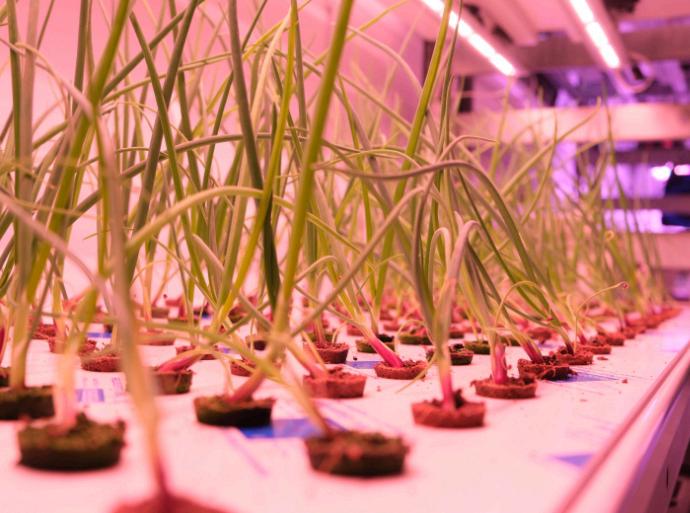
Northwest-based bakery Lovingly Artisan has teamed up with Cumbrian Farmer's Eden Yard and wheat specialist Dr Andrew Wilkinson to grow a pioneering crop of Rye in the heart of Cumbria's Eden Valley.
For several years in the lead-up to the collaboration Aidan Monks and Catherine Connor, the husbandand-wife owners of Cumbria and Manchesterbased sourdough bakery Lovingly Artisan which specialises in healthy nutritious bread made using organic ancient grains had been chatting with their good friend Dr Andrew Wilkinson (aka The Grain Doctor) about the possibility of growing a grain crop to meet the majority of their specialist flour needs.
Andrew gained his eponymous title as a leading figure in bringing heritage grains back into commercial production in the UK. His work in both farming and research is internationally recognised,
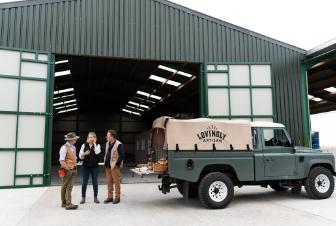

having led the organic crop research programme at Newcastle University and has invested a huge amount of time in meticulously researching which grains are best suited to the climate and conditions of his farm alongside Hadrian's Wall in the northeast of England.
It seemed obvious to Aidan and Catherine that there was a real opportunity to mirror some of the farm-to-bakery initiatives being run elsewhere in the UK by members of the UK Grain Lab, a collective of farmers, millers, plant breeders, bakers, cooks, scientists and academics who are all working together to advance a more diverse UKbased grain economy centred around an independent network of trade around locally grown grain, which earns a good price for the farmer, shortens the supply chain considerably and in turn delivers a quality product to
The main question is could they find a farm in Cumbria that would be suitable and willing to experiment, and would it work? Especially as the area has no large-scale arable tradition, even though historically there were mills dotted across Cumberland and Westmorland and many of the region's farms were mixed - with many growing grains for their animals and milling.
Happily, Andrew, familiar with the climate of Northumberland, was only too willing to assist in their search and to share his knowledge as they hunted for like-minded farmers to work with at an appropriate site.
Quite by chance, Aidan and Catherine mentioned their plans during a conversation with Ben and Jannike Taylor, who own Cumbria's only cooking oil company Eden Yard, which is used by the bakers in


During this conversation, Ben and Jannike explained how they operate their 600-acre farm, which specialises in growing varied arable crops grown in annual rotation, following a stringent soil management plan. Which among other processes sees them plant their stubble fields over-winter with deep-rooting and nitrogen-fixing cover crops, as well as companion cropping and minimising tillage.

However, at the same time, they also mentioned a key piece of information that was set to change things for everyone. It transpired that they'd grown several crop batches in 2021, 2022 and 2023 that were of sufficient quality to be suitable for use by a local biscuit manufacturer. So, with the expertise and equipment already in place, this proved to be the perfect opportunity to look at growing specific grains for Lovingly Artisan, including heritage and

ancient grain varieties under organic conditions.
Things moved rapidly and in early 2023 the trio, each specialist in their fields, came together to look at how they might be able to address the possibility of growing a pioneering crop of grains in Cumbria for Lovingly Artisan to use in their bakeries. Ben and Jannike provided the land and machinery, whilst Andrew provided the seed and his expert guidance, with Lovingly Artisan providing access to a milling facility, and the market for the end product.
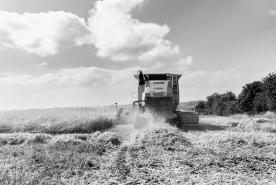

Andrew met with Ben and Jannike and worked through what they needed to do to nurture the crop following organic growing principles. Subsequently, the first parcel of land covering two small fields, totalling just under eight acres, was prepared, and sown in early autumn 2023, with the aim of delivering a first-ever crop of heritage rye grown under organic conditions for harvest in late July
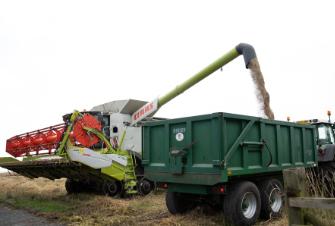

Despite the spring and summer weather Eden Yard's first heritage Rye crop was successfully harvested for Lovingly Artisan in late August, yielding in the region of 12 tonnes, which is now being stored. Alongside that Lovingly Artisan can also reveal that they've been working quietly with Andrew, who is also an expert miller, to establish their own milling facility and associated bakery in Burneside, which is due to open in the next month or two.
The trio are also planning to increase grain production at the Eden Valley site, planting several dedicated heritage grains and more rye, thereby increasing the total acreage available and subsequently the grain available for milling at Lovingly Artisan's flour mill. Flour, which in the fullness of time they hope to make available to other local businesses as crop production increases alongside their milling knowledge and capacity.
Aidan Monks and Catherine Connor said: ''We've
wanted to go on this journey for quite a few years and quietly we've been chatting to Andrew and making plans should we find a suitable farm that shared our vision and saw the potential of what we were proposing to do. Cumbria, though not known for crop production, has areas of land that are highly suitable for growing grains of this sort. Particularly heritage grains that have over thousands of years adapted to climatic conditions prevalent in the UK. Couple that with organic growing practices and you've got a win-win situation. Shortened supply chain, locally produced crops with unique terroir. All of this increases our food security, and when grown sustainably can offer farmers positive returns and ultimately provide the consumer with a locally produced nutritious and ethical product in the form
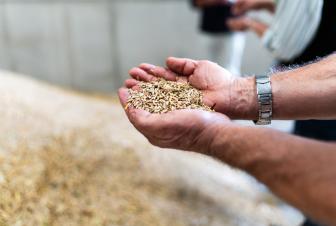

of ancient grain breads produced from seeds nurtured in Cumbria and then turned into loaves served at Cumbria's dining tables. What could be better than that?
Dr Andrew Wilkinson remarked: ''This is how farms should be operating; growing food in such a way that the farming activity actively seeks to retain the value of the landscape within the community.''
Ben and Jannike Taylor commented: ''As farm-tofork producers already in Cumbria, our partnership with Lovingly Artisan has provided a welcome opportunity for us to further expand on our journey to farm sustainably and provide more products for our community. It is incredibly exciting that nutritious and fully traceable bread will be created, from grains grown and milled within the county, highlighting the vital connection between farmers, producers, and consumers. Whilst Aidan and Catherine get to trace their loaves back to the seed, we get to follow our grain to the mouths of their customers! It's a wonderfully exciting project for us all.''
With wetter winters predicted, farmers need a broader range of tools to adapt to the shifting landscape. As a result, more flexible crop varieties with extended drilling windows are an appealing alternative.
Wheat varieties that can be sown from October through to April - after maize, potatoes, root crops, and vegetables – are seeing increased uptake.
EverlongfromCOPEis a group 4 feed wheat with the highest yield and specific weight of any spring wheat on the Recommended List (RL), a strong disease resistance, and provides farmers with the 'full package'. With a wide drilling window, it's a new option for late autumndrilled wheat or as a true spring wheat option for the feed market.
Lincolnshire farmer, Colin Chappell, planted Everlong in April 2024, after the wettest winter his farm had ever seen. "By 10 April 2024, 85% of crops still needed to be drilled, due to a succession of storms kicked off by storm Babet in October 2023," he says.
"We wanted 5 or 6 days clear of rainfall and we didn't get it until April. Much of the cropping area was in standing water until that point - it was a terrible year. I had to replant 35 hectares of winter wheat for Warburtons - and one field three times, after it got flooded out twice over the winter.
away quickly.
"In terms of nutrition it received early nitrogen (N) on the seed bed, then manganese, zinc,and phosphite, which was repeated, and at tillering it had a second dose of nitrogen to total150 kilos of N/ha.
"Then as the crop came through, it had phosphate, zinc, a bit of herbicide, a fungicide at tillering, and a second fungicide treatment for fusarium 4.5 weeks later, due to it being a seed crop," he says.
Colin harvested Everlong on 21 September, and it was the last crop to go through the combine. It yielded 5t/ha. "It was a high-quality crop with high specific weight of 80kg/hl, and a protein level of 13.9% which is unheard of for a group 4 with only 150 kilos of nitrogen," says Colin.


"Many farmers were planting spring barley following the wet winter, and due to my uncertainty about the resulting barley price, I opted for an alternative spring wheat, grown as a seed crop for COPE," says Colin.
Colin planted 15.5 hectares of Everlong on 28 April 2023 and was pleased with the results. "Everlong went well into to heavy clay soils that had been flooded but started to clear. It felt very late to plant, but the seed bounced out of the ground and was
"Everlong performed well, and it was easy to grow, it's also a nice bold yellow colour when it's ripened in the field – which, after the year we had, was some comfort. If we keep getting this unseasonal weather, alternative spring wheat will be in demand. It's a strong back-up option," adds Colin.
Gemma Clarke, managing director at COPE –representatives of the variety, Everlong, says the trial and on-farm results continue to be encouraging. "It's clean, easy to manage, and produces the boldest grain of any spring wheat," she says.
From 2024 Agrii alternative wheat trials, Everlong demonstrated strong performance and in the AHDB Recommended List trials, Everlong had the highest treated yield and specific weight. In the Agrii Throws untreated spring wheat trials site, Everlong demonstrated exceptional disease resistance, achieving a yellow rust score of 1 and a brown rust score of 2, indicating very low levels of disease compared to other varieties, where lower scores reflect better performance.
Farmers are being encouraged to ramp up their efforts to control rodents ahead of an anticipated influx of rats and mice seeking shelter from the cold and wet weather.
Lodi UK’s pest control technical adviser, Dave Reece, says the recent downpours and flash flooding in some areas – coupled with dropping temperatures – are going to encourage rodents to seek shelter and food on farms.
“The double whammy of the cold and wet weather is going to make rats move quickly and potentially create problems on many farms,” says Mr Reece.
“It’s important to try and get ahead of any rodent problem early and get control protocols in place now.

“Rodents not only spread disease and contaminate feed, but they also cause damage to infrastructure and machinery by chewing through electric cables and weakening concrete floors and walls through their burrowing.”
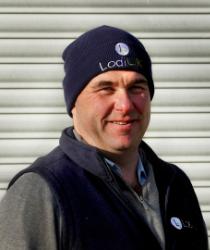
He says areas where rodents were a problem in previous years are a good place to start and farmers should take steps to deter rodents, as well as laying down bait in problem areas.
“I’m not expecting farmers to check every square inch of their farms, but there will be known problem areas that they need to check as soon as possible,” adds Mr Reece.
He says rodent hotspots can include areas with water, as rats need to drink 12ml of liquid per 100g of body weight each day, as well as feed, grain and hay stores.
“Maintaining a tidy farm is paramount, so farmers should clean up rubbish and feed spills, and ensure grain or hay is properly stored to make the environment less attractive to rodents,” adds Mr Reece.
“Additionally, sealing holes and repairing any structural damage, such as broken windows or gaps in walls, will help prevent rodents from entering buildings and nesting inside.
“Unnecessary water sources, such as disused water troughs, should also be addressed because removing them will force the rodents to move to find a new water source.”
When laying down bait, Mr Reece says choosing the right bait for your farming system will give the best outcome possible.
“Different products have different formulations and active ingredients, and it’s essential that you’re using a bait appropriate for your set up,” adds Mr Reece.
“For example, grain bait cannot be placed inside the grain store, so blocks or paste would be better suited there.
“If you’re unsure of which bait you should be using, seeking the advice of an experienced pest controller is recommended.”
Midlands Machinery Show exhibitors expect November’s event to be an opportunity to gauge farmer confidence following the Labour Party’s budget.
The event kicks off on 20 November – three weeks after Chancellor Rachel Reeves sets out her new fiscal plan.
Tax rises and funding cuts are expected to follow what has been a challenging year for agriculture. But machinery dealers say most businesses just want clarity in order to make investment decisions.
Chandlers Farm Equipment will be exhibiting at the Newark Showground and believes many farmers have postponed big purchases until after the budget.
“We’ve had a few people say they’re going to hold off on big purchases until after the budget,” says Rob Immink, Director of Sales FV at Chandlers

We’re exhibiting at MMS 2024



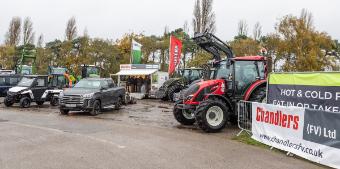
Farm Equipment.
“They want that clarity – most will probably end up making those purchases anyway because they’ve identified a need for them, but they want to make the final decision when there aren’t as many unknowns.
“By the time the Midlands Machinery Show takes place everyone will know where they stand and will have an expectation of what the future will look



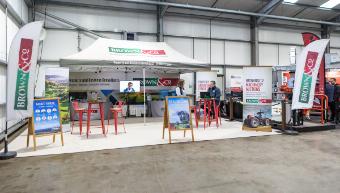
like. That will instil more confidence in the sector.”
The Agricultural Engineers Association (AEA) reported in October that UK agricultural tractor registrations for the first nine months of 2024 were 15% lower than in the same period last year.
The number of machines registered in the third quarter was down by an even larger 20%, compared with a year earlier.
But despite the figures, the Midlands Machinery Show has seen strong support from exhibitors with well over 200 stands booked.
Events and Development Manager, Elizabeth Halsall, said: “This will be the tenth Midlands Machinery Show and over the years we have seen farming’s highs and lows. What always comes

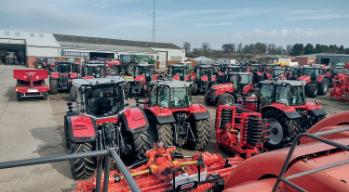
through is the resilience in the agricultural community.
“When farm businesses come up against challenges they need the innovation and the technology developed by suppliers to help them become more efficient and profitable, and our show is a great platform to explore options and do business.
“Among our exhibitors are firms such as Brown & Co and Wilkin Chapman who can also help digest and evaluate what the budget will mean for farm business from their respective points of expertise.”
Tickets to the Midlands Machinery Show are free but pre-registration is required at www. midlandsmachineryshow.com



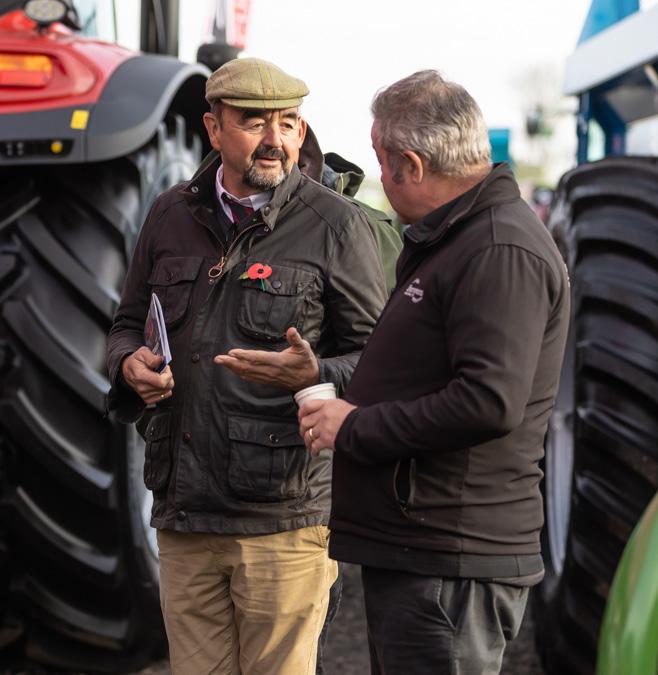



The UK distributor of a popular biostimulant brand is encouraging farmers visiting the Midlands Machinery Show to plan their Spring applications well in advance by offering a large discount on highcapacity reusable bulk containers (RBCs).
Since their introduction by MJP Supplies in February 2024, the 1,000-litre RBCs of Algifol have proven incredibly popular with growers looking for best value. And visitors to the Midlands Machinery Show will be able to take advantage of special show price, which represents a 5% discount on highvolume orders.
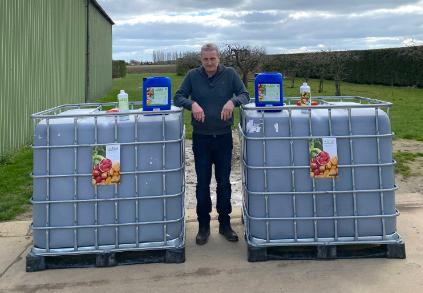
"Algifol has a large number of repeat users, and we expect this increase after this harvest as people see the benefits of applying the seaweed-based biostimulant to their crops," says Marcus. "While inflation is slowing down and returning to more normal levels, prices have still risen, and it is costing more now to farm than it did one or two years ago. This has contributed to healthy sales of our 1,000-litre RBCs, which present the lowest cost per acre possible.
"We're very keen to attract people to our stand in Hall 2 at the Midlands Machinery Show and
want to support growers as best we can, that's why we're offering our RBCs at the special price of just £9,500 for the two days of the show. That's just £9.50 a litre and 1,000 litres is enough to cover 1,000 acres."
Manufactured by Neomed Pharma in Germany, Algifol is derived from brown algae, which is dried and refined. The result is an entirely natural liquid boasting a wealth of trace elements, vitamins, enzymes, amino acids, carbohydrates, polyuronides and growth-regulating plant hormones.
Algifol is also a natural nitrogen source due to the high presence of amino acids and peptides. When used with a reduced amount of fertiliser, Algifol naturally improves the nitrogen use efficiency of the crop, producing a better yield and reducing the use of costly fertilisers.

As well as RBCs, Algifol is available in one-litre (£21.99+VAT) and 10-litre cans (£164 + VAT) directly from Marcus via his website –www. mjpsupplies.co.uk.
For more information about Algifol or to place an order, emailmarcus@mjpsupplies. co.ukor call 07702 293 727.

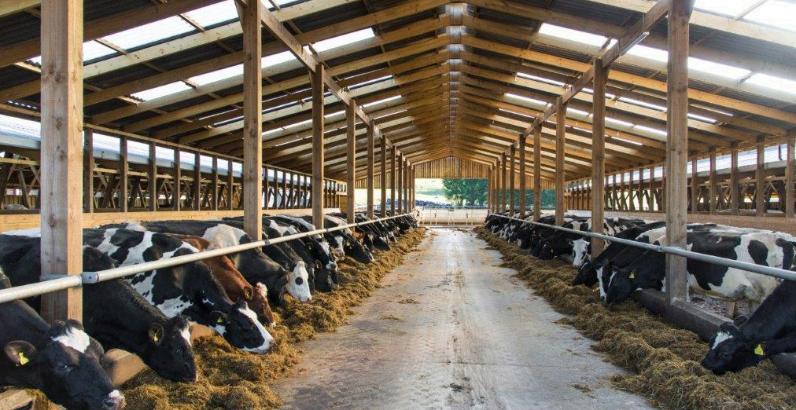
Driven by the simple principle of creating a healthy environment and that ventilation is not the volume of air in a building, but critically it is the rate of air exchange, simply clean air in and stale air out - Farmplus design and build to these principles.
Animals left to nature always try to find shelter in the basic form, they use hedges, walls & natural hollows to get out of or reduce the impact of the winds. Likewise, they will use trees for shade from the sun and shelter from the rain. When we look at buildings we should aim to replicate these basic principles of nature wherever possible. Remember that animals want in the basic form shelter from the wind, rain, shade from the sun, and plenty of fresh air. Ideally giving animals a shelter wall to be able to lie behind with a decent gap above for air to pass over. All air movements need to be above animal height so as not to create a draft.
Depending on the height of the wall, the gap above will often need some form of wind break material to reduce wind speed on bad days. The best and cheapest form of ventilation is and always will be natural ventilation using the stack effect with sufficient gaps at the low eaves and open ridges. No fans using electricity, no moving parts & nothing to breakdown, so no ongoing expense.
In very high rainfall areas, special ventilated ridge capping’s can be supplied. For most situations, the best ridge treatment is still, simple upturned flashing, for these will make the outside air lift over the ridge of the roof. The base of any upstand should always be at a minimum 50mm (2” inch) back from the top edge of the roof sheet, so any water/rainfall that hits the inside of the upright flashing can then drip of the heal and drain away down the roof sheet.
Animals left to nature always try to find shelter in the basic form, they use hedges, walls & natural hollows to get out of or reduce the impact of the winds. Likewise, they will use trees for shade from the sun.
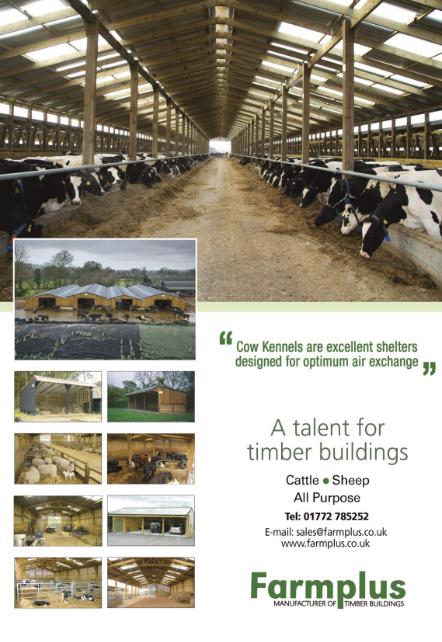



The Ascenso Tyre brand is the creation of the same highly successful management team that brought BKT to the market and expanded Alliance significantly as a global brand.
Since inception, Ascenso has increased year on year it is range of off-road tyres. Currently their portfolio consists of over eight hundred products aimed at the: Port, Airport, Earthmover, Forestry, and Pneumatic range. By the end of 2024 Ascenso has ambitions to have one thousand products within its catalogue.
Ascenso tyres are supplied in over ninety-five countries and within the market their products are viewed as having comparable performance and in many cases greater performance benefits over their premium branded tyre counterparts.
Though this does not mean that their tyres come with the premium price tag afforded by the traditional brands. Sensibly priced and engineered to perform day in day out requires an efficiency of design, manufacture, and retail.
Their newly built state of the art production facility in India allows Ascenso to manage the entire design, testing and production process. This significantly reduces costs, and total oversight can always be maintained.
During a series of tests, the XLR800 was able to demonstrate that due to its unique tread pattern featuring mud breaking technology that it used less fuel that the other two tyres to perform the same task.
When the wheel slippage was measured once again the XLR880 was proven to offer more traction and efficiency.
Soil compaction is a key factor in crop yield. The greater the compaction to the soil, the greater the damage is done to the soil. Soil damage equals lower yields. Once again, the XLR880’s where proven to spread the weight of their load more effectively whilst staying within the width of the track whilst reducing the soil compaction depth when compared to the other test brands.

Already Ascenso has built a strong relationship with many major industrial manufacturers with their tyres now appearing as OE (Original Equipment) on Kubota, Manitou and Fliegl to name just a few.
Currently Ascenso Tyres are running on the largest farm in Europe and two of the largest farms in the UK.
Recently the Italian based, and highly regarded research company Provana were tasked with evaluating the Ascenso XLR800 agricultural tyre and comparing it against one market leading brand and one leading budget brand of tyre.
The need for reduced soil compaction has born an entirely new tyre variant which are named VF tyres. Modern production methods and computer aided design allied with new polymers and rubber additives make VF tyres possible.
Ascenso VF tyres such as the VDR 2000 or the VDR900, just two from their VF range use pressure and in particular lower tyre pressures to reduce compaction. VF tyre pressures can be lowered by 40% compared to non-VF tyres, even when carrying the same load.
While the tyre width may be remarkably similar, the footprint is extended front to rear (in an oval shape), within the committed trackway of the tyre, therefore achieving a larger footprint.
VF technology also gives the ability to carry 40% more load than a non-VF tyre at the same pressure. This means you can travel at the same speed and same pressure as a non-VF tyre but with 40% more load.
To learn more about how Ascenso Tyres can help keep your business rising be sure to speak to the Ascenso team on their display stand here at the Midlands Machinery Show.
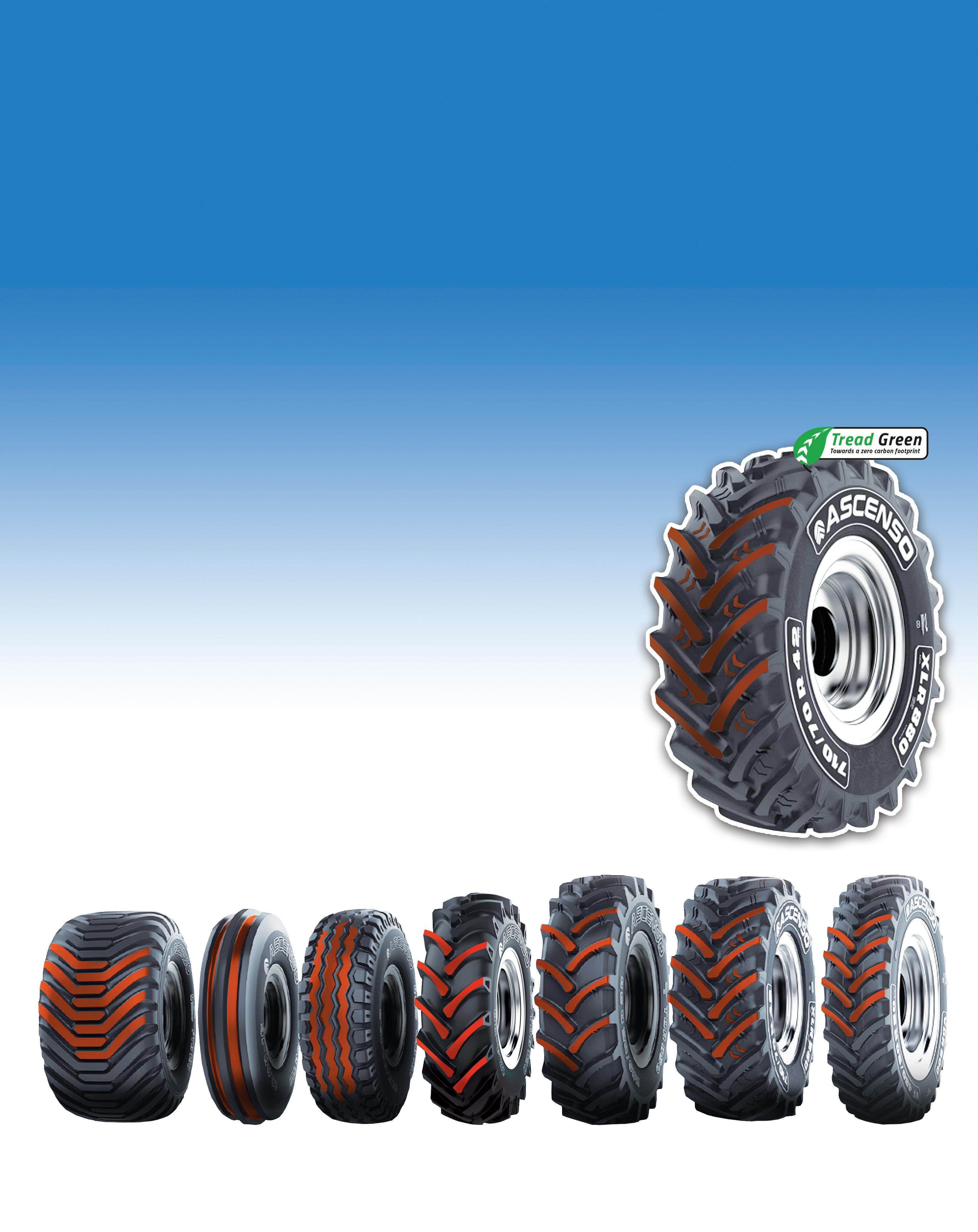



TheMidlands Machinery Show(MMS) will take place on the 20th to 21st November 2024, showcasing a diverse range of the latest products, services, vehicles, and agricultural machinery. Amongst those exhibiting at the Newark Showground, Duckworth will be showcasing the off-roading capabilities of the Isuzu D-Max
Offering the opportunity to test the D-Max in the Woldmarsh 4x4 driving experience, Duckworth Isuzu will be allowing guests to experience the full potential of the pick-up. With a strong pedigree in the agricultural sector for its reliability, durability, and capability, the Isuzu D-Max is poised to take centre stage on the off-roading course.
With the support of pro drivers, participants will be able to experience the D-Max’s abundant off-road features such as shift-on-the-fly 4WD, differential lock, high approach and departure angles, and hill decent control.
In its eighth year of attendance at the MMS, Duckworth is a well-recognised exhibitor at the agricultural showground. Bringing the offroading experience further solidifies the DMax’s position as an ultimate farming tool with the capabilities to take on any terrain. Staff will be able to advise on the latest specifications and finance options to the stand visitors.
Managing Direct at Duckworth Motor Group, Ben Duckworth, stated: “It is very exciting to return to the Midlands Machinery Show for the eighth year. Following a busy show season, this one is always a particular highlight given the opportunity for attendees to try out the DMax first hand.”
Regional Sales Manager at Isuzu UK, Dean Asplin, commented: “It has been a very busy and exciting show season for Duckworth Isuzu. With the D-Max being vastly popular within the agricultural sector, the Midlands Machinery Show is always a particularly busy one. Fortunately, the guests will be in safe hands with the knowledgeable and engaged staff at Duckworth Isuzu.”
Opening its doors in 1962, Duckworth Motor Group bring a wealth of experience and expertise when it comes to customer service. Having taken on the Isuzu brand in 2012, the family-owned dealer has a reputation for its overall high customer retention and satisfaction, with impressive level of customer service.


artpury University and Hartpury College are excited to announce a new series of ‘Farm Forward’ demonstration events, showcasing the latest wireless networks and technologies for the farming and rural sectors.
Supported by the River Severn Partnership Advanced Wireless Innovation Region (RSPAWIR) project, these six demo events offer stakeholders working in the land-based industries a hands-on opportunity to explore cutting-edge
technologies that can transform rural industries. From improving farm efficiency to supporting sustainability, each event will shine a light on the power of advanced wireless solutions, and the benefits they can bring to the here and now.
Taking place at Hartpury University and College’s commercial farm near Gloucester, each demo event will give attendees the chance to see and hear solutions related to industry wide themes of knowing your networks, health and safety, soils and environment, remote communication and precision farming. Attendees will get up close with

sensors, latest software, vision-based tech and various network options - all tailored to real-world farming and business needs.
By closing the knowledge gap in advanced tech, and hearing about what the latest networks can offer, these six events will show how farms and rural businesses can boost productivity, sustainability and resilience.
Upcoming ‘Farm Forward’ Demo Event Showcase Series:
• Networks– 18 October, 12:30-3pm
• Soils and Environment– 15 November, 12:303pm
• Health and Safety– 26 November, 12:30-3pm
• Remote Communication– 12 February, 12:303pm
• Precision Farming– 12 March, 12:30-3pm
• Showcase(Harper Adams)– 20 March, 12.303pm
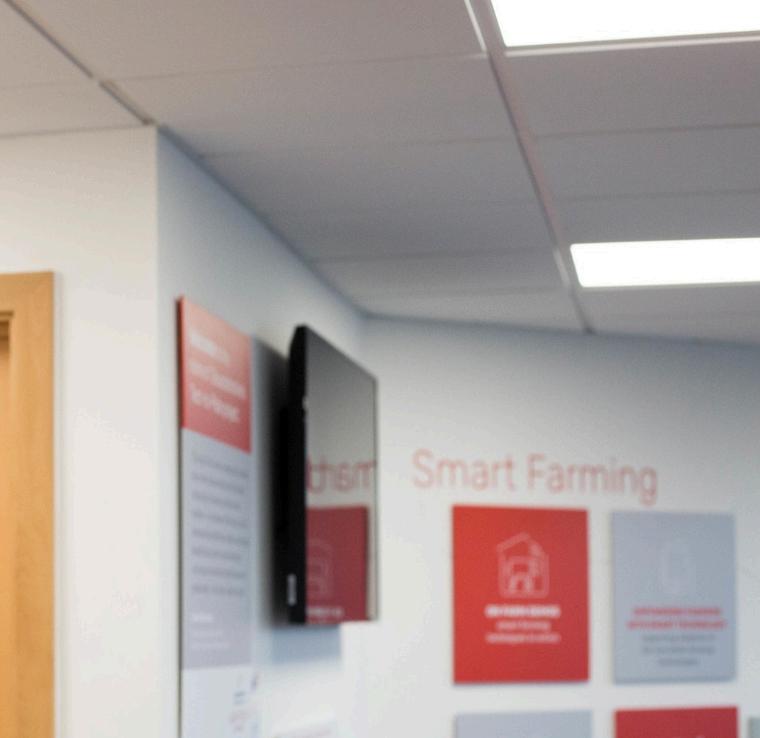
Northern Ireland farmer and entrepreneur, Jack Dobson, from Dunbia hosted an open event to demonstrate the success of the virtual fencing system from Monil. Jack has been using the system since Spring 2024, and was keen to tell fellow farmers about his experience. Jack has over 100 mixed breed cattle, with a herd of 20 cows using the system.
The event also included presentations from Foyle Farms and AFBI discussing how the technology can benefit farm management. With around 30 farmers attending from the surrounding area, local interest was high, and the questions and answer session was extensive.
Jack has been a strong advocate of Monil's technology since first becoming aware of the product and has worked with the technical team at Monil to propose improvements to the app and its capabilities.
Jack said of the event: "I've been really impressed with the collars since I started using them in spring 2024. The ability to save different pastures in the app and herd the animals to the desired location is a godsend – fencing costs are expensive, but using the app, moving the cows couldn't be simpler and we can save pastures to return to once the grass has grown without the need to move or install new fences.
Monil is impressed with British grazing practices and sees the potential for larger hill grazing potential in the UK. Hill grazing is quite common in Norway, where the product is made. Comments from users and visitors to the event highlighted that the system could be significant for farmers using mob grazing to maximise the benefit from each pasture.
Head of Sales, Oliver Halvorsrød, said: "We're really keen to talk to rotational or strip grazing farmers who can help us quantify the gains in terms of feed efficiency, time spent, soil health and animal welfare. Theoretically, we know that with the right management, we can improve the statistics across the board but we need use cases. We'd be interested in discussing favourable terms with the right farmers who get in touch so we could create a win-win situation for all concerned."
For more information or to request a call to discuss whether virtual fencing works for you, visitwww.monil.co.uk/pages/offer
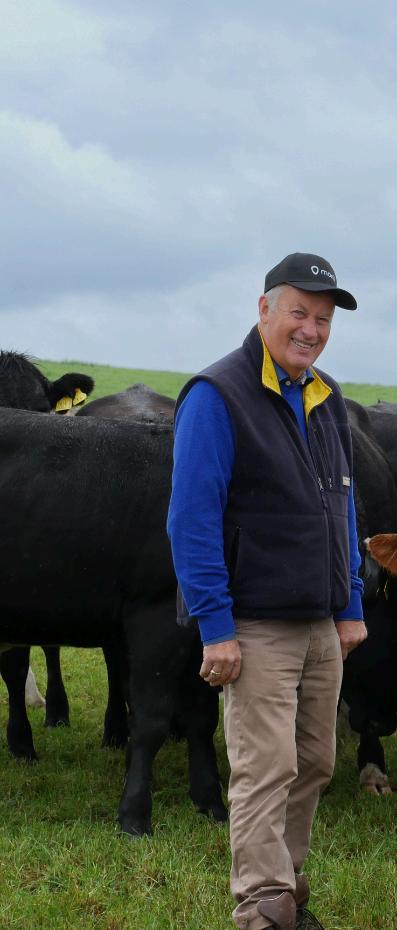
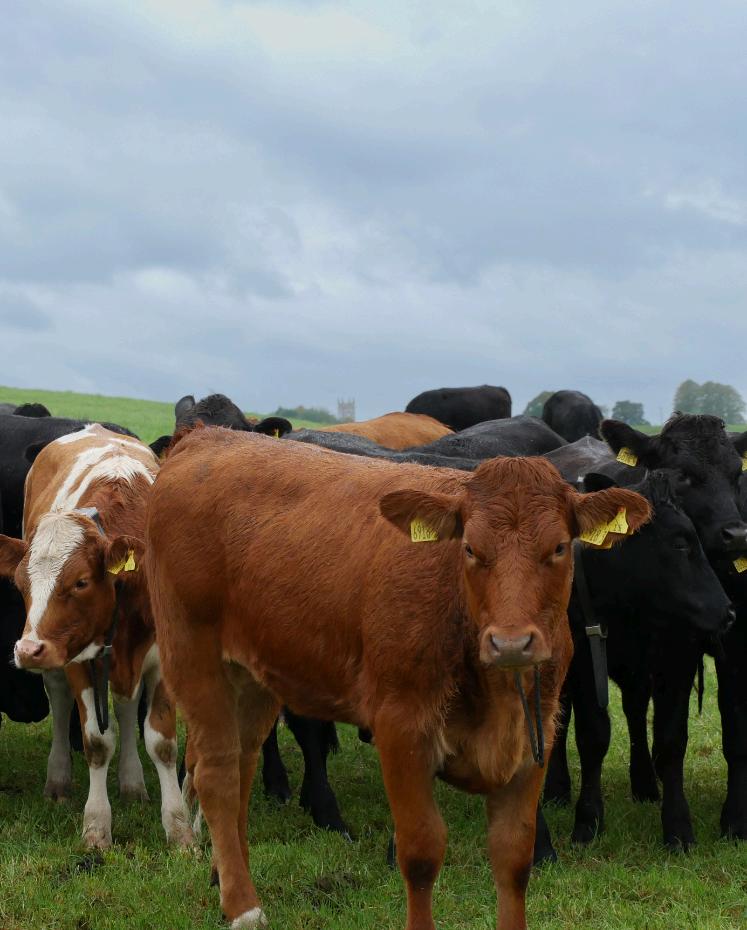

Witham Group, a leading UK lubricant manufacturer, is excited to announce the launch of its new, range QualGuard of antifreeze and coolants, adding the latest Si-OAT technology to two new products. Designed to meet the diverse needs of modern engines, the updated range now offers superior protection, extended lifespan, and enhanced performance to vehicles however old or new.
In addition, the innovative business has also launched a new winterisation anti-freeze, with biodegradable qualities ideal for static caravans,
holiday lodges and boats.
Coolants are crucial for maintaining optimal engine temperature, preventing overheating, freezing, and corrosion. With engine technology constantly evolving, innovative coolant solutions are essential. Witham Group's new QualGuard range offers a variety of options to suit different vehicles and driving conditions.
Antifreeze technology has evolved significantly in recent years, especially with advances like SiOAT offer better corrosion protection and

compatibility with modern engines and are formulated to last longer, sometimes up to 10 years or 300,000 miles depending on the type of vehicle and operating conditions. These latest coolants minimise the need for regular flushing and refilling, so reducing ongoing maintenance costs.
Innovations, driven by the need for more efficient thermal management in electric vehicles and environmental concerns, have created new more eco-friendly and efficient coolants. With the rise of electric and hybrid vehicle, coolant technology is also evolving to meet the specific needs of battery packs, electric motors and inverters. Dielectric coolants are being developed which are non-conductive fluids, ensuring that electric components will be protected from short circuit, whilst maintaining vital thermal regulation.

corrosion, ensuring long-lasting engine health.
• Enhanced Heat Transfer: Efficient heat dissipation is essential for preventing engine overheating. QualGuard coolants excel in this area, ensuring optimal engine performance.
• Extended Lifespan: With advanced formulations, QualGuard coolants can offer extended service intervals, reducing maintenance costs and downtime.
There is also a growing demand for more ecofriendly coolants due to increased regulatory pressure and concerns over the toxicity of traditional (ethylene glycol) anti-freezes. New formulations based on propylene glycol, which is less toxic and more biodegradable than traditional formulations are being adopted. Lower toxicity coolants are also being developed for industries like agriculture and forestry where environmental exposure risks are higher.
As engines are made from a variety of metals and operate in diverse environments, selecting the right type of coolant is crucial for its performance and longevity. There are three main types: IAT (Inorganic Acid Technology), OAT (Organic Acid Technology), and Si-OAT (Silicate Organic Acid Technology). IAT is typically used in older vehicles, while OAT and Si-OAT are more common in modern engines, especially those with aluminium components. Si-OAT offers superior corrosion protection and extended lifespan, making it a preferred choice for many European car manufacturers. Using the wrong coolant can lead to compatibility issues, reduced performance, and premature wear.
Key Benefits of Witham Group's New Antifreeze and Coolant Range:
• Superior Corrosion Protection: QualGuard coolants are formulated to protect metal surfaces from rust, scale build-up, and
• Wide Range of Products: Witham’s range includes products suitable for a variety of vehicles, from classic cars to the latest type of vehicles as well as a non- toxic, biodegradable winterisation antifreeze for caravans, holiday lodges and boats.
Nigel Bottom, MD at Witham Group commented: “Selecting the right coolant for a specific engine application is crucial to ensure optimal performance, prevent damage, and extend the life of the engine. Our range of coolants are designed for the latest engines or the oldest.
At Witham Group, we're passionate about providing quality products and exceptional service. With our years of technical experience and extensive product range, we're confident that can offer the most effective and efficient products, whatever the need.
Our knowledgeable team is always ready to offer expert advice and guidance, and our online lubricant finder also ensures that customers have quick and easy access to the right recommendations to help them save time and money wherever possible.”
For more information about Witham Group's antifreeze and coolant range, please visit: www.withamgroup.co.uk/products/workshop-andcleaning/anti-freeze-coolants
Wet shoes are fertile ground for bacteria and fungi. Not only do they feel uncomfortable for the wearer, but they also emit an odour. Cold, wet feet can quickly make for an unpleasant atmosphere in both the changing room and the workplace. This is where the special shoe and boot dryer from OSMA Trocknersysteme GmbH (based in Carinthia, Austria) can help: the appliances are available in different versions with hot air blowers or warm water circulation for connection to the central heating system and dry the footwear in just 20 to 180 minutes, depending on the size and thickness of the material. Thanks to their specially shaped retaining elements, the heat is effectively conducted from the toe of the shoe via the inside of the shoe and in particular via the sole and insole to the outside. This reduces energy use and enables fast, efficient drying.
“With around 370 sweat glands per square centimetre, it’s no wonder that the feet sweat more than any other body part,” says OSMA Head of Production and Management Stefan Fercher. “If you add moisture from outside, for example on rainy days or when working with water or on muddy ground, the environment in the shoe becomes perfect for germs and fungi.” This is because they thrive particularly well in a warm, dark and humid environment. Along with poor hygiene, this creates the characteristic, pungent foot odour that can quickly fill a changing room. Moisture also promotes material wear on shoes. Moreover, wearing comfort is severely restricted in cold and damp conditions, which ultimately affects employee satisfaction and work performance and, in the worst case, can promote such health problems as athlete’s foot. Regularly ventilating and drying shoes is therefore very important to avoid these irritations. It is the only way to reduce
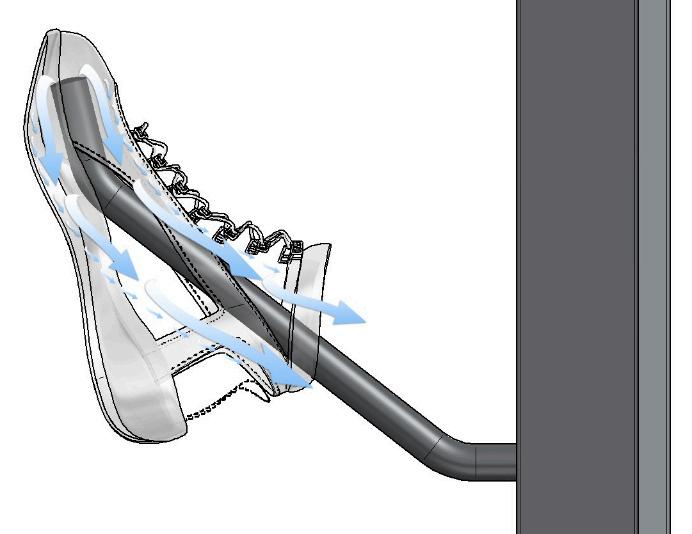
moisture and minimise the risk of bacteria and fungi multiplying. “A shoe and boot dryer should therefore be standard equipment for companies whose employees spend a lot of time outdoors,” says Fercher.
Energy consumption is an oftcited argument against installing a shoe and boot dryer, especially in these times of fluctuating energy prices. That’s why OSMA took extra care to optimise air and heat flow for significant energy savings when developing their proven systems. The brackets the shoes are hung on have been designed to direct air flow from the tip of the shoe outward through the entire interior. The most important components here are soles and inserts, which typically store the most moisture. “The drying process is most efficient when the toe of the shoe is pointing up,” Fercher explains. “That’s why we shape the holding elements in such a way as to prevent them from turning or tilting.” The optimum temperature for a quick drying result that doesn’t put too much heat on the materials is between 40 and 45 degrees Celsius and is preset on OSMA appliances.
In addition to the classic OSMA BLOW version, in which hot air flows out in all directions from the holding elements, OSMA has developed other models for specific requirements. The OSMA VACU is equipped with an additional ventilation system that removes the saturated, warm air directly from the rooms where it is installed. All hot air models can also be equipped with PHI Clean Air, which removes not just harmful particulates, but also cigarette smoke and fine dust. This keeps shoes clean even in dusty environments, while also ensuring fresh, clean air. By contrast, the OSMA WATER does not work with hot air, but has stainless steel panels that are heated with hot water. This allows the appliance to be easily connected to the existing central heating system, which further reduces energy use.

Based on their 35 years of experience in in-house development and production, OSMA can optimally
calibrate the shape of the holding elements, the air flow and the temperature. This means lighter footwear like sneakers can be dried completely in as little as 20 minutes. Heavier, thicker work boots need up to 180 minutes, and the systems can be programmed with the help of a timer. “This allows users to ensure that no more energy is used than necessary for efficient drying,” says Fercher.
Additional information: https://osma.at/
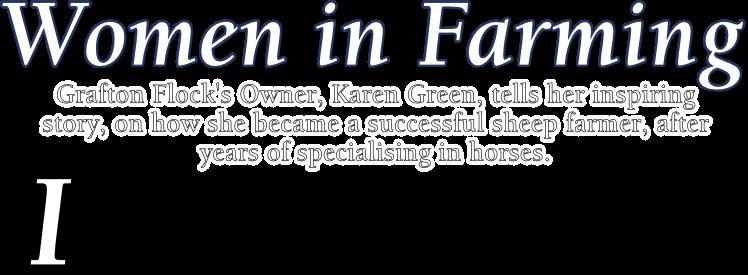
needed to take a break from them. Having been offered some grazing to manage, I thought about how to utilise the land and what to graze on it. At that point, I decided my new vocation in life would be sheep!
Having no knowledge of sheep farming, in June 2018, I had my first experience of them at the local livestock market in Stratford. Two, skinny, young ewes with new lambs at foot, in the very last pen caught my eye. I bought them along with five store lambs: that was the start of what would become the ‘Grafton Flock’.
However, nine sheep wasn't enough! I regularly attended the market and made friends with the local farmers, learning and observing as I went along. I managed to acquire another three Cheviot ewes (the most mismatched flock ever) and in November that year- with help from a great friend and sheep guru- I borrowed one of his Charollais ram lambs and let him work his magic. Fast forward to spring and my first lambing season begun! I enjoyed it so much and it reinforced my passion for sheep farming. The lambs were finished a little too slowly, but it was a huge learning curve for me. The following year, with the same flock of ewes, I fed ad-lib creep and they were finished by 12 weeks onwards.
The downside to this was that it was costly, and I didn’t feel it was the direction I wanted to be taking the flock in. I was also struggling with limited grassland and couldn't expand: the sheep were
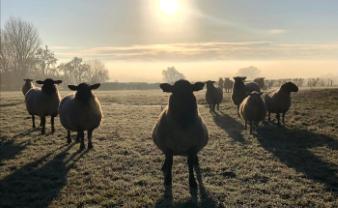
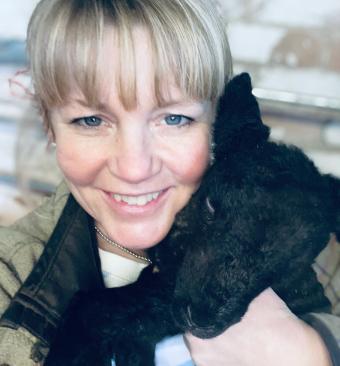
grazing selectively and not clearing up the ground efficiently. Having reviewed my farming practices, I decided that I needed to change direction to achieve my goals. I wanted to focus on the land, the soil and grazing more productively. I did some research and learned more about different grazing options. I switched to rotational grazing in August 2020 and immediately saw a positive in that the grass was utilised far more efficiently, the ewes were not selectively grazing, and I could grow more grass. This meant that the same area would allow a higher stocking rate, whilst improving the grass and soil structure. It was a win/win situation and I have not looked back since, but I still continue to learn and adapt the system to suit the land and livestock. An opportunity then arose with some ‘High Level
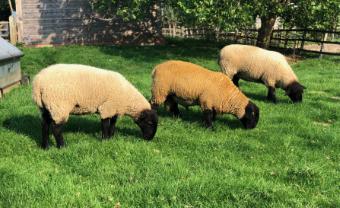


Stewardship’ grazing locally which I took up. The rotational grazing suited the land as it meant that I could utilise the sheep to meet the aims and objectives of the landowner, and also grow more grass which resulted in increased stocking rates. I started with three acres of rented permanent pasture in 2018, and through building good relationships with landowners and managing the grazing well with what I have had, I hope to have over 100 acres of grazing available by summer 2021. This will include building for lambing and storage of hay and straw. As I’m currently running at just under 100 ewes, this means that the flock has the potential to expand to 200 ewes by the end of the year.
In 2020, I purchased some Pedigree Southdown

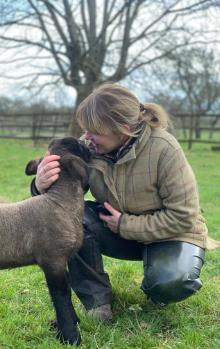
ewe lambs. Then came the arrival of Suffolk ewes and a tup. The focus is now on the original flock being phased out over time and being replaced by Suffolks - the Southdowns will be a smaller sideline with a focus on breeding stock to sell on. Having the additional grazing has also provided other opportunities, such as offering B&B grazing for other farmers who want to send ewe lambs away pre-tupping. Again, in providing an opportunity to build my flock through trading relationships like this one, grazing in return for ewes means that I have a good working knowledge of any replacements coming into the flock, with a high health status. This minimises the chances of buying-in problems from ewes with no known history.
Alongside the growth of the grazing and the flock, I looked at what I wanted to offer to the consumer. My lambs are bred for meat. However, I wanted more control over the end product. Hence Grafton Lamb was born focussing on high welfare, pasturefed lamb with provenance, low food miles and a low carbon output. I have also embraced the idea of social media in promoting my story and providing a showcase for the Grafton Flock.
If nothing else, my journey proves that there are opportunities for first-generation farmers. It has been a huge struggle at times trying to juggle lambing, lockdowns, home-schooling and shepherding on my own but absolutely worth the perseverance. I hope my story will encourage other ladies with an ambition to go for it: it may take time, but you will achieve it if you work for it!
Follow Karen on Instagram: @grafton_flock

The UK's leading vegetable handling equipment manufacturer has announced a significant appointment as it seeks to deliver even greater value to its customers.
Alan Hewitt's appointment as Haith Group's Supply Chain Manager is a direct response to the changing business landscape and global market challenges.
As Supply Chain Manager, Mr Hewitt has overall responsibility for procurement, stock levels and Haith's parts and after-sales departments.
With an integral role in the production process and after-sales support for customers, the introduction of the Supply Chain Manager role will see Haith introduce new systems to ensure the smooth production process that has been the bedrock of its growth to date continues as the company targets new markets and ambitious growth targets.
An experienced engineer whose career began in 1999, Alan has been involved in all aspects of supply chain management. Logistics, sales, purchasing and warehousing, have all been part of his remit at some point.
"My role at Haith feels like a cumulation of everything I have learnt during my 25 years in the industry," says Alan. "Every skill I have gets put to use in my new role. I am currently mid-way through a modernisation of the parts department procedures. In the next few months, we will fully overhaul several systems to further enhance the department's efficiency."
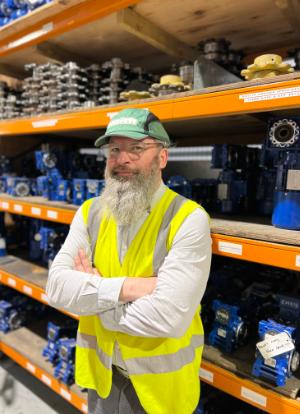

Mr Hewitt reports to Haith's Managing Director, Duane Hill, who adds: "The creation of the Supply Chain Manager role marks an important milestone for our company as we continue to grow and evolve. By strengthening our supply chain leadership, we are not only preparing for future growth but also ensuring that we can deliver even greater value to our customers."
Away from work, Alan is a keen mountain biker, guitar player and vintage computer enthusiast.
To find out more about Haith and its range of vegetable handling equipment, please visit www.haith.co.uk, email sales@haith.co.uk or call 01302 831 911



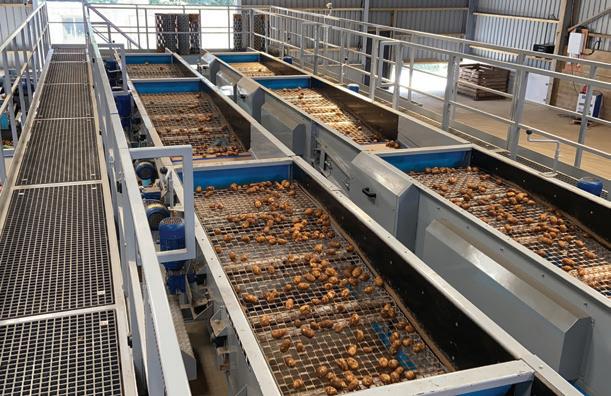
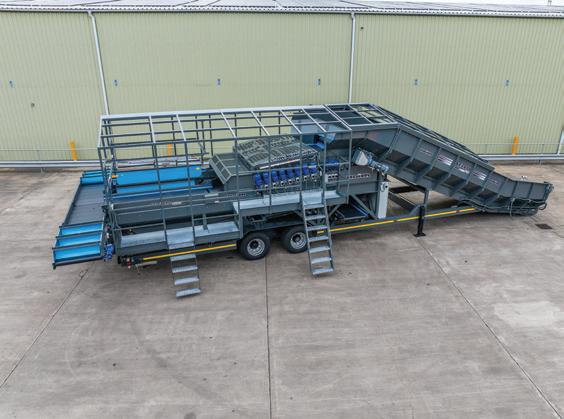
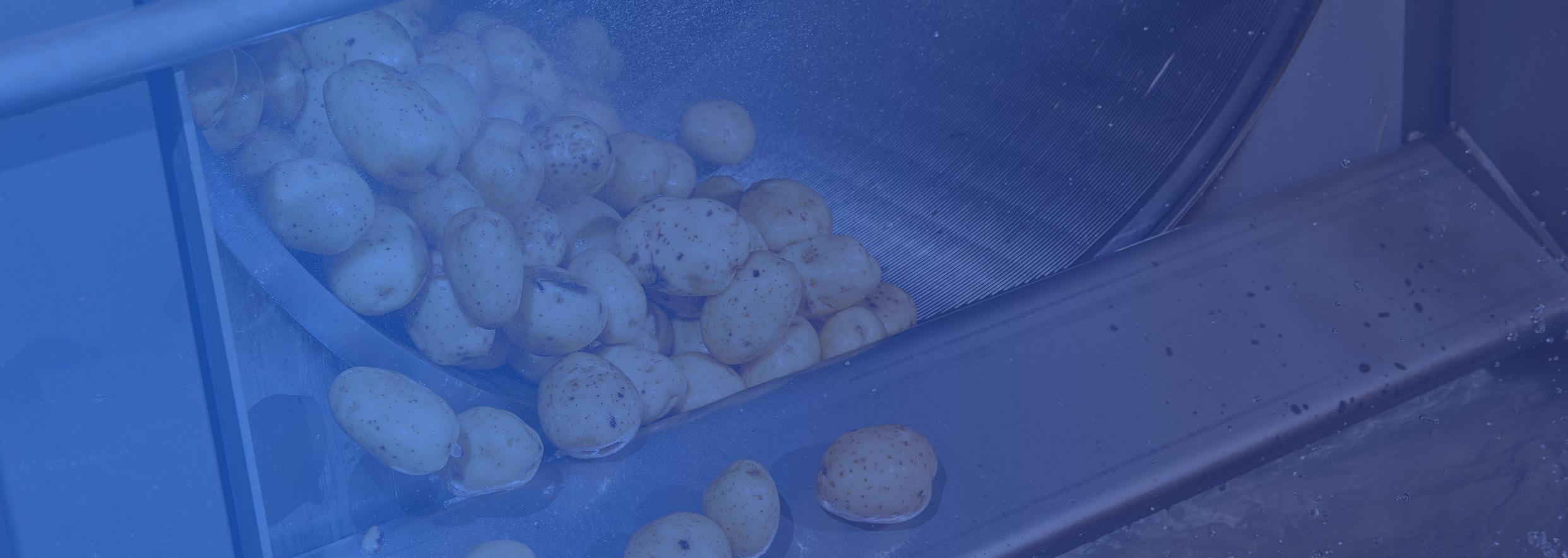
The UK's leading potato sprout control technology provider has added two new features to its system.
Biofresh Safestore now offers a CO2 monitor and Pulsed Start functionality on its ethylene potato sprout suppressant system.
The CO2monitor, which can be incorporated into new systems as an optional extra or retrofitted to existing systems, takes readings every thirty minutes with the levels displayed on the HMI screen. The system can be connected to store ventilation systems allowing fully automated management of CO2within set parameters. When using ethylene as a sprout suppressant active management of CO2levels will help maintain frycolours in processing crops.
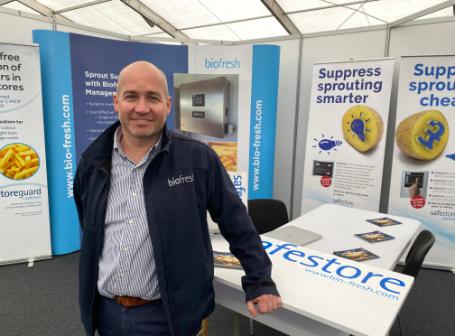
Introducing ethylene gradually to the store in short bursts (a 'Pulsed Start') followed by a gradual ramping-up of continuous ethylene can help mitigate the effect that ethylene may have on frycolours in processing potato crops. The Safestore system can be programmed to fully automate this process. Safestore technical personnel will assist growers with identifying the optimum programme for their situations allowing for varietal differences, storage temperatures and end-user specifications.
Jeremy Barraclough of Biofresh Safestore says: "As a company, we have always been focused on
providing the best possible method of helping our customers deliver the best quality product, and these two new features will make achieving that even easier. Both the CO2 monitor and the pulsed start functionality take the Biofresh Safestore system to the next level and give our growers even more control of their stores. We've worked hard to ensure that both of these new features can be added easily and quickly to existing systems and do not require existing customers to purchase completely new systems. We think both features will further enhance the quality of the potatoes that our customers are storing."
Ethylene-based potato sprout suppressant systems, such as Biofresh Safestore, are proven to be the all-round best solution for extending the life of potatoes without any chemical residue.
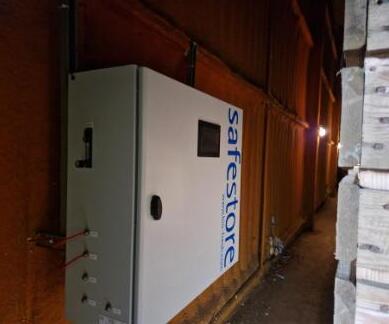
The Biofresh Safestore system is the most cost-effective ethylene system available and can be used in box or bulk stores.
In the UK, ethylene has been used commercially since 2003 as an alternative to more traditional chemical-based sprout suppressants.
Originally targeted at providing a residuefree sprout suppressant solution for prepack crops, further to the demise of CIPC in Europe, ethylene is also used extensively in crops destined for processing.
For further information and pricing, interested parties should contact Jeremy Barraclough or Richard Barnes at Biofresh Safestore by calling 01484 662414, emailing info@bio-fresh.com or visiting www. biofreshsafestore.com
023 was not an easy season for potato growers. A cold, gloomy and damp summer was followed by 6 months of appalling weather – crops abandoned and early planting nigh on impossible. For the fortunate few with crops securely stored and able to play the market, prices were at levels probably not seen since 1976. Potatoes from Cyprus, almost unseen in the UK in the 21st century, could be found in many markets. Inevitably, the response of farmers to high prices is to plant more next season. For those in the UK, planting more has proved something of a challenge – raining nearly every day through the spring and quality seed hard to find. Surely prices would remain high for 2024.
Elsewhere on the continent, however, planting conditions have proved more benign. Early harvested crops in central Europe have swiftly overwhelmed local demand and prices have fallen fast. Crops in Poland are reported to be a week ahead of normal, and the planted area in France is up 7% year on year. Careful storage of the 2024 crop is likely to be as important as ever.
Store-keepers are now familiar with the need to review every aspect of store management to ensure that they got the best from the more volatile products, such as Biox-M, which have stepped in to fill the gap left by the removal of CIPC:
• Store integrity is essential; fix any leaks;
• Ensure that stores remain closed (and closed means closed) for 48 hours following treatment, and longer where possible;
• Check air (and fog) distribution in store to ensure good and even distribution; an even distribution of fog is essential for good efficacy; address the ‘sprouty’ patches in store;
• Be very aware of the risk of condensation and/or coalescence;
• Relentless attention to detail is always strongly advised.
The focus is now on fine tuning application and store management, so that the return period can be extended for longer term storage. There is still some work on store integrity (Biox-M is unlikely to work to best advantage if is allowed to escape at any time), and distribution of fog in store during and immediately following application. Areas within a store, for which efficacy has been less than ideal, should be identified for improved air
movement, or the use of multiple application ports.
In addition, the sudden increase in energy costs since February 2022 has brought consideration of tweaks to target storage temperatures into focus. Might it be worth storing crop at a degree or so higher and take a big chunk out of the costs of cold storage?
• Is a naturally occurring and truly sustainable product, in widespread use in the food industry,
• Is approved for use on organic potato crops,
• Has no harvest interval or MRL beyond the one-day mandatory withholding period after treatment, and is thus ideal for use on crops for which the date of movement is uncertain
• Has flexibility of timing of application,
• Results in minimal weight loss in store,
• Does not leave persistent residues in the fabric of stores and boxes used for storage,
• And is therefore suitable for use in stores, which may subsequently be used for the storage of other crops or seed potatoes,
• Is effective at higher storage temperatures, reducing the risk of acrylamide development when crop is processed,
• Sequesters carbon during growth, removing 1t of CO2 for every 1,000t of potatoes treated,
• And should be a component of the sustainability plan for every farm and every customer; effectively carbon neutral.
Biox-M is the only 100% natural and sustainable sprout control for potatoes.




The only completely natural product. Stand-alone. Truly sustainable. Excellent efficacy.
Sequesters carbon during growth. Flexibility of timing.
Minimal weight loss in store. Curative and preventative. No MRL.

The
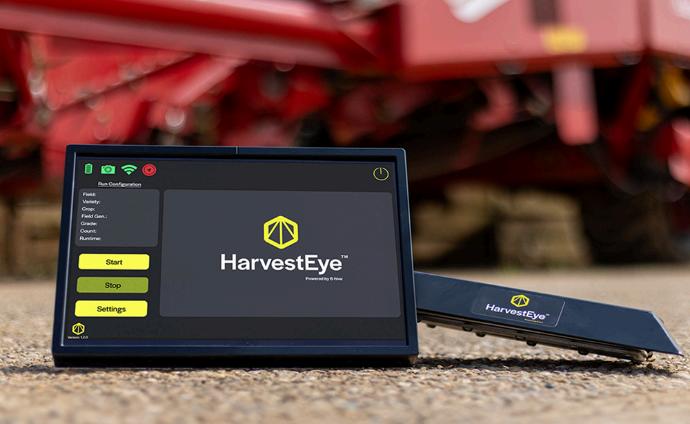
MACHINE-LEARNING driven crop insights tool HarvestEye has partnered with one of Prince Edward Island’s (PEI) prominent potato growers, G Visser & Sons, in the farm’s continued mission to provide the highest quality produce for the North American market.
G Visser & Sons has commenced using the HarvestEye system to monitor the size, shape and variability of potatoes on one of its packing lines, which sees 500 thousand pounds of produce pass through on a weekly basis. The system will aim to provide greater quality control to the grading process, complementing the manual work undertaken by sorters on the conveyer belt.
as well as a Handheld system that can be used for in-field test digs.
Harry Tinson, general manager at HarvestEye, said: “Working closely with one of PEI’s top potato growing families, our relationship with G Visser & Sons provides an invaluable opportunity within the fresh produce market.”
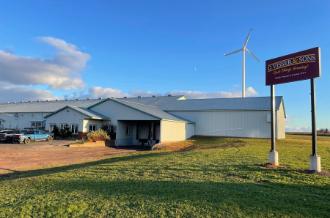
HarvestEye is a cost-effective method to deliver visibility - via an online portal - on root crop harvests, currently including potatoes and onions. The system can be fitted to grading equipment, harvest machinery for when the crop is being lifted,
“It enables us to broaden our understanding of how HarvestEye can support growers, packers and processors, particularly in respect to the challenges pertinent to PEI and other North American potato growing regions, from rich red soils unique to the island to tough conditions amid fluctuating temperature ranges.
“Having visited the G Visser & Sons team to begin our partnership, we saw a tremendous opportunity to forge a lasting relationship, as the business looks to innovate its operations while remaining true to its family values of sustainable farming.”
Adam Jay, chief operating officer at G Visser & Sons, said: “While we proudly rely on human

intuition with our team of quality sorters, we were looking to implement a system that could provide a passive real-time monitoring tool to more quantifiably evaluate shrink, reducing the impact of potential human errors, such as how fatigue can lead to inconsistent performance.
“After initially attempting to develop our own optical system, we discovered HarvestEye while attending Fruit Logistica and were impressed by how the system could apply to our needs. Having now become accustomed to the system in operation on one of our packing lines, we have found HarvestEye’s daily reporting to be incredibly insightful. It is a tool that we believe can help us continue to provide the high quality products that our customers require and the data to help ensure that we optimize the return for the grower of each lot of potatoes.”
As the partnership develops, G Visser & Sons hopes to expand the integration of HarvestEye across more of its operations and generate a greater return on investment. This could include being set up on more lines in its pack plants, as well as implementing in the field on harvesting machinery, and using the Handheld system for test digs, to help assess crop progression, make yield and size forecasts, assist with harvest timing, etc.
Vidyanath (Vee) Gururajan, managing director of HarvestEye, said: “PEI is integral to the North American potato industry and by building relationships with established growers such as G Visser & Sons, who have a deep-rooted understanding of the
growing landscape, we can continue to innovate the hardware and software elements of our product to offer even more bespoke support to customers.
“As HarvestEye continues to expand into the North American market, we are committed to interacting with more users on the ground through partnership and distributor relationships, enabling more opportunities and flexibility to trial, feedback and adopt the system.”
Growers, packers and processors are encouraged to secure subscription, rental and lease options on HarvestEye units. For more information, visithttps:/ /www.harvesteye.com/
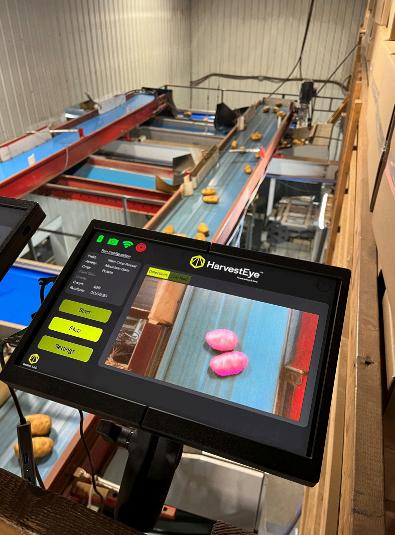


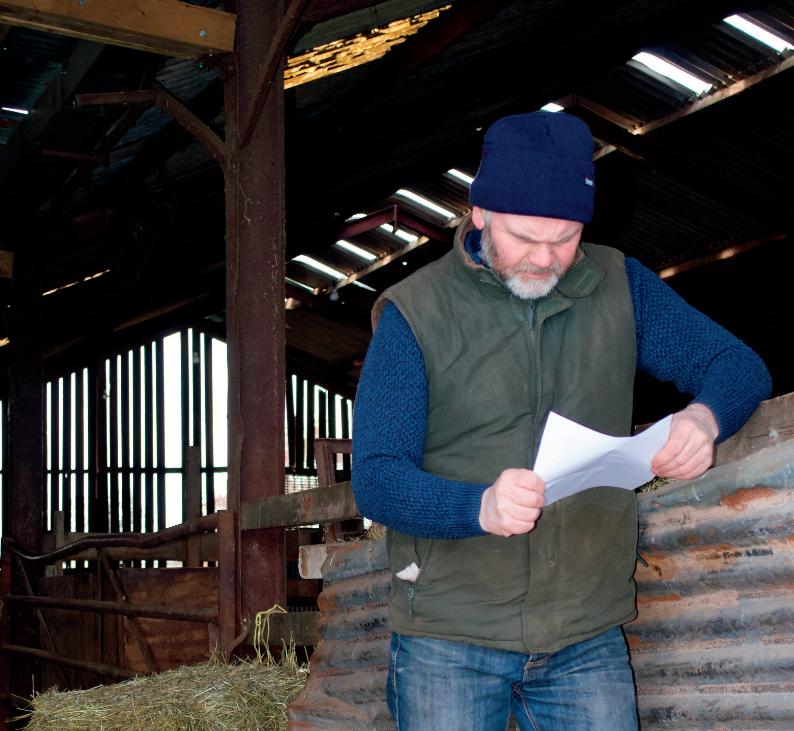





In the heart of England lies Melton Mowbray, a charming town that proudly wears the title of the “Rural Capital of Food.” This accolade is not merely a nod to its picturesque landscape; it is a celebration of the rich tapestry of culinary traditions that have flourished here for centuries. Among its most cherished offerings is the iconic pork pie, a delightful dish that embodies the essence of British culinary heritage and the spirit of rural living.
The story of the pork pie stretches back to medieval times, its roots embedded in practicality and preservation. Emerging around the 12th century, these early pies were crafted as a means to extend the life of meat, encased in a thick, sturdy pastry that protected its savoury contents. This ingenious method not only kept the meat fresh but also provided a portable meal for those on the move—travellers, soldiers, and rural folk alike found comfort in these hearty pies.
Melton Mowbray quickly became synonymous with exceptional pork pies, thanks to the fertile fields and thriving farms that surrounded it. The local landscape, rich with natural resources, offered an abundance of high-quality pork, allowing butchers to refine their recipes and elevate this humble dish into a beloved regional specialty. The town's butchers became known for their craftsmanship, transforming simple ingredients into something truly extraordinary.
As the 18th and 19th centuries rolled in, the pork pie evolved into the iconic form we cherish today. Skilled local butchers took pride in their unique creations, often adding a layer of gelatine to enhance both flavour and moisture. This hallmark

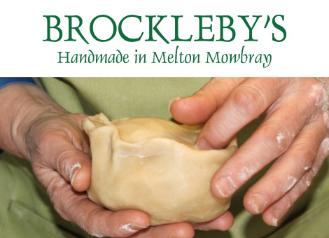
of quality, combined with the artisanal approach to pie-making, solidified the Melton Mowbray pork pie’s esteemed status.
Characterized by its robust hot water crust pastry, the Melton Mowbray pork pie is a masterpiece of culinary craftsmanship. Each pie is a labour of love, lovingly moulded by hand to create a golden, flaky exterior that encases a rich filling of seasoned pork, sometimes complemented by aromatic herbs and spices. The artistry involved in crafting these pies speaks to a deep respect for tradition and an unwavering commitment to quality. Each bite offers a taste of history, evoking the passion and dedication of generations of bakers.
Among the stalwarts of this culinary tradition is Brockleby’s, a family-run establishment that has perfected the art of pie-making through generations. Founded on the principles of quality and sustainability, Brockleby’s sources its ingredients from local farms, ensuring that every

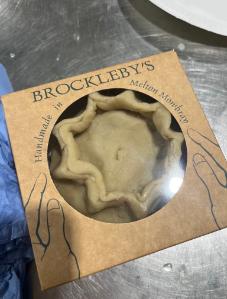
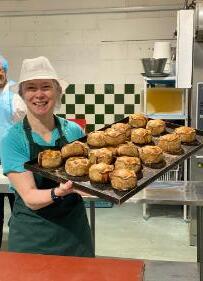
pie reflects the vibrant flavours of the region. Their pork pies are infused with a passion for flavour, showcasing a harmonious blend of spices and succulent meats that pay homage to Melton Mowbray’s storied past.
Brockleby’s is not just about producing delicious pies; they also foster a spirit of community engagement through their pork pie workshops, inviting enthusiasts to immerse themselves in the craft. Recently, I had the pleasure of participating in one of these workshops, an experience that was both enlightening and exhilarating. From the moment I rolled out the pastry to the final assembly of ingredients, every moment was filled with laughter and learning. Surrounded by fellow food lovers, I was struck by the joy of creating something so deeply rooted in tradition. The camaraderie among participants, united by a shared love of this iconic dish, made the experience even more special. It was a joyful celebration of our culinary heritage, where hands-on engagement deepened my appreciation for the artistry behind the pork pie.
The Melton Mowbray pork pie is more than just a dish; it is a cherished symbol of the town's identity. In 2008, it was awarded Protected Geographical Indication (PGI) status by the European Union, safeguarding its authenticity and ensuring that only those produced in the traditional manner within a designated area can bear the name. This recognition not only protects the legacy of the pork pie but also honours the hard work and dedication of the artisans who craft them.
Pork pies have become a staple at local markets, gatherings, and festivals, where they are celebrated as a quintessential British treat. The annual Pork Pie Festival in Melton Mowbray is a testament to this, featuring tastings, competitions, and demonstrations that bring the community together in a shared love of food and tradition. Here, locals and visitors alike gather to indulge in this iconic dish, reinforcing its significance within the community and showcasing the town’s commitment to preserving its culinary heritage.
While the traditional pork pie holds a special place in our hearts, the culinary landscape of Melton Mowbray is continually evolving. Creative bakers and chefs are experimenting with innovative

flavours and fillings, infusing the classic recipe with contemporary twists. From spicy chorizo and apple combinations to enticing vegetarian options, the pork pie continues to captivate palates and adapt to modern tastes while remaining true to its roots. This fusion of tradition and innovation ensures that the pork pie remains relevant in today's diverse culinary scene, appealing to both purists and adventurous foodies alike.

The history of the pork pie is a profound testament to Melton Mowbray's rich culinary legacy. As the Rural Capital of Food, this vibrant town has preserved its cherished traditions while welcoming innovation, ensuring that the pork pie remains a beloved staple for generations to come. Whether savoured on a sunlit picnic, at a bustling market stall, or in a cozy, inviting pub, the Melton Mowbray pork pie is more than just a dish; it is a delicious slice of history, a reflection of British lifestyle, and a celebration of community spirit. With local treasures like Brockleby’s leading the way and engaging workshops inviting everyone to partake in the joy of pie-making, the legacy of the pork pie continues to flourish, bringing people together around the timeless pleasures of good food and shared stories.
In every bite of a Melton Mowbray pork pie, one can taste not just the carefully selected ingredients but the very essence of a community that values its culinary heritage. As we indulge in these savoury delights, we honour the traditions that have shaped this remarkable town and look forward to the innovations that will ensure its legacy continues to thrive.
Give the gift of a unique culinary experience this Christmas—purchase a gift card for a Brockleby’s pork pie workshop and share the joy of creating delicious memories with your loved ones!
https://www.brocklebys.co.uk/
X @BrocklebysPies
Instagram: @brocklebys_pies
Facebook: @brocklebys
Written by Olivia Shave
Instagram: @ecoewe

n Northern Lincolnshire, a Chopper Pump made by Landia has completed five years of continuous service at the main, 2MW biogas plant run by Singleton Birch, who for over two hundred years, have produced high quality lime products.
Working underground as part of an automated system for dirty run-off water, the
Landia pump chops up maize and other particles that end up in the drainage; sending the recirculated liquid to the site’s lagoon, or back to the digesters as and when required.
“The Landia Chopper Pump does an excellent job,” said Danny Mason, Renewable Energy Supervisor at Singleton Birch, where the AD plant’s three 2800m3 digesters use a feedstock of maize, chicken litter and sugar beet.
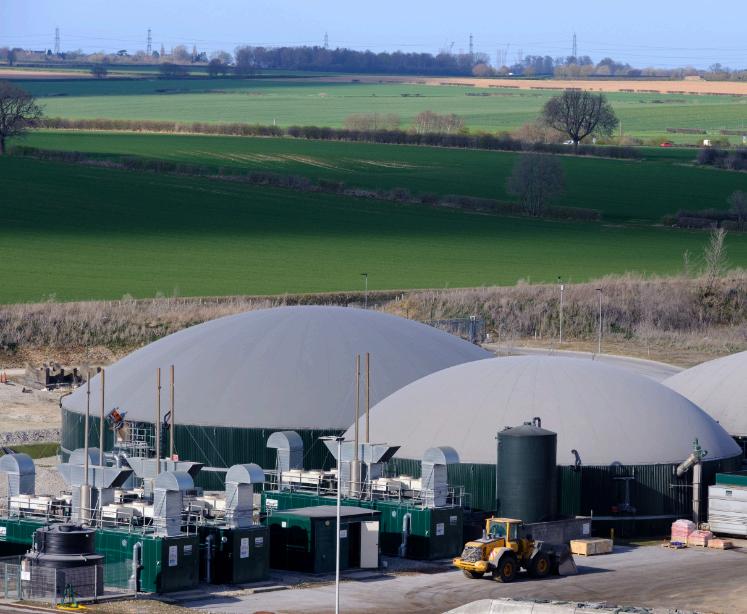


He added: “The pump is very easy to maintain and has really helped us out with drainage on site, chopping up solids that would block up lesser quality pumps. Landia take care of the full servicing, and always ensure that there isn’t any downtime.”
Invented by Landia in 1950, the Chopper Pump is designed with an external knife system that continuously reduces solids. In addition to this Landia unit at Singleton Birch, Landia has numerous Chopper Pumps installed at biogas plants as part of its digester mixing system. These include Scottish Water, Eco Verde Energy, and Republic Services in California.
www.landiaworld.com

Optimize biogas yields to achieve energy net-positive digester mixing with Landia’s innovative technology.
Landia GasMix can be installed in any type of digester to handle all types of sludge up to 10% TS.


new two-day showcase will explore how transforming the UK’s biomass industry can unlock a sustainable and resilient future - boosting energy security, supporting agricultural and environmental goals, and driving economic growth.
Innovation and knowledge-exchange platform
Biomass Connect will host the new event ‘Harnessing Innovation and the Future of Biomass’ at Warwick University’s prime meeting space The Slate, on 7-8 November.
The free event features a series of engaging talks, demonstrations, and networking opportunities with industry leaders, innovators, stakeholders, and allied industries, who will share the latest in biomass research and innovation from laboratory breakthroughs to real-world applications on farms.
“Through this two-day event we aim to develop a vision for the role of UK-produced biomass in the drive towards net zero,” says Professor Jeanette Whitaker, Biomass Connect project lead and principal scientist in soil and land use at the UK Centre for Ecology & Hydrology.
“The Government’s Biomass Strategy 2023 highlights biomass as a key player in decarbonising various sectors of the economy. The Climate Change Committee (CCC) recommends that to meet Government net zero targets, 700,000 ha of biomass crops will need to be planted in the UK by 2050, compared to the 10,000 ha currently planted.”
The CCC has also identified the need for training and knowledge exchange across the sector, to give farmers and landowners confidence in the integration and upscaling of biomass production.
"Biomass Connect serves as a pivotal hub for innovation and knowledge-sharing. By integrating knowledge sharing, research and practical demonstrations, we are driving the sector towards a sustainable and economically viable future,” she adds.
So what can delegates expect from the agenda?
At the heart of the showcase will be the demonstration of some of the most recent developments in the sector from innovation projects participating under the government-funded Biomass Feedstocks Innovation (BFI) programme.
Delegates will hear from leading global experts including Will MacAlpine at Rothamsted Research and Kerrie Farrar at Aberystwyth University on how genomic selection is accelerating the development
of short rotation coppice (SRC) willow, and new, resilient miscanthus varieties. Seed technology and novel crop varieties of the future will also be discussed by Paul Carver, New Energy Farms.
Practical insights from farmers, crop suppliers, and consultants on how to implement biomass into land management strategies will also be shared. Tenant arable farmer John Hawkins will share his experience of incorporating biomass crops, while Crops for Energy’s Kevin Lindegaard, highlights how connectivity and the decision-making tool Envirocrops positions farmers and the wider industry for success. New end uses for natural biomass resources, like heather, will also featureas will how biomass crops can improve and protect natural resources.
Delegates can also experience the future of willow planting and harvesting with Willow Energy’s Jamie Rickerby showcasing his cutting-edge robotic planting and harvesting machinery.
Aeroponics to fast-track sustainable propagation of willow is also set to feature, as is the optimisation of miscanthus establishment through improved mechanisation and data capture.
Workshops and speakers will focus on the future of the biomass industry and its integration into carbon frameworks. Oxford University’s Steve Smith will discuss carbon dioxide removal and global scale up, while Enrique Cornejo at Offshore Energy UK will discuss the development of industrial scale long term carbon storage.
From further afield, Tim Volk at SUNY College of Environmental Science and Forestry (USA), will reflect on willow production in the US, before the two days concludes on creating a blueprint for a future UK biomass industry.
"The showcase is a pivotal gathering for the UK biomass sector,” says Prof Whitaker. “By bringing together industry leaders and key stakeholders, we aim to forge a blueprint for a commercially viable future of biomass, aligned with the UK's net zero ambitions.
"We invite all stakeholders, from landowners to policymakers, to join us at The Slate, Warwick University, on 7-8 November.”
To view the showcase agenda (subject to change) and to register for this free and transformative event, visit www.biomassconnect.org/showcaseevent/











heLow Carbon Agriculture Show 2025,theUK's only event dedicated to sustainable farming and carbon reduction practices, is returning to NAEC Stoneleigh on the5-6 March 2025. As the only event of its kind in the country, the show offers exhibitors a unique opportunity to showcase cutting-edge technology, services, and solutions to a highly engaged audience of forward-thinking farmers, landowners, and industry operators.
Exhibitors at the Low Carbon Agriculture Show will position themselves at the forefront of the sector's transition towards more sustainable and environmentally conscious farming practices. With the UK agricultural sector playing a pivotal role in achieving the nation'sNet Zero goals, the event serves as a critical hub for connecting solution providers with those eager to adopt new technologies and strategies to reduce carbon emissions and promote environmental stewardship.
The Low Carbon Agriculture Show brings togetherfour major sectorsunder one banner, each with its own dedicated conference theatre:
1. Environmental Business:As UK agriculture transitions from the EU's CAP regulations to a system that rewards sustainable farming, the Environmental Business sector provides insights into policy changes and opportunities for growth through improved environmental performance.
2. Clean Energy:As rural communities increasingly contribute to decarbonisation and energy security, the Clean Energy theatre will showcase renewable energy solutions, such as solar, wind, and bioenergy, that are reshaping the future of rural energy generation.
3. Low Emission Vehicles:With the transport sector undergoing a transformation, particularly in response to the 2030 ban on new petrol and diesel vehicles, this sector highlights the latest innovations in low-emission vehicles that farmers can adopt to reduce their carbon footprint.
4. Farm Technology Innovation:Focusing on the pioneering technologies transforming agriculture, this sector will highlight innovations such as precision farming, automation, and AI-driven solutions that can enhance efficiency and sustainability on the farm.
Why Exhibit at LCA 2025?
Following thesuccessful 2024 show, which saw over 120 exhibitors connect with an engaged audience, this year promises even greater opportunities for businesses to

network, demonstrate their innovations, and engage with thought leaders driving the agricultural sector's sustainability agenda.
Reach a Targeted Audience:LCA attracts a highly focused group of farmers, landowners, and industry professionals actively seeking solutions to improve their environmental impact. Exhibiting at the show offers businesses the chance to meet face-to-face with key decision-makers ready to invest in sustainable technologies and services.
Showcase Innovation:The exhibition hall will be full of industry advancing technology, and exhibitors will have the opportunity to position their brand at the heart of the UK's agricultural transformation towards Net Zero. With live demonstrations and product showcases, companies can demonstrate the tangible benefits of their offerings.
Networking and Knowledge Sharing:With expert-led conference sessions, networking opportunities, and highlevel debates across the four conference theatres, exhibitors will have access to invaluable insights into the latest trends, policy developments, and future challenges affecting the sector.
Proven Success and Growing Momentum
Nick Ornstein, Managing Director at Agriconnect, comments, "Since the acquisition of the show in May 2023, we have been delighted by the growth in both exhibitor and visitor numbers. The enthusiasm from the industry highlights the importance of a dedicated event that helps address the challenges of climate change and reducing carbon emissions. The 2025 edition is set to be even bigger and more impactful, bringing together solution providers and farmers looking to shape a more sustainable future."
The2024 post-show reportrevealed a buzzing exhibition hall filled with farmers and landowners actively researching the latest products and innovations to make their businesses greener. The event proved to be an unmissable opportunity for exhibitors to network with a highly engaged audience seeking practical solutions for their sustainability goals.
Exhibitors interested in being part of this crucial event for the UK agricultural industry are encouraged to secure their stands early to take advantage of the show's growing momentum. Join the movement driving the future of sustainable farming and energy solutions by booking your space at theLow Carbon Agriculture Show 2025.
https://www.lowcarbonagricultureshow.co.uk/

eoptimize Systems, a leader in optimizing wind turbine performance, is pleased to announce the appointment of Dr Mike Anderson as its new Chair of the Board. Mike brings a wealth of experience and a deep commitment to the renewable energy sector and will play a critical role in positioning Reoptimize Systems for continued growth and innovation.
Mike is a renowned figure in the renewable energy industry, having cofounded RES (Renewable Energy Systems Group), the world’s largest independent renewable energy company. He served as Group Technical Director at RES from its inception in 1982 until his retirement in 2017. His leadership and vision have been instrumental in advancing global renewable energy initiatives and delivering clean power around the world.
Reoptimize Systems offers a data-driven platform to fine tune turbines to optimize the power curve and extract more clean energy. The solution reduces downtime and achieves on average a 3% annual energy production increase as extending asset life by minimizing loading on turbine towers.

Mike currently serves as the Chair of The European Technology & Innovation Platform on Wind Energy (ETIPWind) and holds several non-executive director positions in leading wind energy companies. His extensive expertise and strategic insights will be invaluable as Reoptimize Systems continues to drive advancements in wind turbine performance.
Juan Pablo Echenique, CEO of Reoptimize Systems, said: “We are thrilled to welcome Dr Mike Anderson as our new Chair of the Board. His unparalleled experience and deep industry knowledge will be a tremendous asset as we continue to innovate and expand our offerings in the wind energy sector.”
Dr Mike Anderson, commented: “I am excited to join Reoptimize Systems at such a pivotal time for the renewable energy industry. I look forward to working with the team to deliver solutions that will play a key role in the energy transition and contribute to a more sustainable future by enhancing the efficiency and performance of wind turbines.”
The appointment of Dr Mike Anderson underscores Reoptimize Systems' commitment to leadership in the renewable energy sector and its dedication to driving forward the adoption of clean energy technologies.
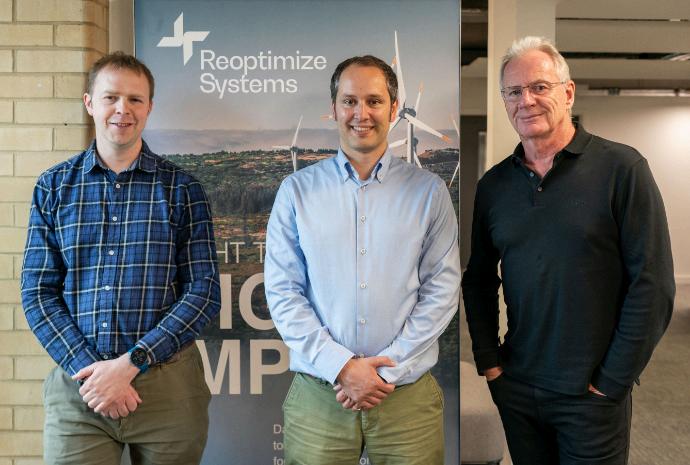


ith the increasing challenges of changing weather patterns, it’s crucial for cattle housing to provide optimal conditions for animal welfare year-round. At Robinsons we specialise in designing agricultural buildings that cater to these needs, ensuring durability and adaptability through every season.
We offers advanced roofing solutions, such as fibre cement roofs, which are not only durable
but also excellent for natural ventilation. These roofs are designed to handle heavy rainfall and intense sunlight, mitigating heat and moisture build up inside the building. The use of materials like Light Ridge, which incorporates waterproof PVC and wind guide plates, enhances natural light transmission and airflow, crucial for maintaining a healthy environment for livestock.
Proper ventilation is essential to prevent heat stress and improve air quality within cattle
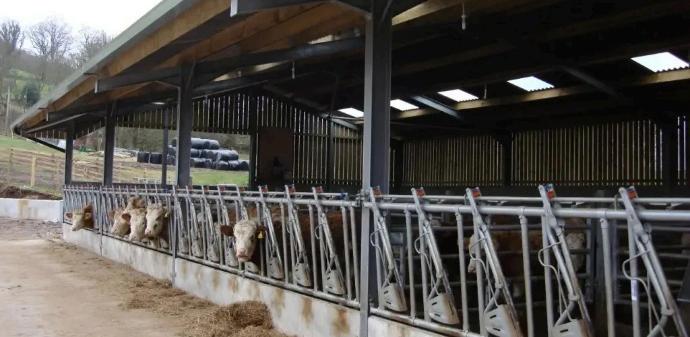
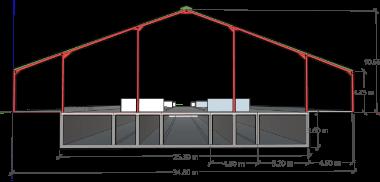
buildings. We utilise innovative systems, which allows for controlled airflow, removing stale air while protecting from rain. These systems, along with options like Open Protected ridges with polycarbonate strips, ensures a balance between ventilation and light, critical for cattle comfort.
The choice of cladding, such as Yorkshire Boarding with specific gaps, is another crucial feature. This not only facilitates airflow but also helps in managing internal temperature and humidity levels, protecting cattle from extreme weather conditions. Robinsons designs often incorporate cantilevered sides, providing sheltered feeding areas that offer easy access for machinery and maintain ventilation.
Understanding that every farm has unique requirements, we offer bespoke solutions tailored to specific herd needs. Whether it’s adjusting the height of ridges or selecting the appropriate materials, their approach ensures that the buildings are

not just functional but also enhance animal welfare and productivity.
Understanding that every farm has unique requirements, at Robinsons we can offer bespoke solutions tailored to your specific herd needs. Whether it’s adjusting the height of ridges or selecting the appropriate materials, their approach ensures that the buildings are not just functional but also enhance animal welfare and productivity.
Contact Robinsons Group on 01576 205 905 or visit us on www.robinsons-group.com

With harvest season 2024 well underway, SP Energy Networks is reminding those employed in the farming and agricultural industry about how to stay safe when working near or around the electricity network.
Research by the electricity network provider has found that two people are killed and many more are injured every year in the UK due to contact with overhead electricity lines during agricultural work.
Getting those numbers down is key, so SP Energy Networks is sharing its top tips to outline how to identify potential hazards, safely operate electrical equipment, and respond to emergencies if necessary.
They are clear and simple to follow – and they could save a life:
• Look out. Look up! When working on farmland near overhead powerlines, be mindful of machinery and its size as it passes

underneath – particularly if working with new machinery, extendable machinery, and bigger equipment.
• Map it out: mark up a farm map with underground cable routes, operating voltages and approximate heights of overhead power lines running across your land, near boundaries and access routes to fields. If you don't have a map of your farm, contact your network operator for a network plan or visitwww.lsbud. co.uk. You can always get in touch with your network operator if you're unsure about the equipment on ornearby your land.
• Tell others about potential hazards: Ensure you inform staff, contractors, and delivery drivers of potential electrical hazards on the farmland before any work begins.
• Have the national 105 electrical emergency helpline number close to hand in case you need help – it's available 24/7. If anyone is injured, call 999 immediately for medical attention.
• Beware of fallen powerlines: In the event of a powerline falling on your land, take extreme care. Powerlines can remain live, even if they appear unaffected, so it's essential to keep people and livestock away, then contact the electricity network operator via the 105 electrical emergency hotline number. If anyone is injured, or there are lots of people around, call 999.
• Bunny hop: If your vehicle makes contact with an overhead powerline, do not exit the cab until the electricity network operator confirms that it's safe to do so. If the machine is inoperable and there is a risk of an immediate hazard to you and you need to exit, jump clear, making sure you don't hold onto any machinery and touch the ground at the same time. Once out of the vehicle, do your best to 'bunny hop' or take leaping strides, so that one foot is off the ground at all times until you are at least 15 metres away.
Derek Bell, Health and Safety Director at SP Energy Networks said:"For those working in the industry, these tips might seem like common sense, but our experience shows that they are often overlooked. By reminding people of what they need to think about at such a busy time on the farming calendar, we want to make a difference and power a safer farming future."
Over 600 Police Officers across the UK registered for the new RAPID asset search application in its first week of launch.
RAPID, the Registered Assets Police Information Database, is a powerful web-based search tool designed to significantly enhance the speed and efficiency of plant and machinery identification. With advanced mobile technology, RAPID enables officers to access the CESAR Database of over 650,000 registered assets directly from their smartphones, allowing for quick identification of stolen property and swift progress in investigations.
Drawing on information from the CESAR Database, the Police National Computer (PNC), and the IFNOL insurers database, RAPID offers the most comprehensive asset check available to the police. Officers can identify an asset using accessible identifiers such as the CESAR ID number, Datadot® number, etch or RFID, engine number, or VIN. RAPID even delivers search results based on partial number inputs.
precision when identifying and recovering stolen assets.This is a brilliant step by the industry with their scheme."
The RAPID web application employs industryleading encryption protocols to ensure data integrity, with access limited to verified and authorised officers. The system logs every search, tracking details such as the officer's identity, asset details, and geolocation, ensuring all interactions with the database are secure and traceable.

Viki Bell, Director of Operations at the CEA, which owns the CESAR Scheme, commented: "Our goal has always been to make plant identification straightforward, simple, and effective. RAPID makes the CESAR Database even more accessible to law enforcement on the front line, significantly enhancing operational efficiency."
In addition to its fast and straightforward identification capabilities, RAPID includes a library of over 130 plant and machinery orientation videos, guiding officers to locate key identification plates and labels on commonly encountered machines.
National Police Chiefs Council lead for agri and construction machinery thefts,Superintendent Andy Huddleston of NCATT (National Construction and Agricultural Theft Team), said: "RAPID represents a significant leap forward in how law enforcement identify plant and machinery, which is crucial not just during investigations but more so because it's very nearly the equivalent of doing a PNC registration plate check on a car." He added, "By offering the power of the CESAR Database to every police officer, it enables teams across the UK to operate with greater confidence, speed and

Kevin Howells, CEO of CESAR technology provider DATATAG ID, added, "We developed RAPID to allow every officer in the country to identify an asset—whether a digger, tractor, ATV, or motorcycle—quickly and easily. RAPID is built on the fundamental concept that any visible identification mark can be used, helping officers in the fight against organised crime."
Key features of RAPID:
• Access anywhere, any time: Mobile-friendly design enables verification on the go.
• Instant asset verification: Immediate search results for faster response times.
• Enhanced investigative support: RAPID's video library aids officers unfamiliar with plant machinery in locating key information.
• User-friendly interface: Intuitive design ensures quick familiarisation with minimal training required.

The National Association of Agricultural Contractors (NAAC) is asking contractors and farmers why they wouldn't wear an ATV helmet. In a follow-up to the #WearItandShareIt campaign when the NAAC invited social media users to photos of themselves wearing a helmet, this new campaign asks why anyone would nownotwear a helmet and emphasises there really are #noexcuses.
Shockingly since April 2024, there have been five deaths linked to a sit-astride ATV (aka a quad bike) - the most significant cause of deaths involving moving vehicles in our industry. Other serious and life-changing incidents are happening all the
time.Yet there is still resistance to wearing a helmet.
The NAAC is raising the question why anyone would choose to ride a sit-astride ATV, or deliberately send a worker or family member out on a job, with no helmet knowing there is a real and proven risk of loss of life, which could be reduced by using a helmet.
Commenting Jill Hewitt, NAAC Chief Executive said, "We have seen an increase in quad bike deaths this year and it baffles me how our industry still considers this is a risk worth taking. Whether on flat or sloping land, incidents can always happen, and we need to be clear that it is a legal requirement to wear a helmet at work. More important though, if you wear a helmet, you are more likely to survive if you come off."

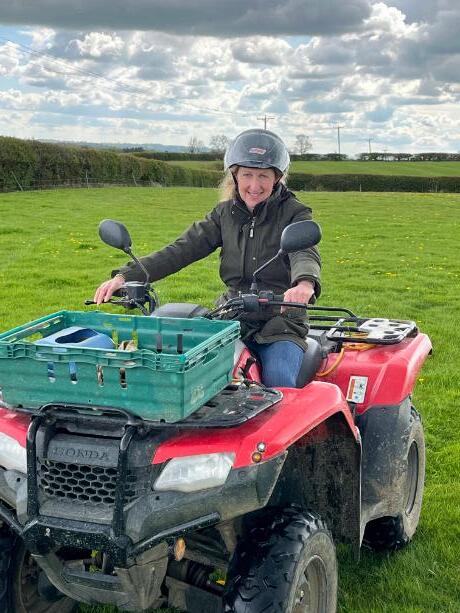

HSE has confirmed if there is an incident and someone was not wearing a helmet, this will be a key part of the investigation and could result in enforcement , including prosecution. Enforcement action will also be taken if an inspector sees someone working without a helmet on farm.
Of course, simply wearing a helmet will not keep everyone fully protected and it is vitally important to ensure that anyone riding an ATV is competent and trained to handle the machine. Training is crucial because it covers essential active riding techniques necessary for the safe operation of the ATV.
The NAAC's previous campaign drew support from manufacturers and the NAAC offers a discount on helmets to its members. We are seeking further solutions to encourage everyone across the industry to wear a helmet.Please support our #IfnotWhyNot campaign on social media to help raise awareness and save lives.
Farmers are being urged to be vigilant and increase security this autumn as quad bikes and ATVs continue to be targeted by thieves, new data from NFU Mutual and the National Rural Crime Unit (NRCU) reveals.
Intelligence shows that the East and South East of England in particular saw spikes in ATVs being stolen last month, but there are concerns thieves may travel the length and breadth of the country to scope out and steal these valuable and highlydesired vehicles.
In 2023, quad bike and ATV theft reported to NFU Mutual cost an estimated £3.2m, up 9% compared to the previous year, and NFU Mutual and the NRCU are concerned a recent spike in thefts could affect farmers this autumn.
Hannah Binns, NFU Mutual Rural Affairs Specialist, said: "It is worrying to see quad bike and ATV thefts hitting farmers in the past month, with spikes in the East and South East of England already.
"The very nature of farmland makes these vehicles essential to farmers' ability to get around their fields and effectively complete work, making a theft highly disruptive.
"Being from a family farm, I know the toll rural crime has on those who live and work in the countryside. It's not just the unnerving feeling that criminals have staked out and targeted the farmyard, often where the family home is too, but the worry that the thieves will return in the weeks that follow.
"In fact, we've seen several incidents where criminals have revisited rural locations previously targeted to steal the replacement ATV or quad bikes, which is extremely concerning.
"To help prevent quad bike and ATV thefts, it is vital farmers remove keys when not in use and store the vehicle securely out of sight. Mechanical devices, such as steering brake/lock or wheel clamp can act as visible and physical deterrents to thieves.
"Tracking devices and immobilisers are often GPS enabled with alarms and alerts that will can send messages informing you if your vehicle is being tampered with, so consider installing these. Such technology can also assist the police in helping recover stolen vehicles."
Superintendent Andrew Huddleston, who leads the National Rural Crime Unit, said:"Alongside NFU Mutual and Police figures indicating a rise in quad bike thefts, we're moving into earlier dark nights that make it easier to steal ATVs from farms.
"High demand linked with common poor security on ATVs continues to make these a highly desirable machine for thieves.
"While there has been some recent success with several arrests in relation to ATV thefts in the North of England I would ask farmers across the UK to remain vigilant, check security lights and cameras are working as well as keep gates closed – these are simple but we know effective measures.
"Lastly and I would argue crucially, if you are not part of your local Rural Watch scheme you really need to be."
NFU Mutual has a range of incentives for its farming and rural customers to invest in prevention, such as policy discounts for those using measures such as CESAR marking, approved trackers, immobilisers and mechanical devices.
NFU Mutual and theNational Rural Crime Unitare issuing the following advice:
• Always remove keys and keep them stored securely, away from the vehicle
• When not in use, keep quad bikes and ATVs locked up out of sight
• Install tracking devices and immobilisers to make it easier for police to recover stolen vehicles - most modern tracking devices are GPS enabled, with alarms/alerts that will send a message informing you if your machine is being tampered with. You can also set working hours and geofences to alert you if a machine is being moved outside of a pre-set working area
• Use CESAR marking to deter thieves and enable police to identify stolen machinery
• Target-harden your quad bike by creating a security cage or use a mechanical device such as steering brake/lock, ground anchor or wheel clamp when not in use - these devices are both visible and physical deterrents to thieves
• Know what you own – keep records of serial numbers and photographs of your kit including unique identifying features
• When purchasing a new quad bike ask for a chipped key and immobilisation system
NFU Mutual and the National Rural Crime Unit have produced theft prevention videos on quad bike and farm vehicle security which are available at:https://www.youtube.com/playlist?
list=PLCGdB27NXuooScjLAfZCaVjesU8sd06u8

The biggest number of UK red meat exporters for a decade have been flying the flag for beef, lamb and pork at the world's leading trade show.
Thirteen red meat export businesses have joined the Agriculture and Horticulture Development Board (AHDB) at the SIAL trade show in Paris, which is celebrating its 60thanniversarythis year, to promote beef, lamb and pork.
AHDB's export team has also provided support for dairy export businesses at the show, which boasts 11 halls for 10 industry food sectors, attracting buyers from countries across the world.
UK red meat and dairy exports in 2023 were worth £1.7 billion and £1.8 billion, respectively.The show provided the platform for export businesses and the AHDB team to fly the flag for UK red meat and dairy, connect with existing buyers and meet new potential customers to help ensure UK beef, lamb, pork and dairy continue to flourish on the global stage.
quarter.SIAL provides our exporters with the ideal platform to showcase what we have to offer while connecting with buyers from around the world to grow further trade opportunities.

"Following hot on the heels from our support last month for the DBT-led Dairy Showcase, our attendance at SIAL underlines AHDB's commitment to working with industry and government to help ensure opportunities for UK red meat and dairy exports are maximised in markets the world over.

More than 200 delegates were also due to join AHDB for its 30thBritish Red Meat Dinner on the evening of October 21, attended by HM Ambassador to France Dame Menna Rawlings DCMG CVO. The annual dinner coincides with the SIAL show, providing guests with thechance to sample dishes featuring UK red meat and dairy.
Graham Wilkinson, AHDB CEO, said: "I'm delighted so many red meat exporters have joined us at SIAL for its milestone 60thanniversary and that we've also been able to support our colleagues in the dairy sector, showcasing our world-class produce.
"For the red meat sector,exports play a key role in balancing the carcase, enabling us to fully maximise global opportunities for our products, from shipping premium products to fifth

"SIAL is the shopwindow to the world for our products and we, as an organisation, are proud to offer valuable on-the-ground support at events like this that can deliver tangible positive business outcomes."
SIAL has also seen the further roll-out of AHDB's Quality Meat from Britain branding in Europe to communicate consistent messaging around provenance and high production standards of red meat.
Graham added: "We've got world-class products to share with the world. Our Quality Meat from Britain branding has already been used extensively and well received in other key markets from Asia to the Americas.Rolling this branding out in Europe will ensure consistency of message of what our red meat sectors have to offer, and what better place to showcase that than at the leading trade show
"The value of red meat and dairy exports are a testament to the effectiveness of the collaborative approach between AHDB, industry and government, and we will continue our work to enhance the UK's reputation as supplier of highquality red meat, variety meat and dairy to build on this."
Further details about export opportunities for UK dairy and red meat in specific regions around the world can be found in theAHDB analysis Prospects for UK agri-food exports.
Further information about AHDB international trade development work can be found on theExports page of the AHDB website.

Sheep farmers still have time to get their ewes in the right body condition score (BCS) ahead of putting the rams in for tupping.
Stephen Huck, beef and sheep development manager at Carr’s Billington, says although tupping time is fast approaching, farmers can take steps to put condition on any thin ewes now.
“Grass production has been slow this year and most people are fairly tight on grass cover,” says Mr Huck.
“This may have had an impact on BCS, which is really the be all and end all to a successful tupping time.”
He says the ideal BCS for lowland ewes ahead of tupping time is 3 to 3.5, while hill ewes should have a score of no less than 2.5.
“It takes about 10 weeks of good grazing to increase BCS by one, and poor grass growth means some leaner ewes may not be in the right condition,” adds Mr Huck.
“These thinner ewes can be supplemented ahead of tupping with a hard feed, such as Maze Lamb pellets which has a protein level of 16% and fibre level of 9%, at a rate of between a third and half a kilo a head per day. This is an easy way to get condition on those ewes.”
Mr Huck says the BCS of rams should also be monitored before tupping time to ensure they are in the best shape to do their jobs.
“Tups should be in a fit, but not fat condition prior to going in with the ewes,” adds Mr Huck.
“They should have a BCS of between 3 and 3.5, and farmers should also give them hard feed during tupping to keep their energy levels up while they are working.”
Post-tupping, Mr Huck says ewe body condition should be maintained all the way through to scanning.
“This can be achieved in most cases by introducing a bit of haylage or silage, or feed blocks which have just enough nutrition to hold the ewes in that condition,” adds Mr Huck.
“Feed blocks, such as Crystalyx, contain a mix of vitamins and minerals that feed the rumen bugs, so the sheep are getting more out of the forage they are eating; this helps increase the value of your forage.”
In all cases, he says farmers should seek advice from their nutritionist or feed adviser to devise a plan to make the most from forage and maintain ewe condition from tupping right through to lambing time.
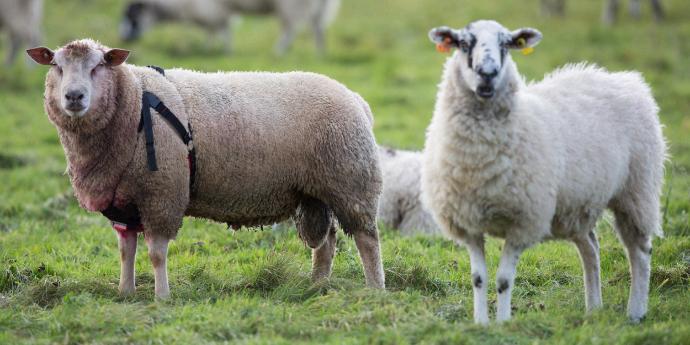

leading cattle breeder has encouraged his peers to consider a switch in genetics before deciding to exit beef production altogether.

Angus Stovold, who runs the Rosemead herd of pedigree Aberdeen-Angus at Lydling Farm near Godalming in Surrey, made the plea after figures revealed beef cattle numbers in England are at a record low.
The figures from Defra’s annual June livestock survey show a 5.1% decline in breeding female numbers to 595,000 –representing a loss of 32,000 cattle in the year to June 1, 2024, and the lowest number since the survey began.
“Cattle numbers are continuing to fall in this country, with the decline in England mirrored elsewhere across the UK,” said Mr Stovold, who is a former president of the AberdeenAngus Cattle Society.
“However, I believe native genetics, such as Aberdeen-Angus, could help stabilise suckler herds and I’d encourage all producers to consider a switch to the breed before they reach the point of deciding to cease production.”
He said farmers needed to create low-cost, environmentally friendly beef production systems in response to tight margins, changes in agricultural policy, and growing pressure from consumers to produce meat in a more sustainable way.
“Aberdeen-Angus is a sustainable breed for everybody, be it a suckler breeder or a dairy
farmer looking for a working bull,” added Mr Stovold.
“From an animal that’s born in Aberdeen, to one born on the cliffs of Cornwall, they’re so adaptable and resilient – and they can work for you wherever you are and with whatever system you have.”
He said Aberdeen-Angus cattle thrive on less inputs and can be outwintered – making them more sustainable in terms of both profits and environmental impact.
“They not only offer financial benefits by being low-input, they also attract a premium as Aberdeen-Angus beef is recognised and sought by consumers throughout the world,” added Mr Stovold.
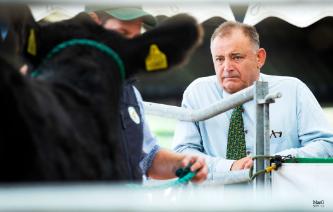
Aberdeen-Angus Cattle Society chief executive officer, Robert Gilchrist, said many farmers were already making the switch to Aberdeen-Angus from other breeds as they look to become more sustainable.
He said: “As the farming landscape changes, we’re seeing increasing interest in AberdeenAngus genetics – both females and males –from commercial producers.
“This is being driven by the breed’s ability to deliver improved margins that are more resilient to external variables, such as input costs and environmental pressures, alongside their adaptability, meaning they can thrive in more nature-based systems.”

n the eve of the Dairy Show, the ever-popular Dairy Industry Dinner returned, providing an opportunity for members of the sector to come together in celebration of the industry, and to see who was awarded the all-important Dairy Industry Award.
Over 350 key members of the dairy industry attended the event on Tuesday 1 October, which was held in the Wessex Pavilion at the Bath & West Showground.
The dinner welcomed Cancer Research and Mendip Fundraising Group as the Charity of the Year. The Mendip Fundraising Group was formed two years ago to raise money on behalf of Cancer Research UK in the area. They have organised various events and collections since they started and have so far raised over £16,000 with lots of plans to do so much more.
John Clothier's legacy extends beyond his business achievements. He is credited with finding the perfect balance of passion for the industry, innovation, ingenuity, and integrity.His approach to business and leadership has been inspirational not only to his family but also to the entire team at Wyke Farms. In June 2020, after working at the farm for over 70 years, John officially retired as Chairman of Wyke Farms.However, his

The keynote speech was delivered by Richard Clothier, MD of Wyke Farms. Richard, reflecting on his time in the dairy industry, said: “It’s a huge honour for me to be invited to speak at the Dairy Show in what will be 30 years since I first attended the show and also 30 years since the deregulation of the Milk Marketing Board. In this milestone year for dairy, it will be great to look back at the changes since deregulation, but also look forward at the global opportunities that are available to UK dairy.”
This year the Dairy Industry Award was awarded to John Clothier, Chairman of Wyke Farms. John Clothier is a renowned figure in the British dairy industry, serving as the Chairman of Wyke Farms, one of the UK's largest family-run cheese-making and milk processing companies.
influence and the principles he established continue to guide the company's operations and future direction.
Receiving the award, John said: “I am honoured to receive the Dairy Industry Award from the Bath and West Dairy Show. This recognition is especially meaningful as it celebrates my 70 years of passionate work in the dairy industry.
“It’s a rare privilege to spend a lifetime doing what you love, surrounded by wonderful people. I’m particularly proud that the fourth generation of Clothiers is now part of our business, alongside our team of 300 talented individuals who help run Wyke Farms.
“I extend my heartfelt thanks to the committee of judges for deeming me worthy of this prestigious award.”

airy farmers’ profits dropped more sharply than many expected in 2023/24, but rising milk prices mean the outlook is significantly brighter for the year ahead.
That’s according to the annual Milk Cost of Production report by Old Mill and the Farm Consultancy Group (FCG), which examined dairy client accounts with a 31 March year-end. Unveiled at the Dairy Show, it showed that average income from milk in 2023/24 was £2,910/cow – a drop of 19% year-on-year, due to lower milk prices. The cost of production remained stubbornly high at £3,153/cow, leading to a shortfall of £243. “It was only through selling stock that most businesses managed to remain profitable,” explains Andrew Vickery, head of rural services at Old Mill.

After accounting for non-milk income, but excluding Basic Payment Scheme income, rent, interest, drawings, tax and capital expenditure (and including depreciation and a labour charge of £30,000 per full-time partner or director), businesses averaged a profit of £152/cow. Last year that was £914/cow. “The five-year profitability average is £478/cow, showing that milk prices have been notably low this year,” says Mr Vickery.
The average herd size fell from 303 head to 295 head, while yields dropped from 7,906 litres to 7,256 litres/cow due to poor silage made last year.
Although feed costs dropped from their 2022 high, labour and machinery costs increased –particularly as many businesses bought new kit in early 2023 to offset looming large tax bills. “These changes could be emblematic of a changing dairy
industry,” he adds. “The ‘cost of doing work’, namely power, labour, contracting and machinery costs, are increasingly key to financial performance (rising 10.7% this year), whereas in the past, feed and other variable costs took the headlines.”
This cost of doing work is also the key differential between the top 10% of performers and the bottom 10%. “Given that these costs are often fixed, it shows that life for the smaller herds shows no sign of becoming easier. Tellingly, there is a difference of 237 cows between the average herd size of our top performers (404 cows) and the smaller herds of our bottom 10% (167 cows).”
The top 10% had much higher yields, receiving £629/cow more for their milk, but the difference between costs of production widened markedly, year-on-year, from £163/cow to £1,752/cow. “The bottom 10% were unable to cut their spend in this time of reduced prices, which led them to making a loss of 15.73p/litre compared to a profit of 12.65p/litre for the top 10%,” says Mr Vickery. “However, there are a variety of farming systems in the bottom 10%, showing that farming efficiently relies on the farmer and not the system.”
A particular difficulty over the past six to nine months has been cash flow, with many businesses paying large tax bills at a time of falling milk prices. “Though we are forecasting a significant turnaround in profit for the year ending March 2025, it doesn’t feel like that looking at current cash flows,” says Gerard Finnan at the Farm Consultancy Group. Knowing the difference between profit and cash flow – and managing both – is vital.
All businesses should define their aims and goals, and benchmark against others to identify strengths and weaknesses on which to focus, he adds. It’s also important to invest for long-term sustainability – for example in water quality compliance, and to tackle spiralling repair costs – although high interest rates do need to be considered.
With milk prices now on the rise, the 2024/25 milk year is expected to return a milk income of £3,308/ cow against a cost of production of £3,122/cow. On average, profits are predicted to rise to £590/cow.
“Those businesses that retained enough cash during the better times of 2022 were the ones best able to weather the storm of the past 12 months,” says Mr Vickery. “It is those businesses that should be best placed to reap the rewards of a more positive outlook for dairying in the short to medium term.”
• For more information contact Andrew Vickery on 01935 709321 or visit the Old Mill stand at the Dairy Show

s Quality Meat Scotland (QMS) prepares for SIAL Paris—the world’s leading food and beverage trade fair—results from the QMS annual export survey reveal a remarkable rise in the total value of Scotland’s red meat and offal sold outside the UK to £137 million in the year from August 2023 to July 2024. Previous surveys have never recorded a value above £100 million and, while some of this growth will reflect price inflation, it also points to a greater focus on exports across Scotland’s red meat processing sector.
Iain Macdonald, QMS Market Intelligence Manager, commented: “Our enterprising companies are looking beyond the additional costs and complexities of trading with EU countries from outside the single market, seeking out opportunities which are more profitable than offered by the domestic market. Exporters are clearly taking advantage of tight EU beef and lamb markets, where demand for premium products is strong but local supply is declining.
also played significant roles, with Scotch Beef exports to these countries trading at well above average prices, indicating a greater focus on higher-value products.
Iain commented: “Furthermore, some smaller markets exhibited trade in high-value cuts, highlighting the opportunity for premium Scotch Beef sales to discerning buyers in a competitive global market.
“Cross-border value chains are also crucial in the red meat processing sector. While not included in the export figures, Scotland’s processing companies reported shipments of beef to Northern Ireland, reflecting movements to specialist cutting and packing sites, with the meat then returning to Scotland for retail.

“Export sales remain heavily dominated by EU countries and trade took place with sixteen of the twenty-seven member states. In fact, more than 95% of overall export revenues were generated in EU markets, climbing to 99% for Scotch Lamb.”
The survey also highlights that Scotland serviced twelve different non-EU markets. Switzerland remained a key outlet for high-value cuts of beef and lamb, while the majority of non-European countries primarily purchased fifth-quarter by-products such as beef tongue and lamb liver. Notably, multiple companies successfully shipped beef to Hong Kong, which tended to be at the lower end of the value scale, underpinning carcase balance.
With operating margins in the processing sector often as low as 2%, Iain added: “These markets are vital for generating additional revenue beyond what can be achieved in the home market, aiding in carcase balance and supporting the procurement of livestock from Scotland’s cattle, sheep, and pig producers.”
The QMS survey indicates that total sales of beef generated around £84 million for exporters. Exports of Scotch Beef alone accounted for £43 million, or 51% of this total, with the average value per tonne of Scotch Beef exported being approximately £2.10/kg higher than that of non-Scotch Beef. This premium partly reflects the balance of cuts being traded.
France, Italy, and The Netherlands remained the primary export destinations for Scotch Beef, collectively accounting for 75% of the total. Belgium and Germany
Additionally, some beef sold to wholesalers in England is further processed into specific cuts and exported from their specialist production sites.
“With EU demand for lamb remaining firm and production decreasing, Scottish processors capitalised on this opportunity, with export sales surging to £45 million. Lamb exports accounted for an increased 31.5% share of abattoir turnover during this period, up from 17% the previous year. Beef sales are estimated to have reached 11% of turnover, up from 9.5% a year earlier. France remained the most important overseas market for Scotch Lamb, followed by Germany and Belgium.”
Finally, sales of offal to overseas customers continued to play a crucial role in maintaining carcase balance for Scotland’s red meat processors, generating £8m of sales. Notably, 63% of this value was generated from EU markets, with average prices slightly higher than those from non-EU destinations. France, Germany, and Hong Kong were the primary outlets for Scottish offal.
Tom Gibson, Director of Market Development at Quality Meat Scotland, commented: “These results highlight the resilience of our red meat sector and the continued strength of our relationships with European importers. Despite the ongoing challenges posed by Brexit, our exporters have adapted and thrived, demonstrating the premium quality of Scotch Beef and Scotch Lamb.
“SIAL Paris is a critical platform for us to showcase the exceptional quality of Scotland’s red meat industry to a global audience. It provides an invaluable opportunity to strengthen existing partnerships and forge new connections that will further enhance Scotland’s presence in international markets and promote Scotland as the choice for premium red meat.”
SIAL Paris will take place from 15 to 19 October 2024. Follow @qmscotland on social for live coverage of SIAL.
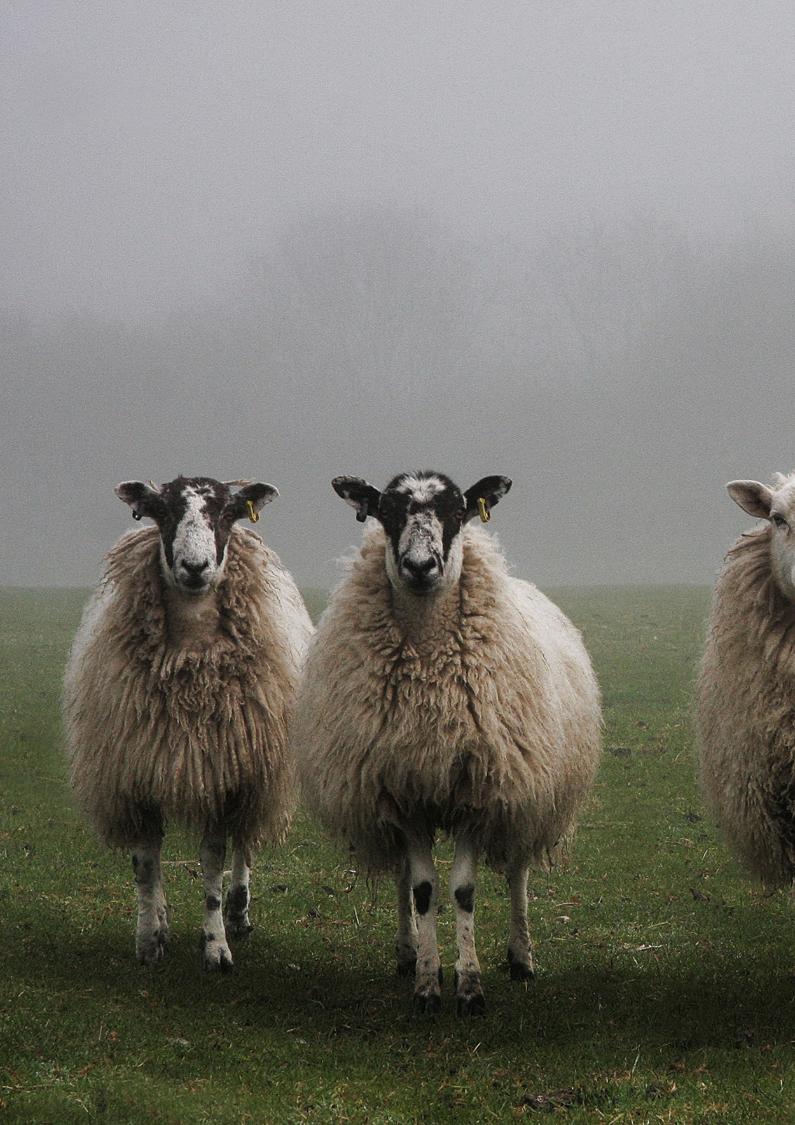

The Farmers’ Union of Wales (FUW) has today emphasised the importance for all farmers to be vigilant and mindful when purchasing and selling livestock as the first case of the Bluetongue virus (BTV-3) is confirmed in Wales.
The confirmed case of BTV-3 was reported on Friday, 27 September 2024 after surveillance testing identified the virus in three sheep that had moved to Gwynedd from the east of England.
At present, a BTV-3 Restricted Zone has been imposed upon much of the east side of England, due to BTV actively circulating in the midge population.
Ian Rickman, FUW President says: “This concerning situation highlights the need for all farmers to be aware of the risks of sourcing livestock from areas at risk of Bluetongue, especially as the season for selling and purchasing breeding stock is in full swing.”
“Precautions must be taken if you intend to purchase livestock from areas that border the Restricted Zone, in the east of England, due to the fluid movement of the small flies, midges, that carry BTV-3.”
BTV is a disease that by law, needs to be reported to government officials via veterinary practices. It affects ruminants such as sheep and cattle and is spread by biting midges, carrying the virus from one animal to another. BTV causes fever, crusting and ulcers around the nose and mouth, swollen head and lameness, and in extreme cases it causes abortions and death. However, some of these signs are not always present.
“It is important to note that the Bluetongue Virus
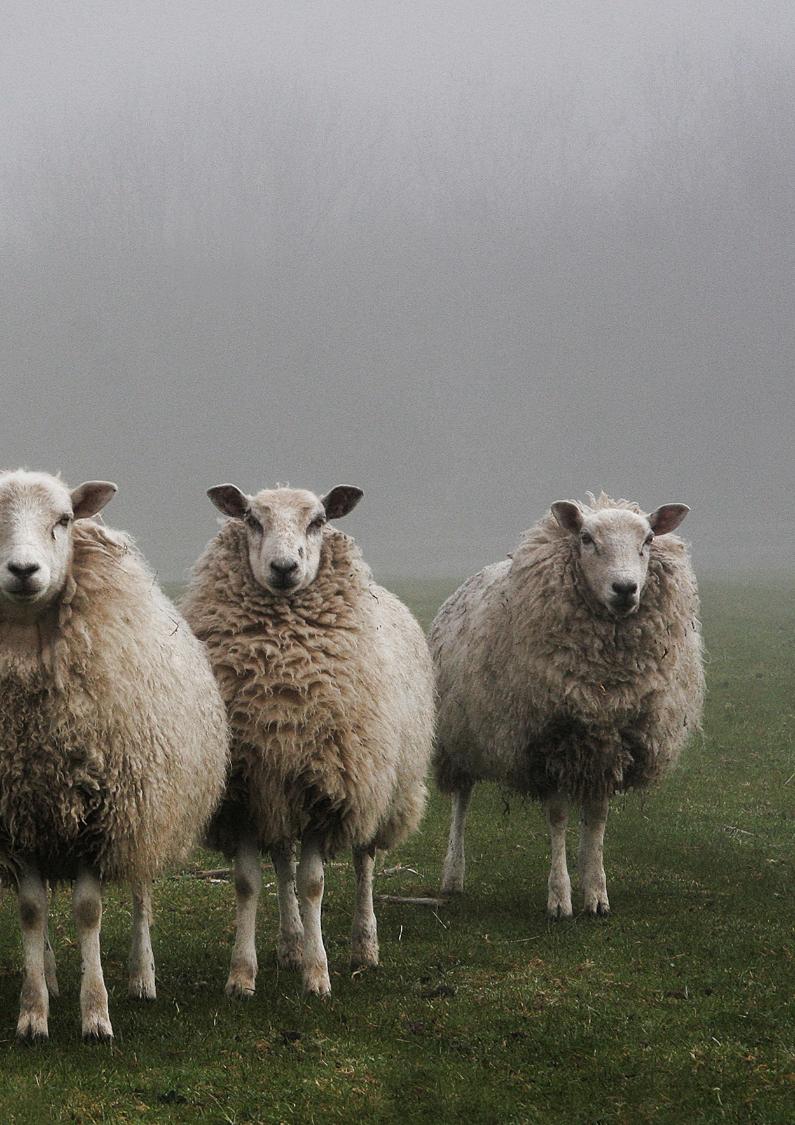
does not affect people or the safety of meat and dairy products.
“As an industry, we need to be vigilant to the role that we play in preventing the spreading of this virus, especially in areas that are currently free from disease.
“We need to be mindful when sourcing our livestock, understanding that the virus is spread by midges but can also be transmitted through infected semen and embryos, and raising awareness of the clinical signs of infection in our animals.”

This year’s Dairy Show brought together knowledge, innovation, and a shared determination to tackle key industry challenges and help build healthy, resilient dairy businesses.
The show, which attracted more than 300 trade stands and over 6,000 visitors, covered a broad range of essential and innovative equipment, across every stage of production, from newborn calves to peakproduction cows.
The foundation of a healthy business is a healthy herd and many producers, even on top performing farms, could make marginal gains through further improvements.
The Synergy Vet team were on hand to help producers identify what health and management challenges may be curbing their herd’s full potential. And they were focusing on staff development and training as a key element of this. “There is huge demand for training, from family farms looking to upskill to big commercial units,” explained vet Pete O’Malley.
Synergy has developed a wide range of in-person and online training, covering topics like calf rearing, DIY artificial insemination, calving, and safe use of veterinary medicines. And the vet technician team, who deliver a lot of the training, are also kept busy as farmers outsource key tasks, he added. “Farmers are struggling to recruit – they’re faced with recruiting and training people or running with a minimal team and getting vet techs to do jobs like foot trimming, weighing and calf disbudding.”
Also offering health insights was Ceva Animal Health, which was raising awareness about Q fever and the realities of infection on UK dairy farms. Studies have shown that about 30% of the national herd could be suffering active disease, and in bulk milk tank tests of
symptomatic herds, 47% are testing positive, said the firm’s Gill Ainge.
Signs of infection include abortions, stillbirths, weak newborns, and fertility issues – and as a zoonotic disease it also presents a risk to humans. Being an airborne bacterial disease, it spreads easily, so producers should investigate any symptoms, request a bulk milk tank test, and vaccinate if appropriate.
When it comes to youngstock management, new technology can help to free up labour to focus on maximising health, welfare and productivity, said Paul Wisden at M&A Calf Systems. When choosing what systems to use, it’s important to consider the building layout, management system and labour skillsets.
The Forster Technik Vario Smart Feeder automates calf feeding, and now has internet connectivity linked to a phone app. “The biggest advantage is that you can be away from the farm and receive warnings upon which you can act,” he said. Given that feed efficiencies are greatest when calves are young, it makes sound financial sense to maximise milk powder intakes – and to calibrate feeders correctly to ensure this, he added.
For those feeding waste milk, a mobile milk pasteuriser can be of huge benefit in reducing the risk of disease transfer, like Johne’s, for example. “A lot of people are using mobile pasteurisers for beef calves,” said Mr Wisden.
Keeping feed in front of your cows is a key part of maximising efficiencies and production, and Boumatic’s Butler Gold robotic feed pusher is gaining traction in the UK following its launch earlier this year. The electric robot, guided by magnets set in the floor, has an unusual augur system which fluffs up the forage when moving it, making for a more attractive and palatable ration, said the firm’s Gareth Jones. It will run for up to 12 hours in 24, and push up 400m of feed face before recharging.
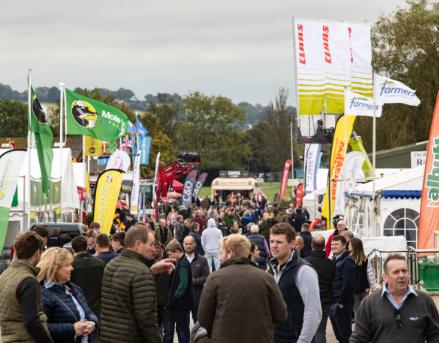
The Shuttle Eco automatic feeding system further reduces labour requirements. With an 850kg capacity, it feeds and pushes up regularly, ensuring a ‘little and often approach’ to feeding.
Cow housing and design is a critical part of both health and productivity, and sometimes simple upgrades are the most economical option.
Of particular interest right now is ammonia-reduction flooring, although producers are mostly choosing it for its impact on foot health and lameness, said Roger Craig, managing director at Shield Agriculture. “It’s all about
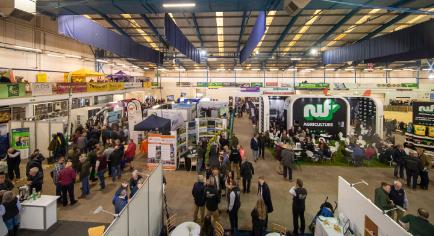
separating the liquid from the solids,” he explained. The more quickly urine can be drained away, the better. “It’s drier and more comfortable for cows, and releases 44% less ammonia.”
The Kraiburg ProfiKura 3D rubber matting can be retrofitted into housing, and has a 3% slope to drain urine away, on alley widths of up 4m. It works with automatic scrapers, and the drier environment means there’s no wave of slurry for cows to navigate. The corundum surface ensures decent grip for the cows, reducing the risk of slips and falls.
For wider alleys, the ProfiDrain incorporates the 3% slope within a ridged system, but otherwise operates in the same way, said Mr Craig. “Farmers are looking to improve foot health, milk buyers are looking for ammonia reduction – and grant eligibility is a help.”
From the bottom of housing to the top: Lighting systems have been proven to directly impact milk production and fertility, with an 8-11% yield response to improved lighting, said Ola Baalack at Dairylight. “Lots of people use industrial, mass-produced lighting, but cows see differently to humans.” Ideally, cows should have 200 lux during daytime hours, of white light with a blue spectrum, with eight hours of red lighting during the night.
Around 70% of Dairylight’s installations are retrofits to existing buildings, with 30% going into new builds, he added. And even in grazed herds housed over the winter, the return on investment is worthwhile.
For those weighing up their options for parlour upgrades, the show had a comprehensive line-up of milking system suppliers. ADF Milking demonstrated its automatic dipping and flushing system designed to improve milking efficacy and maximise teat care, while Milk Tech NZ catered for the parlour upgrades and extensions.
Designed with Australian and Kiwi farmers in mind, who are often located some distance from a dealer, the systems are intended to be easy to repair by the farm team, said the firm’s Maarten van der
Drift. “They’re simple on the outside and sophisticated on the inside.”
Two new bits of technology, designed for simplicity in the parlour, are individual yield indicators and the Herd Display One. The individual yield indicators clearly show what each cow is producing, making it easy for staff to dry off cows immediately if they’re giving less than five litres, for example. The HD1 is a screen which displays how many cows have been milked, and what average yields are on the day, the previous day, and over the week.
Finally, a lighter cluster has been designed with plastic shells rather than stainless steel, helping to reduce teat damage, said Mr van der Drift. The standard MC1 cluster with a steel claw weighs 2,100g against the plastic alternative at 1,700g, reducing strain on the udder.
CattleEye has developed autonomous livestock monitoring technology, based on a low-cost security camera, to improve farm efficiencies. The system, mounted at the parlour exit, already monitors cow mobility and lameness, and has now been upgraded to include body condition scoring.
Using artificial intelligence, it produces daily body condition and mobility scores for cows, helping farmers to catch lameness and condition loss or gain at an earlier stage. “The farmer is in control; they have the ability to split the herd from their data and make trim lists, for example, meaning there are no unnecessary costs,” said the firm’s Roger Allen.
The system integrates with many leading herd management systems, minimising the need to repeatedly input data, added CEO Terry Canning. “Empowering farmers with such advanced technology is key to transforming dairy farming, making it more profitable, sustainable and efficient.”
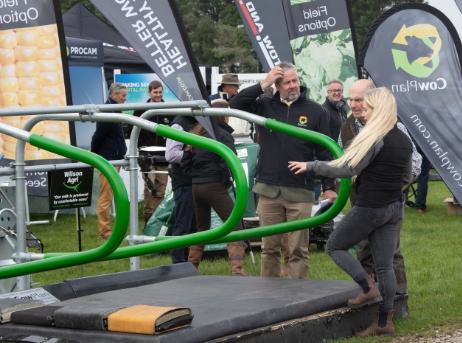

Adynamic new web application has been designed to enhance health risk management for beef and sheep farmers and their vets.
Developed by SRUC's Veterinary Services team and funded by the Scottish Government, HerdPlan empowers farmers and vets to collaboratively create proactive health plans, efficiently and in an organised manner, ultimately enhancing productivity and increasing farm income.
Officially launched today (Thursday 17
October) at theBCVA Congress, Herdplan revolutionises health planning by moving beyond traditional paper methods. This new online tool allows the entire farm team— including farm staff, vets, nutritionists, and other advisors—to work together efficiently on health planning and conduct regular risk reviews. By ensuring vaccination strategies, infectious disease protocols, biosecurity measures, and other important tasks are prioritised and updated in real-time, HerdPlan enhances overall health risk management.
HerdPlan also simplifies compliance with health plan requirements set by Red Tractor and QMS, ensuring that nothing is overlooked in the approval process. It facilitates vet's approvals, antibiotic reviews and other health and welfare assessments, making it easy for both farmers and vets to meet necessary standards and confirm that all requirements are met.
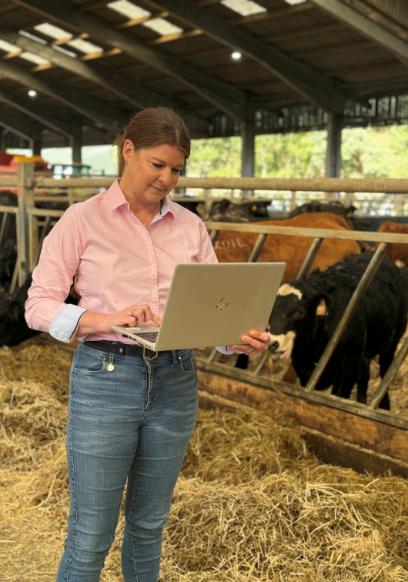
Dr Foteini Manolaraki, Animal Health Planning Development Manager at SRUC said: "HerdPlan lets you respond to real-world challenges as they arise. Implementing new health protocols into your plan as they are needed, it ensures that your entire team is always aware of the latest farm health information. By prioritising prevention over cure, HerdPlan ultimately keeps more money on the farm and ensures that essential tasks are completed on time."
Farmers and vets can now access HerdPlan to streamline their health planning processes and improve the sustainability of their operations.
For more information about HerdPlan, please visit herdplan.co.uk
Emailherdplan@sruc.ac.uk
Tel: 0131 535 3130
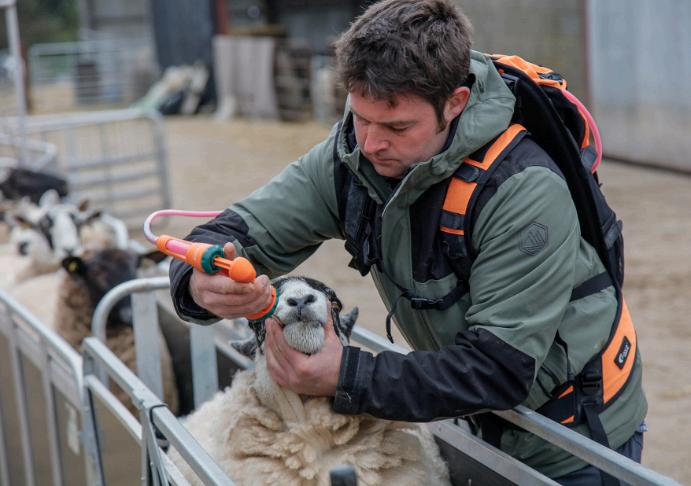

Experts have warned farmers not to take their eye off the ball when it comes to sheep worm control this season, as worm burdens are expected to peak during the autumn.
According to farm post-mortem vet, Ben Strugnell, the intestinal worm Haemonchus has posed a greater challenge than ever across the UK this year, despite it being a problem traditionally associated with southern areas.
“Haemonchus continues to pose a clear and present danger to all sheep, not just lambs, as adult sheep do not build immunity to this challenging worm,” he says.
But Haemonchus is not the only worm threatening sheep farms this autumn. Mr Strugnell explains that activity of other species is also ramping up and warns that wormers that worked earlier in the year may not be as effective now.
“The prevalence of different worm species changes throughout the year, so those active in the spring will likely be different to those we are now experiencing in the autumn, and require treatment with a different wormer group,” he adds.
Small intestinal worms can catch up very quickly with weaned lambs, so Mr Strugnell advises vigilance is key at this time of year, as worm burdens can cause major setbacks in growth.
“It’s therefore important to continue regular monitoring of faecal egg counts (FEC), and ideally growth rates, into
the winter, to inform if and when you need to worm,” he says.
Following this he highlights the need to work with a vet or adviser to carry out a drench check to highlight whether your wormer has been effective. This involves re-sampling with another FEC test 7 – 14 days after worming.
He also stresses the importance of making a plan for these ‘tail-end’ lambs now. “Do anything you can to get them off their current pasture: house them, sell them, or move to roots or a herbal ley.
“Lambs at this time of year will be shedding worm eggs onto pasture. Moving them elsewhere will minimise the number contaminating your grazing for next spring.”
He adds that this is the perfect time to administer an annual break dose of Group 4 wormer.
“Worms will have accumulated in lambs through the season, so you now need to treat them with something trusted to be effective, such as the Group 4 wormer, Zolvix™.
Mr Strugnell explains this will help maintain optimum growth rates by removing worms, including those left behind by treatments earlier in the season, with the added benefit of slowing down the development of resistance to older wormer groups.
For regular video updates on the latest parasite challenges from Mr Strugnell, sign up to The Parasight by visiting: https://bit.ly/3ZZrlIm.
The National Sheep Association (NSA) Scotland has called upon the Government to make sure future support schemes are fit for purpose and safeguard the viability of those farming in disadvantaged areas in a recent consultation response.

Submitting its views on The Rural Development (Continuation of Operation) (Miscellaneous Amendment) (Scotland) Regulation 2024consultation to the Rural Affairs and Islands (RAI) committee, NSA Scotland also highlights the importance of stakeholder engagement to ensure future farming schemes are reaching those in most need.
NSA Scotland Coordinator Grace Reid says: "Under the current circumstances and uncertainty regarding future farm support and scheme development, NSA Scotland believes current support should be extended and built upon and would welcome discussions surrounding future schemes such as Less Favoured Area Support Scheme (LFASS) and Scottish Rural Development Programme (SRDP)."
socio-economic and environmental value of active farming and crofting on poorer land or in remoter locations stating that ongoing support for livestock grazing systems in such areas is integral to its success.
NSA Scotland also called for the redesign of a new bespoke replacement scheme to those offered currently to be completed in a timely manner.

For some time NSA Scotland, as well as others in the industry, has called for a redesign of LFASS that could help to ensure disadvantaged area support in the future for those at all stages of their active farming or crofting career, including the next generation.
Responding to the consultation NSA Scotland has stated that it believes the current LFASS budget of £65m should be at least maintained and redistributed to those who are farming livestock in disadvantaged areas and depend on crucial financial support for their viability.
The consultation response provided opportunity for NSA Scotland to reiterate the
Ms Reid continues: "It is important that there is no time lag from any existing scheme and a replacement scheme can commence quickly to ensure agricultural businesses are not exposed to detrimental consequences as a direct result of changing policy.
"We are all acutely aware of the wide ranging external pressures facing the agricultural industry today. Factors such as inflation, climate change adaption, biodiversity loss, and an ageing workforce population have all been wreaking havoc on businesses and threaten their existence. We have already seen a reduction in the Scottish national sheep flock and beef herd in recent years, this needs to be halted wherever possible.
"It is therefore pivotal that any intended changes for the purpose of ensuring stability and continuity for farmers, crofters and land managers in the period from 2025 to 2030 by extending the period of operation of support for rural development should be undertaken to allow the continuation of support beyond 2024."
A copy of the NSA Scotland consultation response can be found on the NSA Scotland website atwww.nationalsheep.org.uk/nsascotland/news.

ear Daniel, Congratulations once again on your appointment as Minister of State for Defra. I hope that, as in the past, we will be able to work closely together to optimise the British beef industry, delivering food security and value for money for the British taxpayer.
The recently announced Defra underspend of £358 million, which had been pre-allocated as agricultural support funds, has come to light at around the same time as confirmation of an ongoing annual reduction in beef cattle numbers, this time of over 5%. The continued downward trend is alarming, and we are well on the way to creating a critical mass problem from which the industry may never recover. Our self-su iciency continues to decline at pace; immediate and positive action to halt the decline in numbers and redress the balance is imperative if we are to stabilise our food security.
With the already allocated underspend of £358 million in mind, I propose the following:
This is a system that is currently used in Scotland. The scheme in Scotland requires beef cows to produce a beef calf which is retained on farm for a minimum of 30 days. This attracts a headage payment of £100 per year on mainland farms and £160 on the islands; the proposal is that in England it would pay £100 on lowland farms and £160 on upland farms. The estimated cost of this scheme - based on a suckler herd in England of 665,000 cows with a 90% compliance levelwould be approximately £60 million per year. Three years would give a fair period of time to assess the impact of the scheme - if the reduction had slowed or even ceased, the support could be reviewed. The system in Scotland has been running for the last 20 years; their suckler cow reduction is considerably slower than in England.
The approach of badger culling by the previous government has achieved noticeable results in the areas where culling has occurred, but to have any chance of achieving
the goal of TB-free status by 2038, a more dramatic and fundamental approach is required. This can only be achieved by seed funding some significant changes, which will reap massive benefits in the longer term and ultimately be cost-e ective. An extra £50 million per year, invested in updated and proven techniques such as gamma testing, could be used to seek out deep rooted disease on farms. Current skin testing only has a sensitivity of 80%, meaning many positive animals are not identified at the earliest opportunity. Earlier identification of the disease will lead to timely culling and compensating, reducing the spread and inherent incidence of bTB and allowing the industry to function in a sensible manner. The disease has cost the taxpayer £100 million per year for the past 10 years; there is currently no end in sight, and continuing with the same practice year-on-year will not improve the situation. An extra £50 million annually invested will give the industry a fighting chance, and ultimately leave us in a better place when current wildlife controls cease.
The benefits of livestock production are often ignored or understated. They manage countryside in areas which are unfit for anything else, tidying undergrowth and processing it into a product which feeds the people who live there. They ensure our soils remain fertile; without their input, the land would become unproductive and unmanaged. They maintain an ancient traditional skill base, and nurture the communities – and many varied and related jobs - which rely on their presence. They o er us security – both in quantity of food production and in the welfare conditions in which the animals are raised, along with the environmental benefits of homegrown food.
The stated intention of the Labour Party to boost the economy through rural growth is one I support wholeheartedly. However, time is running out to retain that rural economy – the dramatic decline can only be halted through sensible and adequate investment before it’s too late.
Yours sincerely
Neil Shand CEO – National Beef Association
Reflecting on his contribution during spokesperson questions to Labour’s Rural Affairs Minister, James Evans MS, Welsh Conservative Shadow Rural Affairs Minister, said:

“Farming in Wales has faced uncertainty in recent years under this Labour Government and the Control of Agricultural Pollution Regulations (CAPR) are a particular cause of concern among farmers.
“Given the closed period for the spreading of slurry there is anxiety in the rural community, with further uncertainty surrounding weather and disease outbreaks, farmers may find their slurry stores full.
“Labour must reassure concerned farmers how they can effectively plan for and manage unexpected events to avoid penalties and protect their livestock and land.”





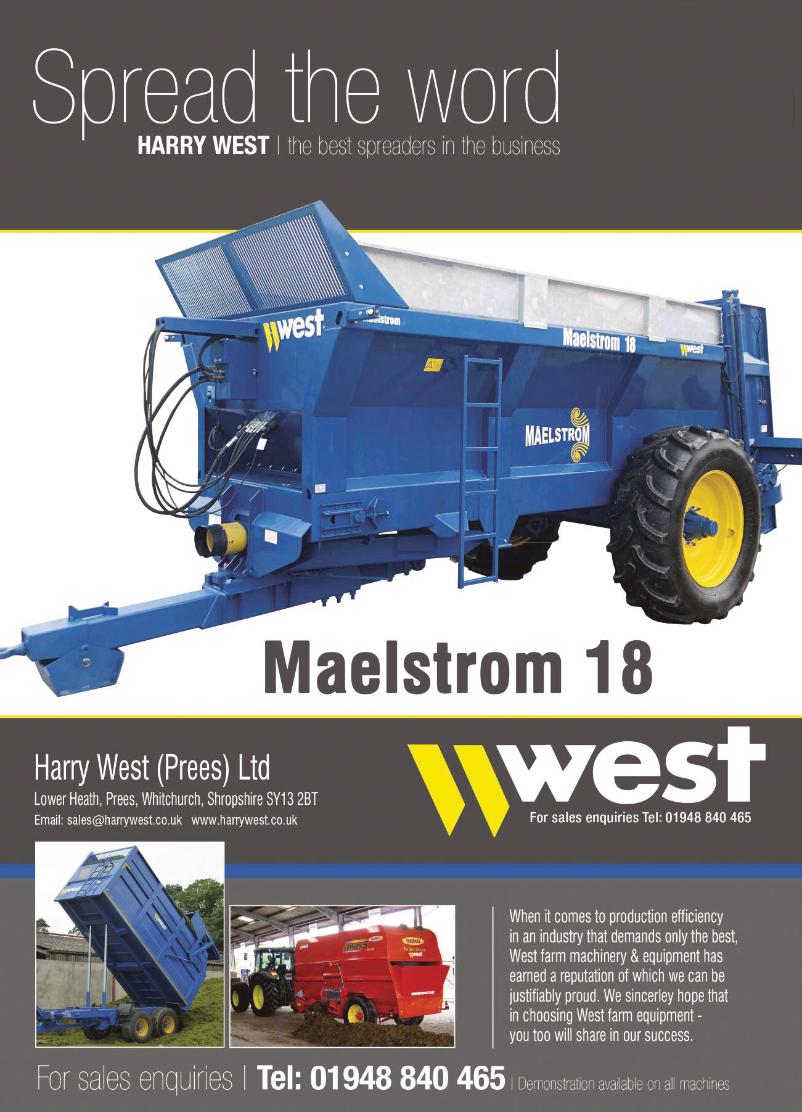
With the new BlackBird Single trailing shoe linkage, Vogelsang GmbH & Co. KG is launching a compact and lightweight spreading system on the market. This allows farmers to spread liquid manure evenly, precisely and with low emissions on working widths of 7.5 to 12 meters. “With the BlackBird Single, we are offering modern liquid manure spreading technology which is suitable for smaller slurry tanks and working widths and meets the stricter legal requirements,” says Henning Ahlers, Sales Manager Agricultural Technology Germany at Vogelsang.

Low weight, more scope in terms of payload
With a weight of 1,050 kilograms for a working width of 12 meters, the BlackBird Single is particularly light. This is made possible by the runners, which consist of robust special plastic, and the slim linkage design with just one centrally installed precision distributor from the ExaCut series. The comparatively low weight of the trailing shoe linkage protects the ground
during crossings and facilitates retrofitting and handling. The transport lock integrated into the folding cylinder also contributes to simplified retrofitting. Ahlers explains: “The standard transport lock is detached on the linkage side and makes it easier to retrofit the trailing shoe system to almost any slurry tanker.” Thanks to the integrated slope compensation, the BlackBird Single adapts perfectly to the ground conditions and enables the slurry to be spread uniformly and precisely, even on hilly terrain.
With a transport width of 2.55 meters when folded, the BlackBird Single complies with legal regulations throughout Europe. The trailing shoe linkage is available in working widths of 7.5, 9, 10.5 and 12 meters.
BlackBird Single: Premiere at EuroTier Vogelsang will be presenting the BlackBird Single alongside other models from the extended BlackBird family for the first time at EuroTier in Hanover (November 12-15, 2024, Hall 27, Stand D40).
For more information, visit: vogelsang.info
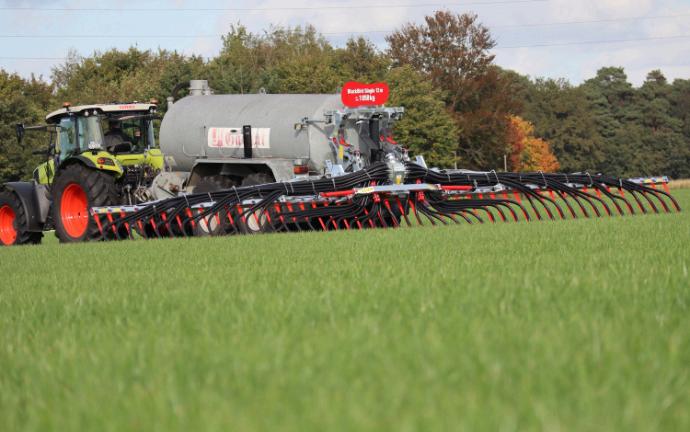
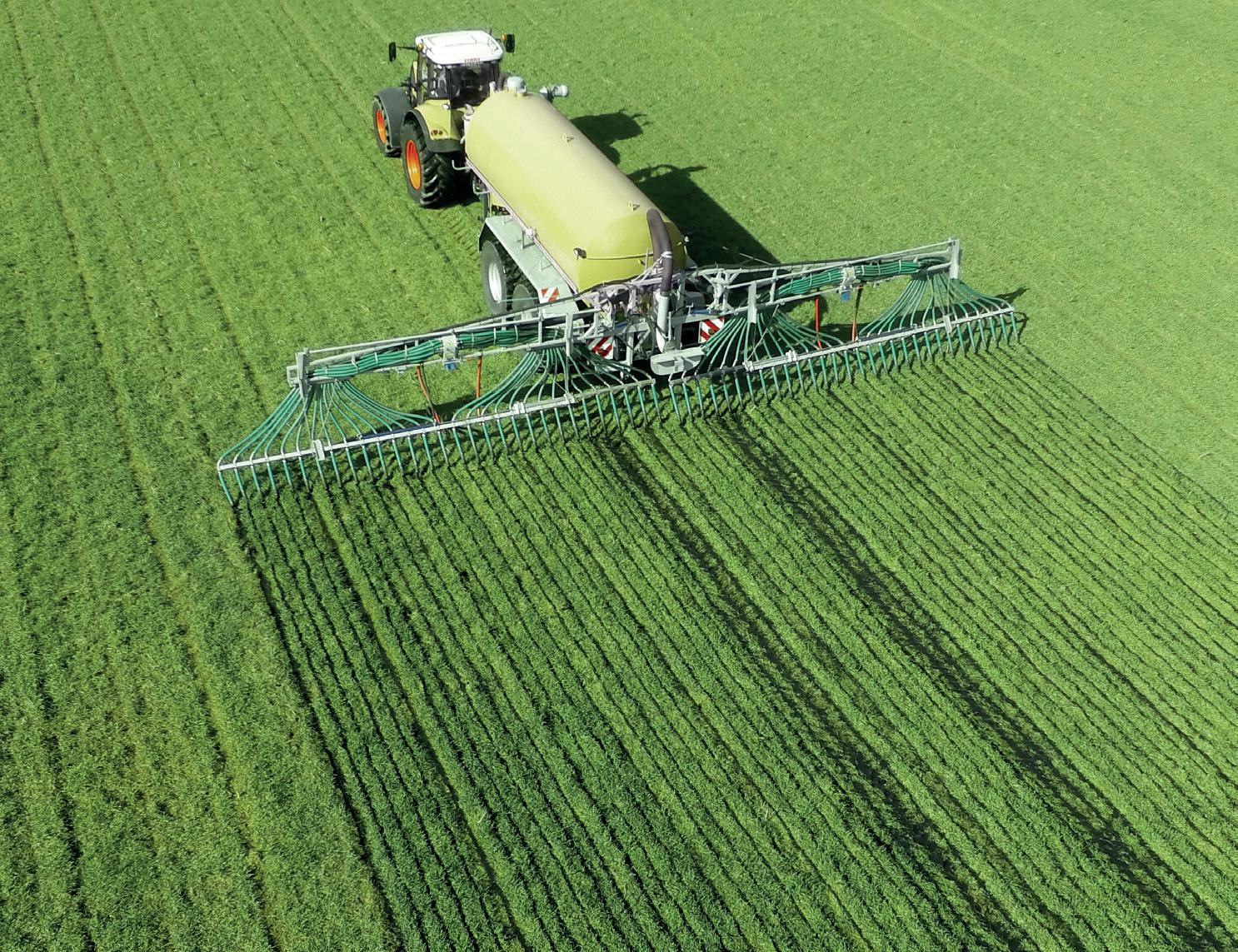

Flexible, reliable and easy to maintain:
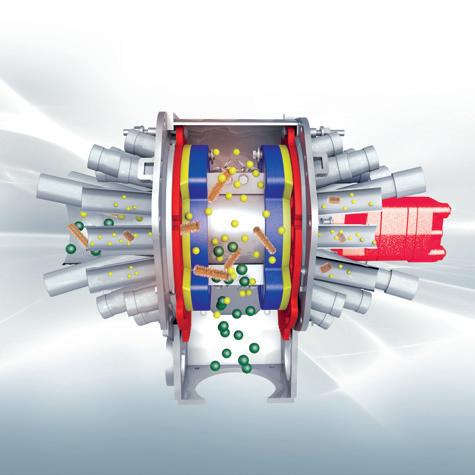
As a pioneer in agricultural technology, Vogelsang leads the way in environmental friendly spreading equipment. The dribble bar systems combined with the ExaCut distributor give the highest application of liquid manure nutrients.
Dribble bars are available in working widths of 7.5m right up to 36m and are retrofit-friendly.
For more information visit www.vogelsang.info/en-uk/dribble-bar-systems
VOGELSANG – LEADING IN TECHNOLOGY
Contact us at:
01270 216 600 | sales.uk@vogelsang.info
vogelsang.co.uk

The new PICHON TSB1 trailing shoe boom ensures precise and even surface application of organic fertilisers. Designed to meet the needs of farmers, it offers enhanced performance by maximising the use of nutrients while reducing ammonia loss and gas emissions. Compatible with all tankers, whether new or in service, the TSB1 stands out for its efficiency on various soil types, especially in hilly areas. With a working width of 7.5 or 9 metres and a compact folding system, it guarantees efficient application and safe transport.

A versatile boom adapted to hilly terrains
The TSB1 has been specially designed for rugged terrains, offering excellent ground tracking. The three pivot points connected to the central frame provide effortless adaptability to the natural contours of the terrain.
With 25 cm row spacing and optimally distanced trailing shoes (30 or 36, depending on the model), the TSB1 ensures uniform slurry application, even on uneven terrain. This ability to follow hilly terrains without losing precision makes it an essential tool for maximising crop yields in demanding environments.
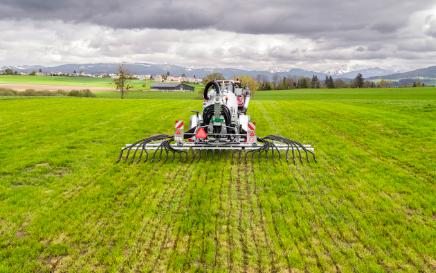
A patented design combining performance and easy maintenance
The patented design of the TSB1 guarantees optimal performance while simplifying maintenance. Thanks to a wear indicator, the operator is alerted when the central part needs to be replaced – a quick operation that takes just one minute. This mechanism ensures constant ground pressure throughout the part’s service life, enabling uniform fertiliser application. As standard, the anti-drip system (ADS) prevents unwanted slurry leaks on roads when exiting fields, ensuring clean operation and improving application efficiency. The boom also features a simple hydraulic folding mechanism, forming a compact triangle for easy road transport while providing optimal visibility for the driver.
In addition to its ergonomic design and efficiency on difficult terrains, the TSB1 boom plays an active role in reducing ammonia emissions and protecting the environment. The improved infiltration of nutrients into the soil and reduction in odours reinforce the positive impact of this technology on sustainable agriculture. With a transport width of less than three metres, the TSB1 combines lightness and robustness, offering a complete, soil-friendly solution for farms of all sizes.
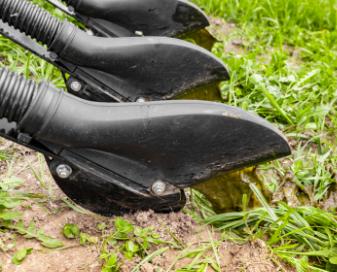
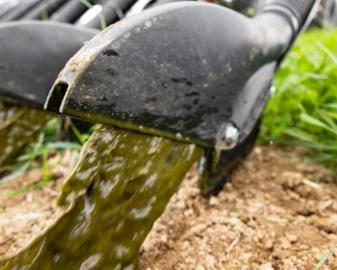
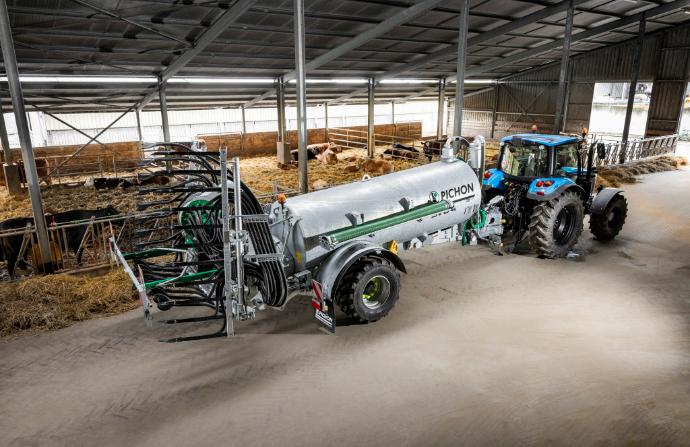
Each method of applying organic fertilisers offers distinct advantages depending on crop types and soil conditions. Whether reducing environmental impact through precision application techniques or enhancing nutrient absorption by integrating soil cultivation, choosing the right method is crucial for sustainable and optimal crop growth. It is with this objective in mind that SAMSON has developed two new disc incorporators: the CDf and the CDx. These innovative tools combine high-performance fertilisation and soil preservation, optimising the

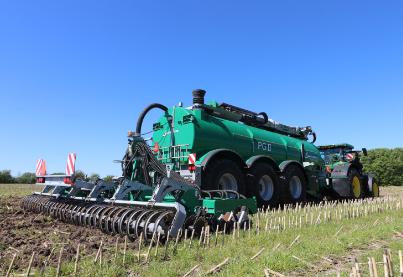

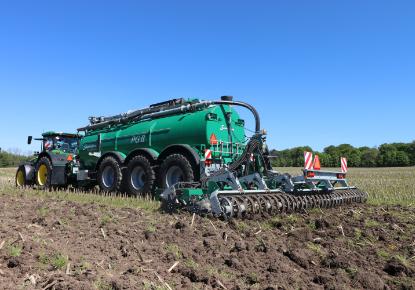

use of organic fertilisers even near residential areas, while preparing the seedbed in various agricultural environments.
The advantages of slurry incorporation
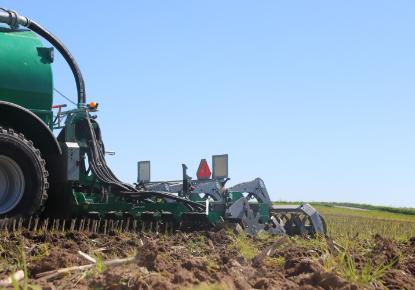

Incorporating organic fertilisers into the soil limits nutrient losses from volatilisation and leaching by placing them near plant roots. In addition to maximising nutrient uptake, this method reduces ammonia emissions by up to 85%, improving air quality and minimising odour, which is particularly important in residential areas. Moreover, incorporation stimulates microbial activity and enhances soil structure, ensuring long-term soil health and optimised yields. It also helps reduce erosion and runoff, providing an ecological and precise response to the challenges of modern agriculture.
CDf and CDx: two incorporators for diverse needs
The new SAMSON disc incorporators, CDf and CDx, are designed to adapt to different soil types, whether sandy, filled with plant residues, or heavy soils. The CDf is ideal for light post-harvest work, with a working depth of 3 to 12 cm and a width of 4.5 to 6 meters,
making it perfect for stubble and cover crops. Its 510 mm notched discs, arranged in staggered rows, provide excellent soil penetration, while rubber suspension minimises vibrations. Its depth control wheels and comb harrow ensure precise work, even in challenging conditions. The CDf can handle slurry flow rates of up to 6,000 l/ min, making it efficient for large-scale applications.
The CDx, designed for heavier soils, offers a working width of 8 meters and an adjustable depth of 3 to 12 cm. Its discs, mounted on double or triple arms, ensure precise depth control, while T-profile rollers or bar rollers compact the soil, efficiently preparing the seedbed. This robust model operates at speeds of up to 16 km/h, with a slurry incorporation capacity of 70 tonnes/ha. Its foldable central discs facilitate transport while maintaining optimal stability. Like the CDf, the CDx is equipped with a vertical distributor for precise slurry distribution and a side star disc for perfect soil levelling, allowing immediate sowing after incorporation.
With the introduction of the CDf and CDx, SAMSON completes its range of incorporators, now offering five models: CDf, CDx, CM, SD II, and Strip-Till. This range covers working depths from 3 to 30 cm and widths from 4.5 to 8 meters, with speeds ranging from 6 to 16 km/h. These machines are designed to meet various agricultural needs, from stubble fields to ploughed soils, promoting the decomposition of plant residues and improving nutrient retention while reducing ammonia losses. Studies show that slurry incorporation can reduce emissions by up to 85%, providing a sustainable solution for agriculture. By placing nutrients near plant roots, these machines maximise absorption while minimising access to undesirable microorganisms and weed seeds.
For more information on our range of incorporators, please visit our website: SAMSON incorporators | Efficient nutrient application (samson-agro.com).
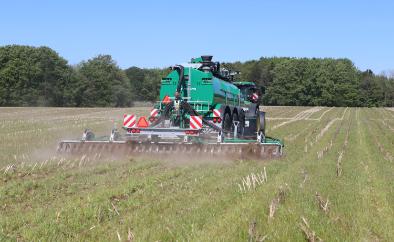





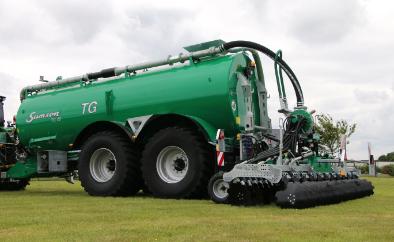

gricultural machinery manufacturer Claydon Yield-o-Meter Limited, which exports to more than 30 countries from Europe to New Zealand, has been named regional Global Britain Business of the Year in the prestigious British Chamber Business Awards 2024. One of the most respected business award programs in the country, they celebrate the very best in British business by recognising the achievements of companies which are trading with the world in a successful, innovative way and helping to create a Global Britain.

Claydon Yield-o-Meter Limited, a family-owned company in Suffolk, is a leading innovator in precision farming technology. The Global Britain Business of the Year award recognises its ‘outstanding contributions to British exports and pioneering approach to agricultural innovation on the global stage.’ Claydon were delighted to be shortlisted in the category recently and now, having won the regional award, the company will go forward to the ‘National Global Business of the Year’ category at the British Chamber Business Awards 2024, the results of which will be
announced on 17 October.
“We are delighted to have won such a prestigious regional award and be one of the finalists at national level,” company founder Jeff Claydon states. “Claydon Opti-Till® machinery is used by farmers all over the world, enabling them to transition from slow, expensive, energy-intensive traditional methods of crop establishment to a much faster, highly efficient and more sustainable approach which fits perfectly with the current drive towards regenerative agricultural practices. In addition to dramatically reducing the time and cost of establishing agricultural crops, enabling farming businesses to operate much more efficiently, profitably, and sustainably, Opti-Till® also delivers many environmental benefits, including improved soil health and structure, lower carbon emissions and reduced soil erosion.
Simon Revell, Claydon’s Export Sales Manager adds: “As Claydon has expanded its dealer and distributor network in the UK and overseas sales of Opti-Till® machinery have continued to increase, by ten-fold since 2010, with exports up six-fold in the last ten years, from 30% to 60% of turnover.

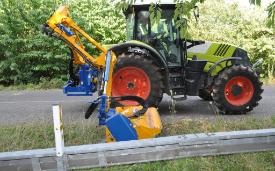

“Accelerated growth with exports has been due to a strategic plan to identify distributor partners in those targeted markets, supporting them and their customers so their farming operations benefit from adopting Opti-Till®. The motivation for myself and the export team is the knowledge that we are making a real difference to those farming businesses, including reduced emissions through fewer field operations, arresting soil erosion, improving soil quality and saving those farmers huge amounts of time.
“It is extremely exciting to be part of something that is changing traditional crop establishment thinking, making a real difference to the environment and we still have many markets to target and continue the company’s growth. This has been made possible by our significant investment in new facilities which has enabled us to expanded production by 30% during the last year alone. Despite the undoubted challenges facing the farming sector we expect similar growth during the next twelve months as many markets are still at an embryonic stage and our distribution network is growing rapidly.”

doubled production capacity and created numerous additional jobs, a new paint shop further increasing throughput.
An excellent example of UK manufacturing at its best, Claydon Yield-o-Meter Ltd represents a tremendous success story and remains wholly family-owned, the business now being steered into the future by Jeff’s sons, Oliver (Operations Director) and Spencer (Commercial Director).
Claydon Opti-Till® direct drills, straw harrows, rotary cultivators and inter-row hoes are designed, evaluated and manufactured at the company’s factory in Wickhambrook near Bury St Edmunds, where it employs 80 local staff and benefits the UK businesses which supply it. The completion of a new purpose-built building in 2023 more than
The company’s achievements in enabling farming businesses to implement commercially and ecologically sustainable crop establishment solutions were recognised at the beginning of 2024 when Jeff was presented with the Suffolk Farming and Wildlife Advisory Group’s Peewit Award for Excellence in Ecological Farming.
Claydon are also delighted to be shortlisted for two further awards with the winners to be announced later this month: the Bury Free Press West Suffolk Business Awards for the Investing in West Suffolk category and the Farmers Weekly Awards in the Game Changer category.

“The role of machine technology will grow significantly in the future and Claydon will continue to move forward,” Jeff adds. “Our latest drills incorporating the ability to place crops, companion crops, fertilisers and crop protection products in one pass to help the farming industry meet the challenges which it will face in the future.”

This year the Newark Vintage Tractor and Heritage Show will celebrate 75 years of the John Deere two-cylinder diesel engine, marking a milestone in agricultural history.
Visitors at Newark Showground on 9-10 November will have the chance to see a range of engines from the series on display and learn why the farming machinery remains a symbol of innovation and reliability.
Introduced in 1949 with the Model R, John Deere’s first diesel tractor, the engine stood out from the predominantly petrol-powered models of its time. Known for its simple yet robust design, exceptional pulling power, durability, and fuel efficiency, it has since become an iconic piece of engineering cherished by tractor enthusiasts and collectors worldwide.
Mark James, product sales specialist at John Deere, says:"The John Deere twocylinder diesel engine wasn’t just about horsepower; it was about delivering enormous torque, pulling power, and reliability.
compared to the five or more typically found in other engines, reducing the number of moving parts and enhancing durability. Additionally, John Deere's two-cylinder design minimised component wear, contributing to the longevity and ease of maintenance that farmers valued. "The Model R had a quarter tonne of moving engine parts, making it incredibly strong and long-lasting compared to its competition,” says Mr James.
Visitors will see restored tractors, including an original Model R and its successors, the 70, 720, 730, 80, 820, and 830, all of which continued John Deere’s tradition of fuel-efficient power. The tractors, many originally imported from North America, have been meticulously restored and maintained by private collectors.

"At the time, tractors with this kind of torque were unheard of. The two-cylinder engines would literally pull down to their last breath, continuing to work even under extreme loads."
Not only did the Model R tractor pave the way for the next generation of powerful diesel engines, but it also introduced innovative features like the live power take-off (PTO), which allowed it to run independently of the transmission and made tasks like baling hay much easier.
John Deere’s two-cylinder diesel engine tractors, like the Model 70, 720, and 730, also set records for fuel efficiency. According to historical data, the Model 70, introduced in the mid-1950s, set a record for fuel efficiency that wasn’t surpassed until 1984, highlighting the advanced engineering behind the machines.
"These tractors could do prodigious amounts of work on a small amount of fuel, which made them invaluable in agricultural settings," says Mr James.
At the heart of the Model R and its successors was a long-stroke diesel engine, built for heavy-duty use. Unlike modern tractors with four, six, or even eight cylinders, the two-cylinder engine allowed for fewer moving parts, making it notably simple, and more rugged and reliable.
The Model R featured two crankshaft bearings
A John Deere 830, used by Mr James for vintage working events and producing an estimated 100 horsepower from just two cylinders, will also be on display. Imported from Canada around 20 years ago, the tractor has received rebuilds to both the main and starter engines, though it’s has not been cosmetically restored. It’s used regularly to work a 5furrow John Deere hydraulic-lift plough at local events. “It’s a very impressive machine”, says Mr James. “We also have a 1964 John Deere 4020 with a six-cylinder engine and powershift transmission and it too handles a fivefurrow plough, but the two-cylinder 830 clearly outperforms it - and does so using a lot less fuel.
“It’s big, heavy and crude by modern standards, but actually quite efficient and with its power steering, you can steer it with just one finger.”
The event will also include a special exhibit of John Deere’s latest heavy-duty draft tractor, the 8R series, showcasing the evolution of John Deere’s engineering from the early days of the two-cylinder diesel to the present.
“The two-cylinder engine represents more than just a piece of machinery,” Mr James reflects. “It is a symbol of agricultural progress. Vintage tractors are all about nostalgia and people love to see and own the tractors they grew up driving. These John Deere models hold a special place in farming history.”
Tickets to the Newark Vintage Tractor and Heritage Show are available at: www.newarkvintagetractorshow.ticketsrv.co.uk/ tickets/. Discounted tickets are £15 for adults (17+ years) until 1 November, increasing to £19 thereafter. Children (16 and under) enter for free.
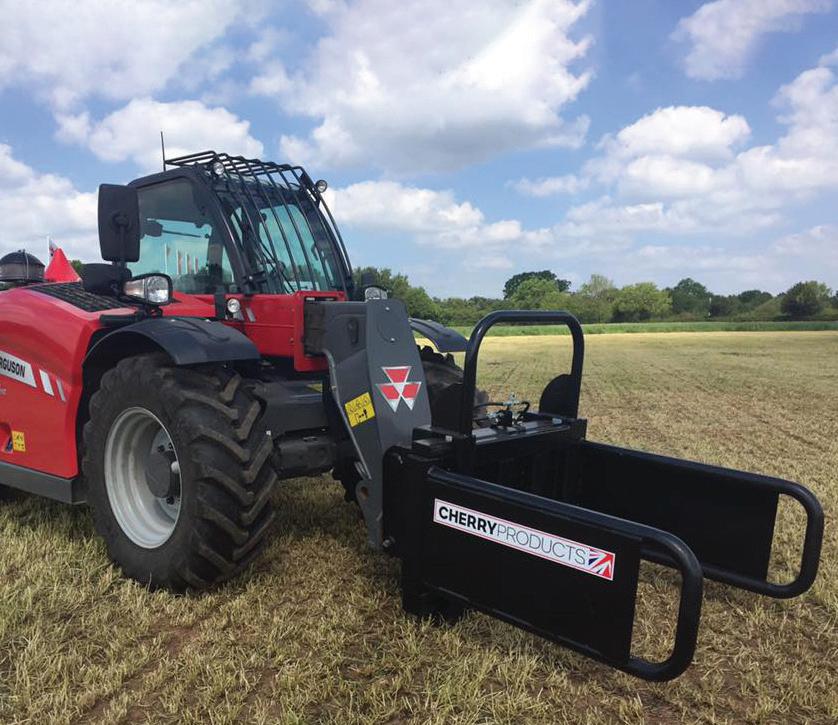


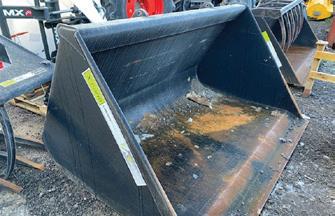
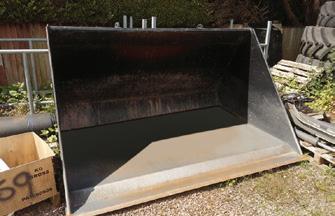
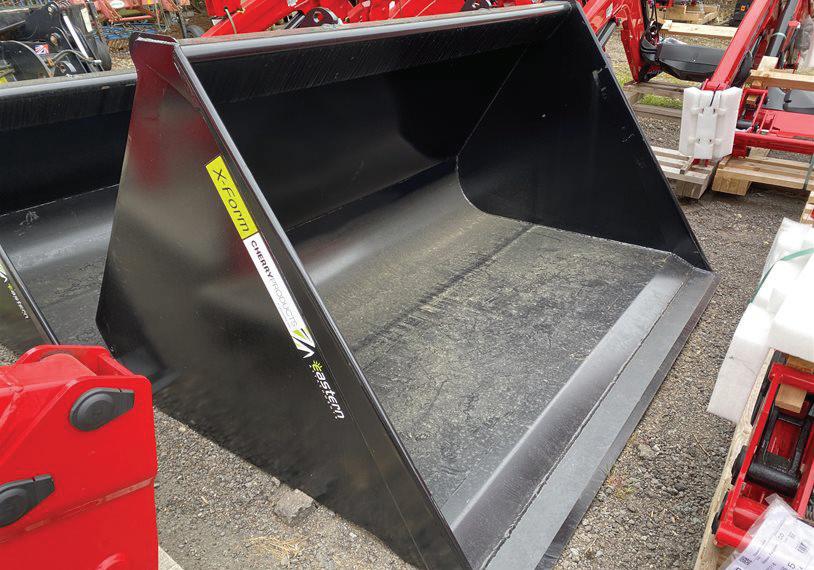
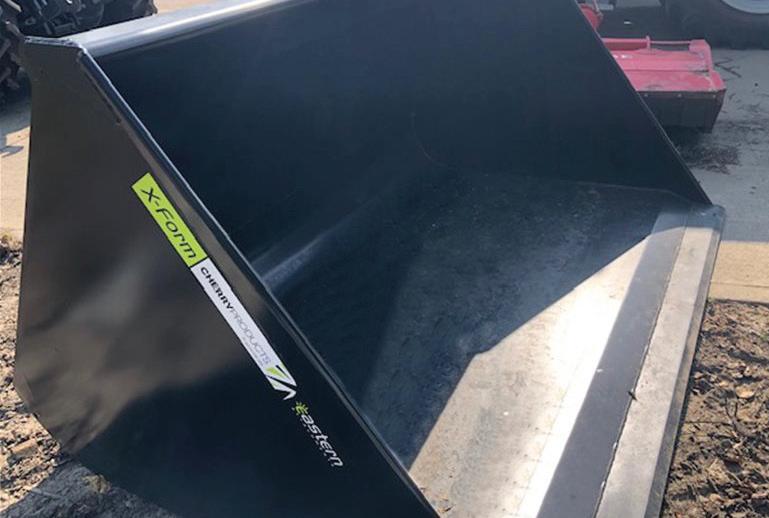
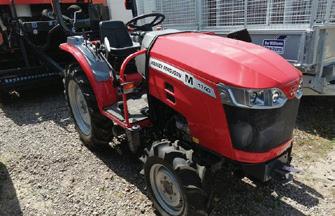

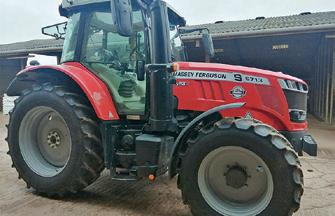
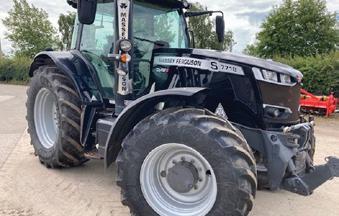

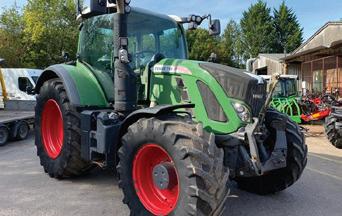

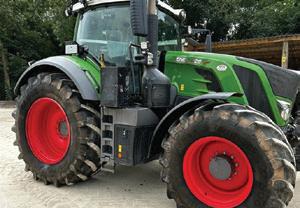


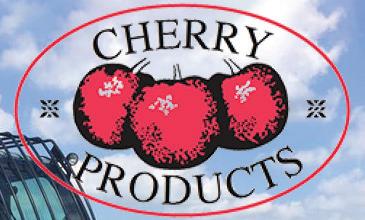








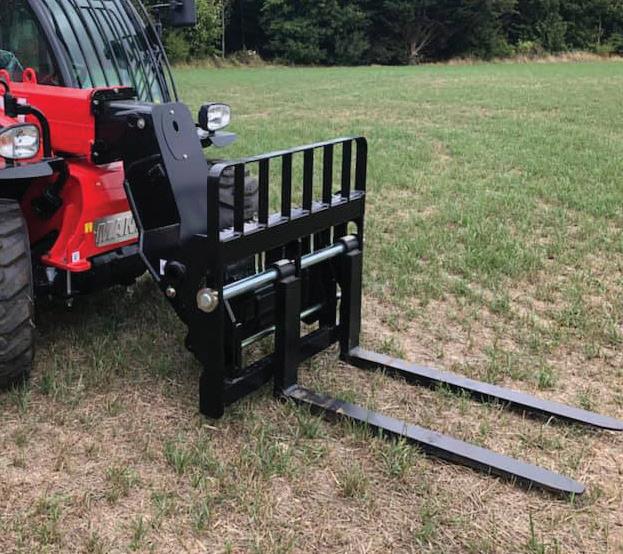


As the machinery market continues to be challenging for manufacturers and dealers alike, the trade for high-quality, secondhand equipment sold at auction continues unaffected, with machinery auctioneers Cheffins selling more than £8.5m worth of machinery in September.

Three high-profile auctions have highlighted the opportunities for buyers to make considerable savings over purchasing new equipment, with many low-hour, well maintained machines on offer and some with warranty remaining.
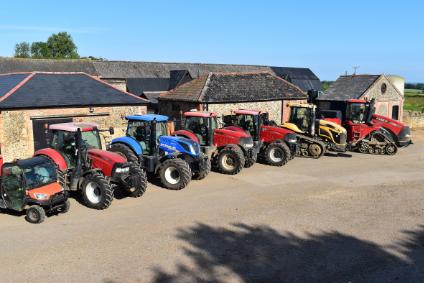
The dispersal of Peter Crosswell Agricultural Ltd, a business that farmed over 4,000ha near Winchester, included no less than three Class Lexion 8800 combines. Two of these high-output machines ended up selling to a single bidder for a combined cost of £600,000. Another prominent dispersal for Dalham Estates Ltd in Suffolk, further highlighted the demand for good-quality

TheARION600and500range-thenewmid-rangestandard Assistingyou,whereveritisneeded. Oneofourmostpopulartractorshasjustgotevenbetterthankstoahostofnew functionsdevelopedbyourengineersinconsultationwithARIONdrivers. Afterall,theyworkinthefieldeveryday,sotheyknowexactlywhattheywant. https://www.claas.co.uk
secondhand combines. A 2018 New Holland CR9.90 sold for £137,000, while a slightly older 2013 New Holland CR9080 made £65,000. Oliver Godfrey, director and head of machinery auction division at Cheffins, says the recent combine trade has shown the appeal of purchasing excellent examples of high-value machines at auction.
“Cheffins has brought six combines to the market in the last two weeks, and sold them all, with a collective sale total of £1,154,000. This is an excellent result as an oversupply of machines into the UK, and a significant reduction in farmed area due to the Sustainable Farming Incentive, means there could have been less demand. It proves that savvy buyers are turning to auctions of wellmaintained secondhand machinery to make considerable savings over new equipment.”
Tractors were in high demand at both sales and prices for four John Deere 6250Rs ranged from £76,000 for a 2019 model with over 5,000 hours, to a 2022 tractor with 3,228 hours reaching £91,500. A sought-after 2009 New Holland T9050, offering 450hp and had been on the same farm since new, was subject to some competitive bidding from an online buyer but eventually made £77,000. Three identical New Holland T7.230 machines, with varying workloads of 6,000-7,000 hours, made between £45,500 and £51,500 each. In Suffolk, a superb 2011 Cat Challenger MT765C made an excellent £79,500, closely followed by a 2013 Case Quadtrac 550 that reached £78,000 and a 2019 JCB Fastrac 4220 that finished at £63,500.
Top prices were also paid at both sales for an excellent selection of implements. One of three 2021 Horsch Sprinter 6ST drills reached £65,000, followed by a trio of 30m Chafer Sentry trailed sprayers, with a 2022 model making £50,000, and a 2014 Vaderstad TopDown 700 finding a home for £34,000. Oliver says September has seen new


buyers turning to auctions.
“The agricultural machinery market is facing some acute challenges, and this has led to a widening demographic of buyers including more farmers and contractors, but also UK dealers and exporters. Throughout September, Cheffins has offered over 300 tractors to the market via onsite dispersals and our monthly Cambridge Machinery Auction, with export continuing to be a popular destination for secondhand UK machines. We have distributed machinery to over 30 different countries this year and have the experience and connections to deal with the paperwork and phytosanitary requirements now we are outside the EU.”
Cheffins has also seen an increase in popularity for timed online auctions, which are proving an effective dispersal method to achieve substantial premiums. This was evident at the C H Bennion sale in Northamptonshire, which included some 200 online bidders for the 100 lots on offer. The top price of the day was paid for a 2022 Case Puma 175 at £73,000, while a 2018 Case Puma 185 sold for £52,500. A low-houred Merlo TF33.9 telehandler made a very respectable £68,000.

The productivity and performance benefits of new heavy-duty suspension developed for 2025 Case IH Quadtrac flagship tractors have been recognised with an EIMA International 2024 Technical Innovation award from an international industry expert judging panel.

Part of the Italian international farm machinery exhibition since 1986, the contest is open to EIMA exhibitors who have developed innovative machines, accessories or components. On this basis, Case IH entered the new heavy-duty suspension system for its latest Quadtrac tractors, the first such full-suspended undercarriage technology to be made available on a four-tracked tractor, enhancing comfort in the field and on the road, increasing footprint and raising workrates through greater potential operating speeds on uneven land.
The heavy-duty suspension is designed from the ground up for 715+ rated horsepower, as available on the recently-introduced Quadtrac 715. The system is completely mechanical and hydraulicallycushioned, with no additional sensors or wiring. Independently suspended idler and mid-roller wheels in the undercarriage provide a 42% reduction in vertical acceleration at the operator seat during road travel. Featuring independent double axis suspension, the mid-rollers fully follow
ground contours, permitting higher field travel speeds in rough field conditions to ensure high workrates and the desired results from implements. The system also maximises each track footprint for more pulling power and the lowest possible ground pressure, minimising soil compaction and smearing. At each corner of the tractor, an 11% larger-diameter drive wheel and 5% longer rubber track – when compared to current Quadtrac models – helps ensure a longer track life. The system is grease-less and has maintenance free bushings and pins. An automatic track tension system ensures the correct tension regardless of the conditions.
“We’re delighted that the design ingenuity of our engineers has been recognised in this way. This four-tracked tractor full heavy-duty suspension system is a market first and a real advance in this sector that is exclusive to Case IH,” said Marco Lombardi, Head of Case IH and STEYR brands EMEA.
“After previewing the new Quadtrac 715 at Agritechnica 2023, it’s great to be able to launch this new development at EIMA 2024, and have it acknowledged with this award.
“The largest farms are continuing to grow in size, and new Quadtrac features such as the heavy-duty suspension are designed to help them maximise productivity through higher operating speeds to get the best results and highest outputs from the
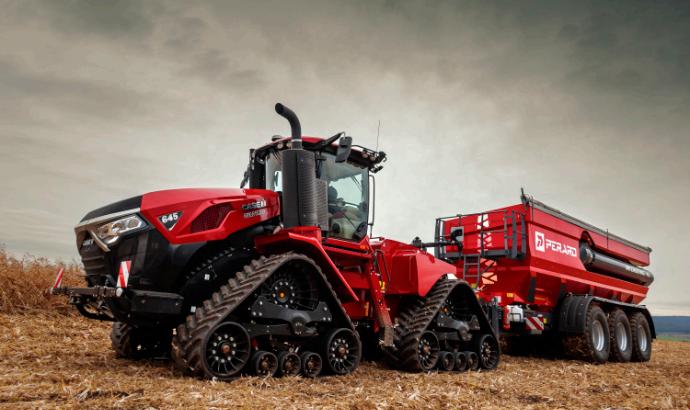

largest implements. At the same time, operator comfort – which is so important in attracting and retaining good staff – is enhanced both in the field and on the road, and with low maintenance components the suspension system adds nothing to the operator workload, ensuring a focus can be kept on core tasks.”
The EIMA International 2024 Technical Innovation Contest award ceremony was held on October 3rd in Bologna, Italy. At the exhibition, staged in the same city from November 6-10, the winning developments in the Technical Innovation Contest will be on display in the centre of the exhibition halls, while Case IH can be found in Hall 14, stand B/5.
Case IH is the professionals' choice, drawing on more than 180 years of heritage and experience in the agricultural industry. A powerful range of tractors, combines and balers is supported by a global network of highly professional dealers dedicated to providing our customers with the superior support and performance solutions required to be productive and effective in the 21st century. More information on Case IH products and services can be found online at https://www.caseih. com
Case IH is a brand of CNH Industrial N.V. (NYSE: CNH) a world-class equipment, technology and services company. More information about CNH can be found online at www.cnh.com



CLAAS has raised the bar even higher in terms of chopping quality, efficiency, reliability and comfort with the introduction of several new technologies for forage harvesters.
JAGUAR customers can now take advantage of new options such as the V-FLEX chopping cylinder and CSPS analysis via CLAAS connect, as well as various improvements to the crop flow and drive provided as standard.
The latest JAGUAR forage harvesters from CLAAS embody over 50 years of operational and customer experience with over 46,000 machines now sold worldwide. A legacy that demands systematic foresight, uncompromising customer focus and continuous technological advances. To honour our commitment, CLAAS has developed a range of market-ready innovations for the JAGUAR 900 series to make forage harvesting even more efficient, cost-effective and convenient for our customers. Feedback from pre-series customers working in particularly challenging conditions confirms that these new solutions provide impressive added value for customers.
V-FLEX chopping cylinder for JAGUAR 900: maximum flexibility, minimum wear
The completely redesigned V-FLEX cylinder marks a new milestone in chopping cylinder technology. Available as an optional alternative to the V-MAX chopping cylinder, it offers unrivalled versatility when it comes to knife configuration.Together with the new V-FLEX knives, it sets new standards for smooth running and knife service life. In addition, it
enables high throughputs and further enhanced chopping quality.
Until now, CLAAS JAGUAR forage harvesters have operated with the tried and tested V-CLASSIC (JAGUAR 800) and V-MAX (JAGUAR 900/900 TERRA TRAC) chopping cylinders. With the launch of the V-FLEX, another optional cylinder is now available for the JAGUAR 900/900 TERRA TRAC series. The new design with optimised V-angle and the new V-FLEX knives enable this chopping cylinder to achieve higher throughputs while at the same time reducing the noise level and ensuring smoother running. Crop flow is noticeably more consistent, especially for chop lengths over 12 mm. High knife stability and the triple bolted connection also means that the distance between the cylinder and the shear bar can be reduced to achieve even better chopping quality. All these improvements also deliver greater efficiency: with further reductions in fuel consumption per tonne of throughput.
The V-FLEX chopping cylinder is available in four versions with 20, 24, 28 and 36 knives and can be configured with a full set of knives, or half or one third the number of knives to extend the length of cut, or with a half knife set. With the V-FLEX 36, for example, this enables a flexible configuration with 36 knives in full-knife mode, 12 knives in the onethird-knife mode, 18 knives in the half-knife mode or with the new variant with 36 half-knives to double the length of cut for optimum crop flow and outstanding chopping quality. The V-FLEX 20, 24, 28 and 36 therefore provide a unique, universal
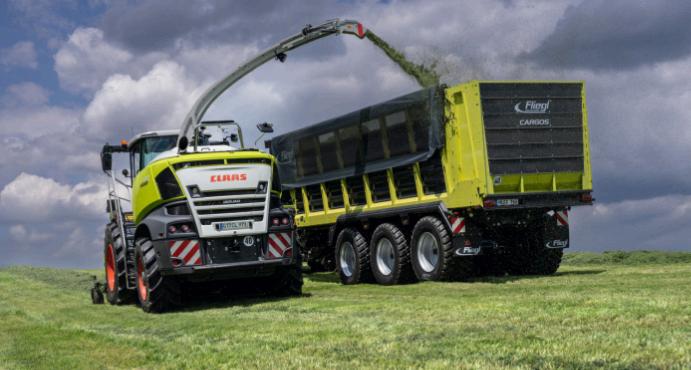

length-of-cut range from 3.5 to a maximum 53 mm. All chopping cylinders can be used for harvesting maize in combination with the MCC CLASSIC and MCC MAX as well as the MCC SHREADLAGE corncrackers.
New V-FLEX knives: less wear for longer operating intervals
The newly developed and patented knives on the V-FLEX chopping cylinder are angled at 10 degrees to the shear bar for outstanding precision and agility. The extended 23 mm thick anti-wear coating makes the knives extremely robust and wear-resistant in all conventional chopped forage crops. This significantly extends the service life of the knives based on throughput, which further optimises process costs in the forage harvesting chain for farmers and contractors."Thanks to their unique features, the V-FLEX knives are currently the most durable on the market,"explains Stefan Look, Product Manager Self-Propelled Forage Harvesters at CLAAS Self-Propelled Harvesting Machines in Harsewinkel."That means that our customers spend more time forage harvesting as they don't need to resharpen the knives as often. Reduced setup times, longer knife service life and reduced fuel consumption improve the performance and efficiency not only of our JAGUAR forage harvesters, but the entire

harvesting chain as well."
Riveted accelerator paddles ensure uniform crop intake. Available for grass and maize, the V-FLEX knives are fastened to the highly wear-resistant base with three bolts and corresponding clamps (half knives: two bolts and clamps per knife). The predefined position of the knives on the chopping cylinder makes for fast knife changes as there is no need to align the knives with the shear bar.
CLAAS has reconfigured the knife sharpening operation to make it even more user-friendly. In addition to the control options 'knife sharpening' and 'individual shear bar adjustment', operators can now select one that is even more convenient: knife sharpening and shear bar adjustment combined can be completed in just one minute for pre-determined sharpening cycles – at the touch of a finger in CEBIS. The sensor-based shear bar adjustment has also been optimised. A status display showing the process time, status description and visualised process is now available in CEBIS for all sequences. This enables operators to better estimate downtimes and make optimal use of waiting times. As before, the sharpening interval can be pre-programmed according to time or throughput based on the QUANTIMETER throughput readings.
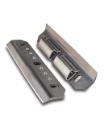

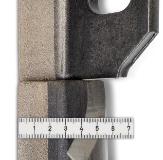

For years the CLAAS MULTI CROP CRACKER concept (MCC) comprising the MCC CLASSIC, MCC MAX and MCC SHREDLAGE has offered the widest choice of corncracker options for highly efficient processing of kernels, leaves and stalks from short cut to long cut and SHREDLAGE®. For more intensive kernel processing, the differential speed has now been increased from 30 to 40 per cent in the MCC CLASSIC with sawtooth profile and the MCC MAX with unique ring segments with cutting and shearing effect. Furthermore, the MCC CLASSIC is optionally available with a 190sawtooth profile for particularly small kernels such as sorghum.
The maintenance compartment now offers more space for fitting and removing the corncracker, making it easier to change the rollers. Less downtime during campaigns means more time for harvesting.Determine processing intensity in the field: CSPS analysis by smartphone and CLAAS connect.
The CSPS value (Corn Silage Processing Score) is an important indicator of kernel processor performance. Previously, this could only be determined in the laboratory. Now for the first time,
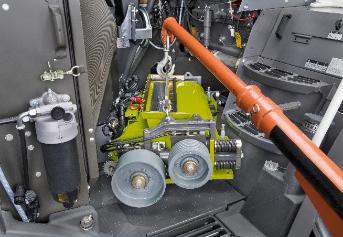
CLAAS can offer a solution for farmers and contractors in the form of an app in CLAAS connect which calculates the CSPS in a matter of minutes in the field while harvesting is underway.
To calculate the scores, a litre sample of chopped material is collected and divided into a minimum of five individual samples on a blue plastic A4-sized tray that comes with the test kit. The samples are then photographed with a smartphone and transferred to a server for analysis. The results are sent back to the smartphone a few minutes later –enabling the settings to be adjusted on the corncracker while harvesting is underway. This makes it possible to consistently maintain the desired or required processing quality, and is especially useful for contractors having to meet customer requirements.
PICK UP 300: optimised crop flow and fewer losses
When it comes to the PICK UP 300, the shape of the auger has been optimised in the middle and equipped with four offset paddles. This ensures even more uniform crop flow, which in turn has a positive effect on throughput. The flat or toothed cover or wear plates on the paddles are easy to replace.
The extended dust screen now covers the entire
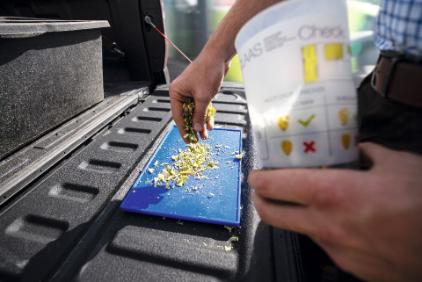

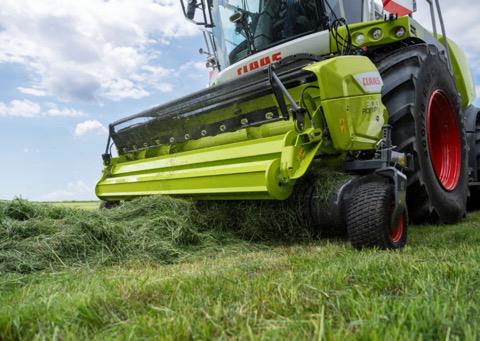
working width of the PICK UP. This reduces soiling in the intake and cylinder housings and on the windscreen, as well as effectively capturing crop fragments and alfalfa leaves, thereby avoiding harvest losses. However, the wide-mesh screen still affords a clear view of crop flow from the cab. Furthermore, the one-piece dust screen can easily be swung open for maintenance work.
Round-up of other new features:
• A new Carraro rear axle with a load capacity of 9 tonnes and 10-hole rims in the POWER TRAC variant enables four-wheel drive to be engaged under load. Furthermore, wheel spacers of 460 mm for the standard axle and 620 mm for the POWER TRAC four-wheel drive axle are available to widen the track.
• By double-clicking a button on the CMOTION control lever, the operator can activate the 'automatic trailer changeover' function for the AUTO FILL automatic trailer filling system. The discharge flap then directs the crop stream to a preset position at maximum speed to ensure minimal losses and maximum comfort for forage harvester operators and trailer drivers alike.
Key new features at a glance:
• New V-FLEX chopping cylinder for JAGUAR 900 / JAGUAR 900 TERRA TRAC as optional alternative to the V-MAX for even greater versatility.
• V-FLEX knives: 23 mm antiwear coating for exceptional service life and new geometry
with 10 degree cutting angle for precise cut in all crops. Significant reduction in noise levels and improved chopping quality.
•Optimised process management for knife sharpening and shear bar adjustment – now available as a combined option for even fewer downtimes.
•Factory-fitted speed differential of up to 40 per cent for MCC CLASSIC and MCC MAX corncrackers and new MCC CLASSIC with fine sawtooth profile for use in small-seeded crops such as sorghum.
•Larger maintenance compartment for faster, more convenient changeover of corncracker module.
• App-based CSPS determination in the new CLAAS connect: calculate the corn silage processing score in a matter of minutes while harvesting is underway – a digital tool to optimise corncracker settings
• PICK UP: new intake auger with four paddles ensures uniform crop flow with reduced torque peaks and higher throughput
• New Carraro rear axle with four-wheel drive engagement under load and option of extending track by 460 or 620 mm.
• New 'automatic trailer changeover' function by double-clicking button on the CMOTION control lever: time-saving trailer changeovers which minimise transfer losses and greatly reduce operator's workload
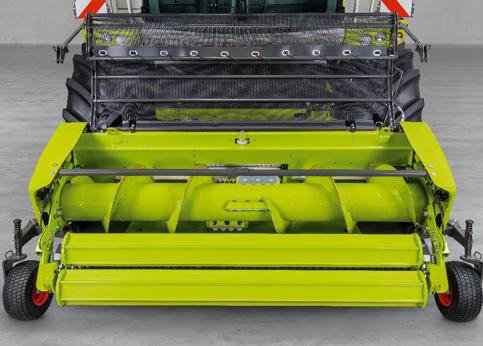

Refreshed Design, Improved Visibility, and Sleeker Lines
Complement Increased Hydraulic Output, Higher Gross Vehicle Weight, Larger Tire Options, and an Updated Front Axle—All Coupled with Full Precision Farming Technology Availability
The next chapter in the legacy of Case IH's Farmall tractors begins with the 2025 Farmall C models, a bold leap forward that delivers not only a fresh look but also significantly enhanced performance and cutting-edge precision farming technology.
For 2025, Case IH Farmall C tractors deliver customer-driven innovations that improve every aspect of the farming experience. The 24-speed ActiveDrive 2 (Hi-Lo) transmission in all models ensures smoother shifting and exceptional control, while the increased hydraulic pump capacity of 82 l/min translates
into faster loader cycle times and more efficient operations. Additionally, the newly introduced ActiveClutch feature allows the tractor to be held on the brake pedal without requiring the clutch, making it ideal for front loader applications.
From the 90C to the 120C, farmers will experience a new level of control, efficiency, and comfort, all while benefitting from precision technologies once reserved for larger, more advanced machines. Farmers can tackle even the most demanding tasks with confidence, knowing that their equipment is built to perform under pressure.
At the heart of this evolution in technology and design is a commitment to operator comfort. Long days in the field demand tractors that not only work harder but also make the job easier on the operator behind the wheel. A six-post cab offers superior visibility, while the
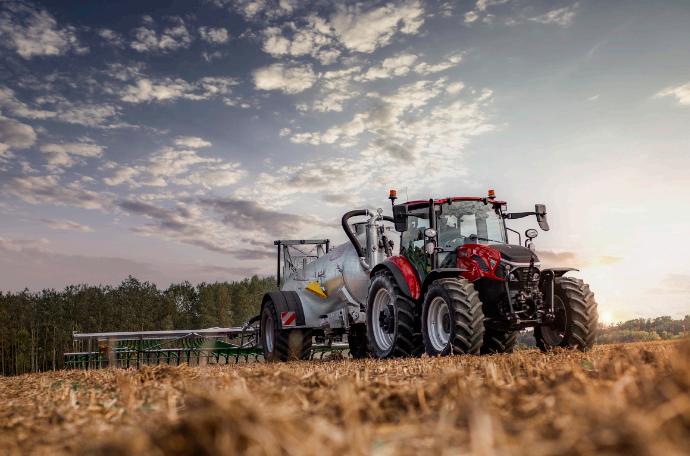
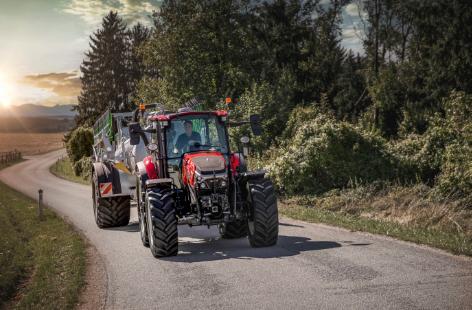
repositioned exhaust maintains the open, unobstructed view farmers have come to appreciate. While driving models specified with the optional new cab suspension system, the operator will immediately notice the difference in comfort.
Further enhancing the operator experience are the newly installed LED lights, which ensure clear vision during early mornings, late nights, or long road journeys between fields. The increased diesel capacity of 130 litres allows for longer operation times, while the new tank design provides greater ground clearance. The modernized digital instrumentation and adaptive lighting in the cab create an intuitive, high-tech environment that feels as advanced as it performs.
Case IH knows that today's farmers are more data-driven than ever, and the 2025 Farmall C models meet that need head-on. With optional factory-fitted telematics available in standard and advanced packages, farmers can now benefit from realtime geo-location, machine monitoring, and wireless file transfer—technology that puts vital operational data at their fingertips, whether in the cab or remotely on a mobile device. This precision is further enhanced with the availability of hydraulic auto guidance, powered by the Case IH Pro 1200 monitor and Case IH VectorPro receiver. This system ensures centimetre-level accuracy, reducing overlap and improving efficiency, even in the most complex field layouts.
Case IH has engineered a suite of intelligent headland management solutions, streamlining operations so farmers can focus more on their fields and less on machinery adjustments. The Auto PTO feature automatically engages and disengages during headland turns, making transitions smoother and less labourintensive. Paired with the Auto Differential Lock, which disengages the front and rear differentials when the rear lift is raised and reengages them when lowered, the system provides seamless operation during headland manoeuvres, minimizing soil disruption and increasing efficiency. The newly designed front PTO, now equipped with a wet clutch, offers quieter and more efficient operation.
An increased gross vehicle weight of 7,000kg and an upgraded rear lift capacity of 4.7 tons mean heavier implements can be utilized, providing greater versatility. Larger rear tires (up to 540/65 R38) further improve traction and flotation, helping to minimize soil compaction and enhance yield potential.
The 2025 Farmall C models will make their first appearance at the Sommet de l'Élevage in France (October 1-4), followed by a full European launch at EIMA International in Bologna, Italy (November 6-10).
Further developments across other models in the Farmall C lineup will follow in 2025.
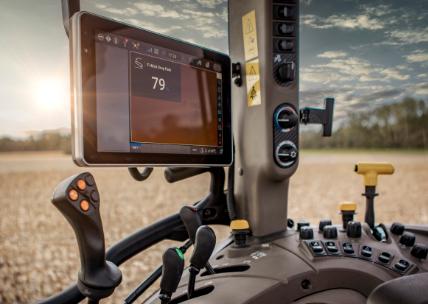

Producing some of the most influential tractors and partnerships of all time, Ford will be well represented at this year’s Newark Vintage Tractor & Heritage Show, held at Newark Showground on 9-10 November.
Epitomising the famous handshake between Henry Ford and Harry Ferguson is the distinctive shape of the Ford N-series tractors, several of which will be on display. The show will also be honouring 60 years of Ford’s 6X 1000 (Pre Force) tractors - a series that revolutionised tractor engineering.
Henry Ford built and shipped 7,000 tractors to Great Britian between 1917 and 1918 to help mechanise and increase food production in the face of shortages owing to World War One.
Known then as Fordson, production took place in the US (1917–1928); Cork, Ireland (1919–1923 and 1928–1933); and Dagenham, England (1933–1964). Then, in 1964 a new factory was opened in Basildon, Essex, specifically designed for volume tractor manufacturing, and tractor production was moved there from Dagenham, with the Fordson name stopped and all tractors, thereafter, badged as Fords.
At this year’s show, Phil Gibson from the Ford & Fordson’s Association is helping to build a feature that observes one of the factory’s first and most iconic series of tractors –the Ford 6X 1000.
“Better known as the PreForce Fords by enthusiasts, they were designed so that they
could be built in volume by any of the company’s factories for use in all types of agriculture around the world,” says Mr Gibson. “The series was made up of four models; the 37 horsepower (hp) 2000 Dexta, 46hp 3000 Super Dexta, 55hp 4000 Major, and 65hp 5000 Super Major.”


The series was introduced as a replacement for the Fordson models in the UK and the Ford N-series in the US. Production in the UK began at Basildon in 1964, but the model wasn’t officially launched until December 1964 at the Smithfield Show in London.
“They were totally different in style and how they were to be driven,” says Mr Gibson. “To smooth the series introduction to British farmers, Ford cleverly named them using familiar model names and introduced the new blue and grey paint scheme to the older ranges before the 6X tractors were launched. They are my favourite styling of tractor of all time.”
Mechanically, the tractors were also different, with the three smaller tractors sporting three-cylinder engines and the larger 5000 model a fourcylinder engine - all available with a new semi-automatic transmission system, the Select-O-Speed gearbox. “If you knew how to drive a tractor with the new transmission it was a very efficient tractor,” says Mr Gibson. “But a lot of people weren’t properly shown how to, and this did cause some issues, which saw a lot of people convert back to a standard transmission.”
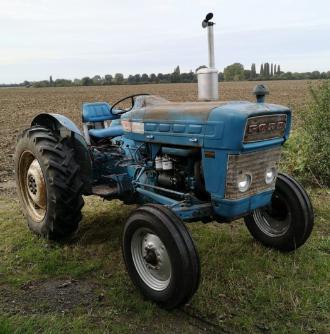
The 4000 and 5000 models were also upgraded to have independent PTO – favouring hydraulic drive over mechanical. “That was also quite an innovative feature.”
By 1968, the 6X series had gained popularity – in particular the 4000 model – and Ford had a reasonable snag list and made improvements, which resulted in the launch of the 6Y series, better known as the Force series. The 6X tractors were then decommissioned.
Ashley Clough from Bottesford, Leicestershire, will be bringing two of his Pre-Force tractors to the show - a 3000 and a 4000 –as well as a Force 3000.”
The 1968 Pre-Force 4000 is his favourite; purchased from his boss in 2012 after he restored it during his 12month apprenticeship. “It didn’t run because the engine had seized,” he explains. “So it was a full engine rebuild and cosmetic job.
“I know that it was originally purchased by a local farm from the Grantham Tractor Company. Today I use it in road runs and occasionally for haymaking.”
Scott, former director of marketing services at Massey Ferguson. “The net result of this partnership was a beautiful, well-engineered tractor – the Ford 9N.”
Launched in 1939, the Ford 9N was completely different to the tractors found in both American and British fields. Its mechanical engineering and high power-to-weight ratio made it a game-changer in agricultural engineering. “It could carry out operations that you would have otherwise needed a much larger tractor for,” says Mr Scott. “And Ford’s volume production and resources made it very competitively priced.”
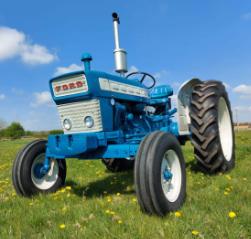
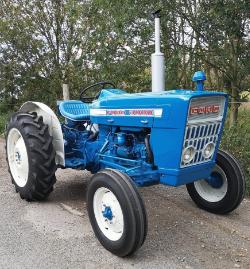
Wanting to expand his collection in 2017 he purchased the Pre-Force 3000 from a farmer near Lyme Regis, Dorset. “It is a bit different - at some point it had the Select-o-Gear replaced with a standard gearbox,” he says. “It also had a Lambourne safety cab fitted, but I removed it to take it back to its original features.”
Ford’s N-series was the American manufacturer’s reintroduction to the American tractor market in 1939, following Harry Ferguson’s demonstration in 1938 of the Huddersfield-built Ferguson Brown tractor. This featured Ferguson’s innovative threepoint linkage system – the basis of linkage systems on modern tractors today.
Henry Ford was impressed and agreed to manufacture the tractor under the Ford name, with the famous handshake sealing the deal and securing supply of a new tractor design into the UK. “The partnership brought together Ferguson’s mechanical ingenuity and Ford’s superior engines and styling, as well as a huge supply chain and expertise in volume production,” says Campbell
The 9N was exported to Europe as the 9NAN; a four-cylinder, three-speed tractor modified to run on kerosene instead of petrol.
Around 99,000 Ford 9N tractors were manufactured before production ceased in 1942, after America entered WW2 and raw materials became short in supply, alongside pricing restrictions. However, Ford adapted and the 2N was born. “It was still a 9N in many ways – but a more basic version,” explains Mr Scott.
“Electrical components, like batteries, and rubber were in short supply, so early versions of the 2N had steel wheels and a handcranked ignition system.”
Later versions of the 2N were brought back up to a similar specification as the 9N, until production ended in 1947 to make way for Ford’s series upgrade, the Ford 8N, following the public fallout between Ford and Ferguson in 1945.
The most notable differences between the 8N and its predecessors were its four-speed transmission, increase in PTO and drawbar horsepower, the latter at 23hp compared to 16.9hp. The 8N also had a new look, donning two-colour paintwork.
Ford 8N tractor sales outdid those of both the 9N and the 2N, with around 524,000 tractors manufactured from 1947 to the end of its production in 1952.
• Tickets to the Newark Vintage Tractor and Heritage Show are available at: https:// newarkvintagetractorshow.ticketsrv.co.uk/ tickets/30
Discounted tickets are £15 for adults (17+ years) until 1 November, increasing to £19 thereafter. Children (16 and under) enter for free.

Adding to its legacy of value and quality to customers, Polaris Off Road today unveiled further updates to its 2025 lineup, featuring new upgrades that are now available as standard on RANGER and Sportsman models, as well as a new, special-edition colour option available on the top-ofthe-range Sportsman ATV.

In addition to the recentlyannounced Sportsman 570 lineup for 2025, Polaris now unveils the 2025 refresh for its top-spec sport ATV - the Sportsman XP 1000 Swhich now includes the introduction of Turf Mode on tractor-homologated models for easier manoeuvrability, as well as performance improvements to the rear sway bar and drag links to increase durability.

• 2025 Sportsman XP 1000 S - Steely Blue (MD / T3a / T3b / L7e)
• NEW 2025 Sportsman XP 1000 S LE - Lava Orange Metallic (MD / T3a / T3b / L7e)
Polaris introduces the all-new Sportsman XP 1000 S LE model in a striking new Lava Orange Metallic colour, featuring advanced Walker Evans Racing Shocks so riders can stay out longer with less fatigue and turf mode (tractor & L7e homologations) for easier manoeuvrability.
The Sportsman XP 1000 S takes off-road capability to new heights with the industry’s only 144cm wide stance that delivers superior stability, as well as exceptional torque thanks to its powerful 952cc ProStar engine, ensuring a confident ride even in the most challenging conditions. Key features include high-clearance dual Aarm suspension with 29cm front and 35.5cm rear travel, 27" Duro Powergrip II tyres for optimal traction, and a high-strength frame engineered for maximum durability. All XP 1000 S models feature electric power steering (EPS) for less rider fatigue, on-demand all-wheel drive (AWD) for extra traction when it is needed most, as well as an engine braking system (EBS) and active descent control (ADC) for a more confident ride. Riders can also choose between three ride modes - performance (PERF), standard (STND), and work (WORK) - offering customisable throttle response. Performance mode offers a more aggressive feel, accelerating harder with less throttle movement, whilst work mode provides a smoother throttle response than standard mode.
• 2025 Sportsman XP 1000 lineup
• 2025 Sportsman XP 1000 - Blue Slate Metallic Smoke (L7e)
• 2025 Sportsman XP 1000 Touring - Onyx Black (L7e)
• 2025 Scrambler XP 1000 lineup
• 2025 Scrambler XP 1000 - Storm Gray (L7e)
• 2025 Scrambler XP 1000 S - Lifted Lime Pearl (T3a / T3b / L7e)
POLARIS RANGER
The performance-meets-value mid-size Polaris Ranger 570 has been providing unstoppable utility performance for more than a decade, thanks to its reliable and powerful Prostar 570cc DOHC engine, and unmatched versatility with a 227kg rear bed capacity, 560kg towing capacity, on-demand all-wheel drive and Turf mode to master any job - big or small. With its compact size at just 142cm wide, tight turning radius for agile navigation, and over 25cm of ground clearance, the Ranger 570 can go anywhere.
For 2025, all RANGER 570 models now feature the integration of Electric Power Steering (EPS) as standard, including the base model. These enhancements continue Polaris’s commitment to delivering unmatched versatility and performance for unbeatable value.
2025 RANGER Mid-Size lineup
• 2025 RANGER SP 570 EPS - Sage Green (MD / T1a / T1b)
• 2025 RANGER SP 570 EPS Nordic Pro EditionBlack Pearl (T1a / T1b)
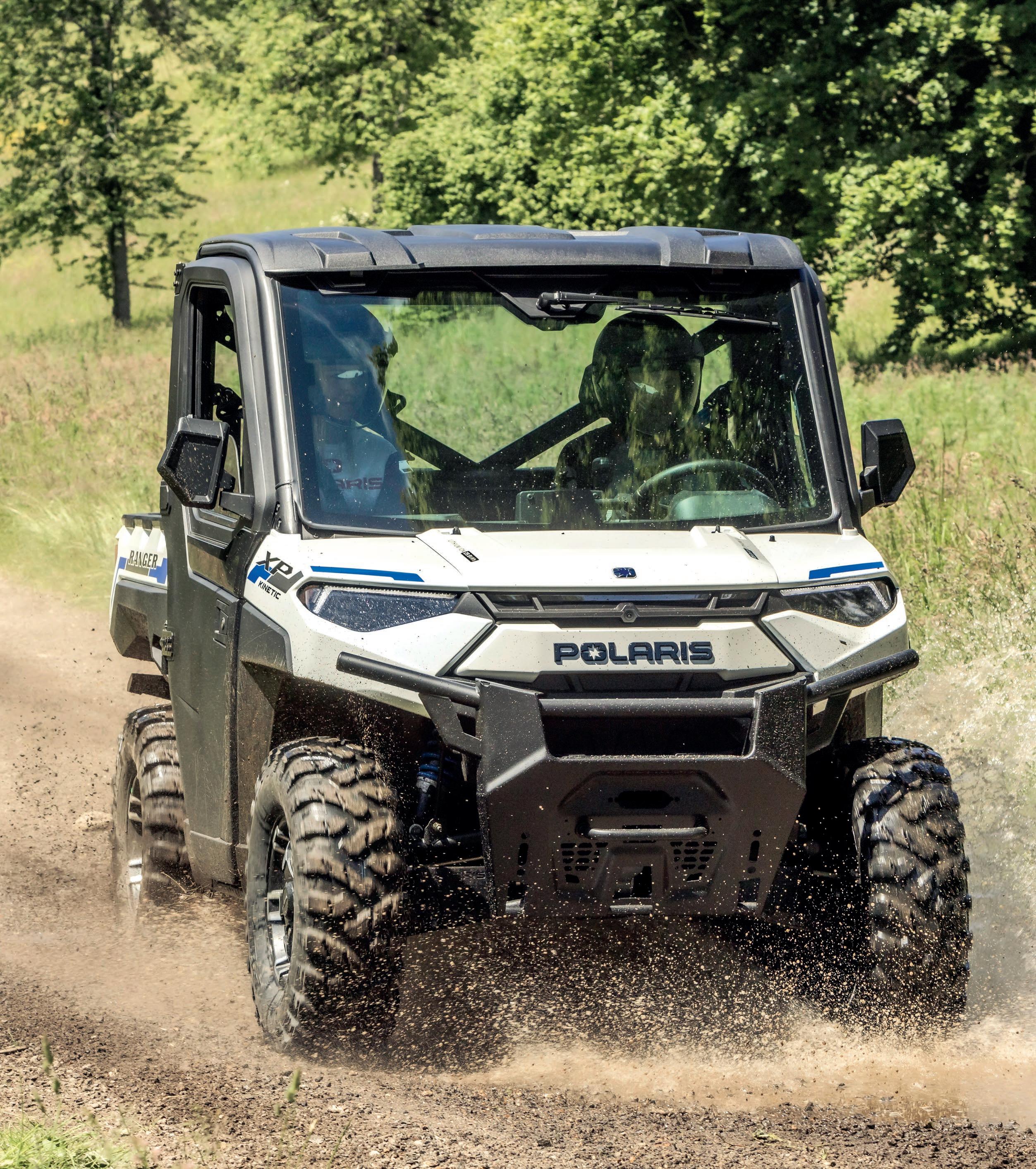
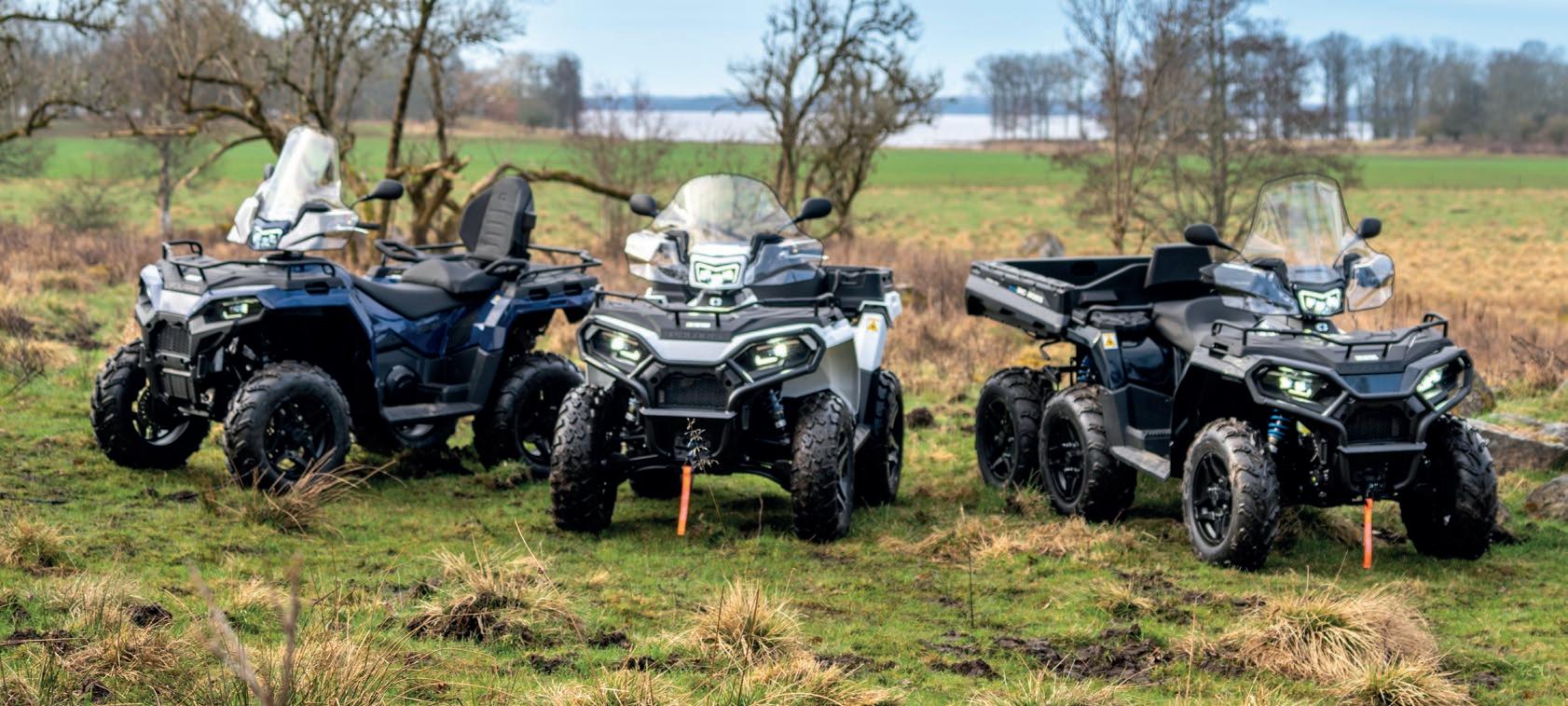


Tel: 0330 041 5141 Polarisbritain.com

Argyll Engineers Limited
Glenshellach Road, Oban PA34 4BH. Tel 01631 565 011 www.argyllengineers.com
Bruce Hopkins Limited
Shenington Airfield, Oxon OX15 6NW. Tel 01295 680 711 www.brucehopkins.co.uk
Clwyd Agricultural Limited Terfyn Buildings, Caerwys Road Dyserth, Rhyl LL18 6HT. Tel 01745 571 018 www.clwydagri.co.uk
Day & Coles (Agricultural) Limited
Newton Close, Park Farm, Wellingborough, Northamptonshire NN8 6UW Tel 01933 673 900 www.dayandcoles.co.uk
Halls of Bromyard
Tenbury Road, Bromyard Herefordshire HR7 4LL Tel 01885 489 199 www.hallsofbromyard.com
LJ & CA Cannings
Challow House Farm, Main Street, East Challow, Wantage, Oxfordshire OX12 9SR Tel 01235 763 103 www.ljcannings.co.uk
01235 617772 www.polaris-wantage.co.uk
Taylors Tools (KL) Limited
43 Hempstead Road, Kings Langley WD4 8BS Tel 01923 268 355 www.taylorstools.co.uk
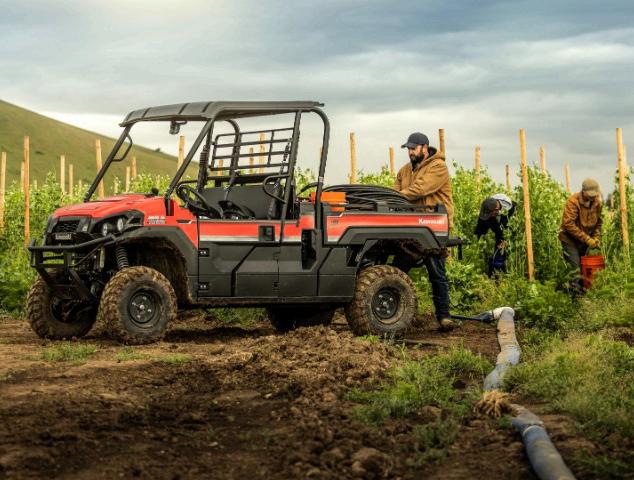



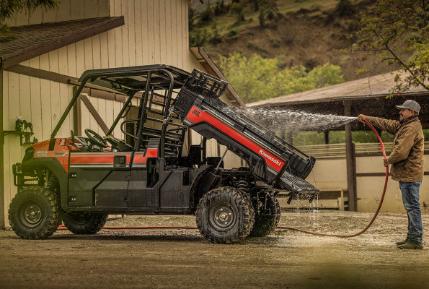

(F: 279 mm; R: 256 mm) contributes to the increased ground clearance as well as ride comfort.
For the driver, Kawasaki's high-grade electric power steering (EPS) system is speed sensitive, offering light steering effort at low speed, while reducing assistance as vehicle speed increases to ensure responsive steering.
As befits a high spec machine, electrically "selectable" 2WD/4WD and rear differential lock allow easy changing between drive systems to suit changing terrain and application plus the dual-mode rear differential provides maximum traction when locked and minimises ground disturbance when unlocked.
When go turns to slow, front and rear disc brakes ensure strong, sure stopping power. The hydraulic disc system offers predictable performance, delivering brake power that matches input at the brake pedal. And with a load capacity of 453 kg (1,000 lbs) plus towing ability of 907 kg (2,000 lbs), the MULE Pro-FX is built for work – hard work!
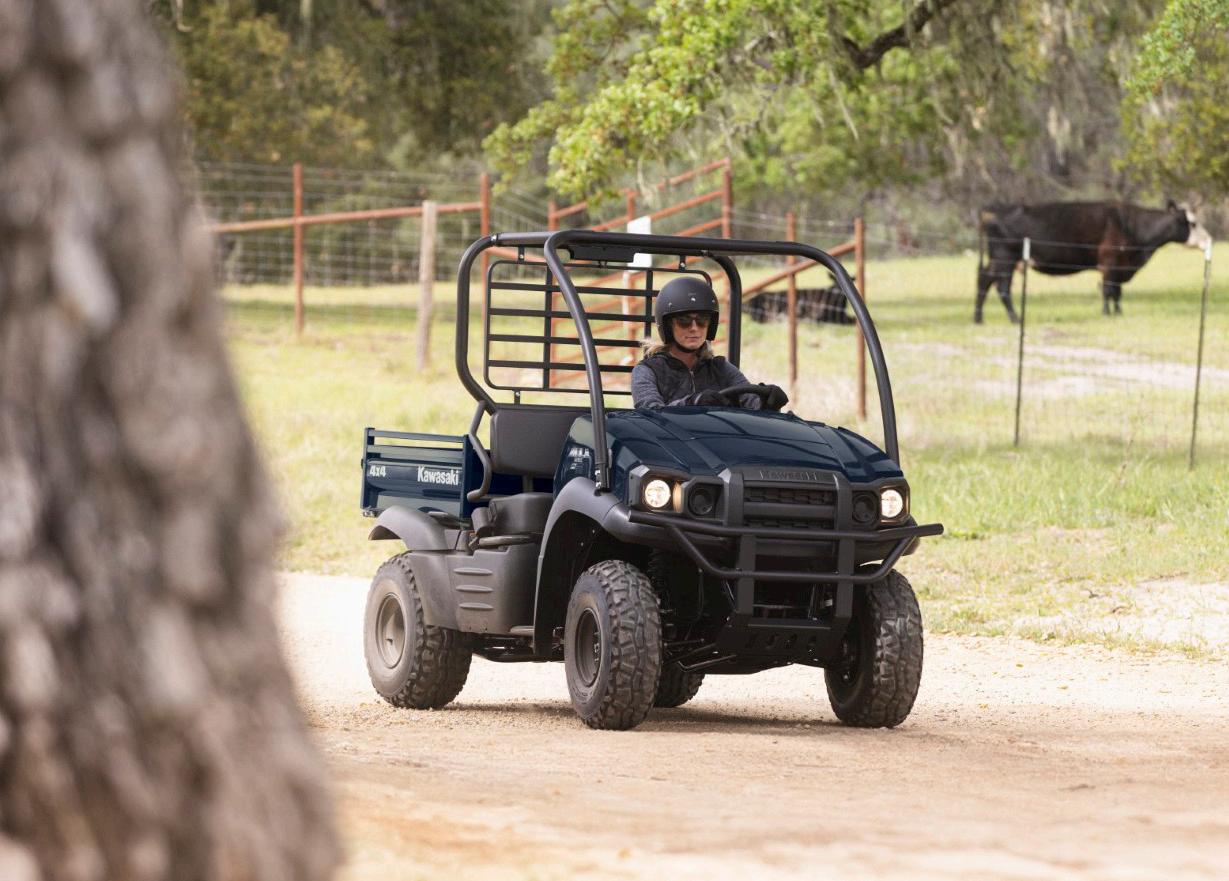
The MULE SX 4x4 rides on 24 inch tyres and offers selectable 2WD and 4WD, with CVT drive 2 speed auto, reverse and rear differential lock. Kawasaki
PRO styling, tilting steering wheel and the dependable OHV 410cc engine, 181kg load and 500kg towing capacity, make this a true go anywhere vehicle.


TVs are used across the UK by a variety of farming and agricultural businesses. Each face unique challenges in day-today operations, whether it be managing livestock, towing heavy materials or traversing difficult terrain. Recently, Suzuki ATVs has celebrated being part of the farming landscape for over 40 years, and with the company’s latest generation of KingQuads, this experience has culminated into the toughest models to date.
The right ATV for you depends largely on the nature of your land and enterprise. If you’re spending long hours in the saddle, routinely riding over very rough country, towing large loads, or using heavy attachments then choose the KingQuad 750XP (XP denotes independent suspension and power steering). This model features QuadMatic 4-wheel drive, fully independent suspension, an advanced and improved engine braking system, and an impressive towing capacity of 600kg. The powerful




722cc engine, tuned for smooth power and torque delivery in all situations, makes it ideal for agricultural and sports use, as well as trail riding.
On lowland farms, estates and equestrian properties, the KingQuad 500X offers an ideal balance of features, toughness and easy handling. Also featuring 4-wheel drive, fully independent suspension and an advanced engine braking system, it has true off-road capability. The 493cc fuel-injected engine’s cylinder head and piston are specially designed to provide power and torque across the rev range, making the 500X equally suitable for towing, using attachments, or just as a great work horse.
For the more demanding conditions of hill farms, or if you’re regularly in the seat all day, the power steering model (KingQuad 500XP) would be the choice as this model offers even greater control, precision and fatigue-free riding.
Paul Childerley, Owner of Childerley Sporting Ltd and Suzuki ambassador, said “I have been running Suzuki quad bikes for well over 10 years with fantastic satisfaction and reliability for the job. With day-to-day gamekeeping and estate duties, ATVs are put through their paces by myself and the
team, maximising its use for all types of work over a variety of terrain and in all weathers. Suzuki ATVs are always reliable, easy and very comfortable to drive”
And Joyce Campbell, fellow Suzuki ambassador and sheep farmer at Armadale Farm in the Scottish Highlands, said “The Suzuki quads we use on our hill farm are vital tools for the smooth daily running of our business. They are reliable, comfortable and very nice to drive with their power steering system. When we're gathering or checking sheep, out on our hill, they handle the rough terrain safely with ease. We would not be able to lamb and calve outside each spring, without our Suzuki quads to move and check our livestock. It speaks volumes that I’ve been a happy Suzuki customer for over 18 years.”
Every Suzuki ATV customer can currently benefit from a fantastic trade-in offer, with 10% off the RRP of a new KingQuad when trading in any brand of quad bike in part exchange.
For more information, T&Cs and to discover the range, visit: https://atv.suzuki.co.uk

rom November 6-10, Trelleborg Tires will introduce its firstAgriculture Rubber Track, ART1000, at Italy's EIMA exhibition, along a wide selection of products and services designed for modern farming.
The ART1000 represents the latest in specialized solutions from Trelleborg Tires, addressing the evolving needs of this industry, by increasing productivity and preserving soil.
Trelleborg Tires' first-ever Agri rubber track: high-performance for high-horsepower
TheART1000leverages Trelleborg Tires' technological expertise to bring its very first Agriculture Rubber Track designed for highhorsepower machines.
Built to last, the ART1000 optimizes vehicle efficiency and performance, providing extra strength and long lasting durability. ART1000 tracks are engineered for exceptional versatility and mobility of farm machinery, regardless of working conditions. Its track design features advanced tread bars that minimize soil compaction, promoting healthy root growth and nutrient absorption.The high self-cleaning capability results in increased traction and improved ride quality in demanding high-pull applications, maximizing overall performance and reducing operating costs. This revolutionary new technology, developed from Trelleborg Tires' extensive experience in tire manufacturing, ensures superior performance compared to the competition. With its highquality rubber compounds and cutting-edge engineering, ART1000 provides high wear and cut resistance, ensuring durability for the most rigorous agricultural challenges.
Empowering Agri Professionals with tomorrow's tire technology
EIMA sets the stage for next-generation agricultural technologies engineered to meet food needs of a global population expected to grow by almost 1 billion within the next decade. Trelleborg Tires is set to respond with technological advancements on show at Stand B/7 | Hall 16, making a significant impact in fields worldwide, including:
• PneuTrac®:ahybrid between a radial agricultural tire and a track,designed for smooth navigation in vineyards and orchards. Powered by the "Omega" design sidewall and enhanced PneuTrac® technology, its extended footprint ensures outstanding flotation, traction and exceptional lateral stability. The tire has been shown to deliver solid traction even on slippery slopes, typical of wine country. PneuTrac® reduces machine downtime, a critical concern for farmers looking to increase productivity and gain substantial cost savings in fuel, maintenance, and labor.
• Latest developments for theATMS(Adaptive Tire Management System).Since its MVP (Minimum Viable Product) launch, the ATMS has engaged in collaboration projects with OEMs to ensure technical and commercial validation. Trelleborg Tires has now provided the so-called "B-sample" to OEMs, which, while not yet certified, represents a step before series industrialization. Currently, OEMs are testing the solution allowing the user to the real-time data collection such as tire dynamic load, pressure, and temperature, as well as pressure advice, vehicle and financial performances. These data support decision-making in field operations, including pressure regulation, ballast setup, and other vehicle configurations. Visitors to Trelleborg Tires' stand will discover how the user interface of the desktop app works, showcasing how the ATMS translates data into actionable insights

for farmers and fleet managers. Additionally, the ATMS infrastructure reduces operational time and sensor equipment costs in the supply chain through seamless sensor patch, designed and patented for "sensor-ready tires". The sensor is designed to guarantee a lifecycle of up to 5,000 hours of uptime or 5 years, which corresponds to the average tire lifecycle before replacement.
• TM1 ECO POWER:tires made from 65% recycled and bio-based materials outperform standard tires on road and hard soil. Presented for the first time to the Italian market, this tire was developed with OE partner Fendt and is for both traditional and electric tractors. Using sustainable engineering, it achieves up to 47% lower rolling resistance, 26% better traction and 3% significant savings in fuel and battery consumption, compared to other premium tires.
• TM1000 ProgressiveTraction®tire range designed for advanced farming. This tire, known for winning multiple awards, is specifically made for cutting-edge machinery, offering premium handling, high load capacity, self-cleaning properties, and ultimately providing higher traction.
• As a leading expert in complete wheel solutions, Trelleborg will also show off itspatented agricultural TW rim profilefor today's tractors, combines and harvesters, ensuring easier fitting and proper inflation of low-pressure tires for enhanced
EIMA visitors to Trelleborg Tires Stand B/7 | Hall 16 will also discover the benefits of thePremium Care Program, which includes an extended warranty for Trelleborg tires, along with expert support and tailored resources to enhance tire lifespan and performance. Trelleborg Tires team of experts will be available to explain how the program boosts productivity and ensures smooth operations, while also assisting with on-site signups for immediate access to these valuable benefits.
Roberta D'Agnano, EMEA Marketing Director at Yokohama TWS states, "Trelleborg Tires has a longstanding commitment to its customers, helping them go further with advanced solutions for a rapidly evolving world. We believe that sustainable agriculture begins with the soil: our specialized tires are designed to support nextgeneration machinery while ensuring extra ground protection, representing the next frontier of modern farming. This focus is essential for our growth and the advancement of agriculture worldwide. We welcome everyone to visit our booth at EIMA and discover how Trelleborg Tires can make a difference in farming operations.".
OnNovember 7that 2 PM, Trelleborg Tires will host apress conferenceat Bologna's EIMA exhibition, inNotturno Hall (Service Center / Block D / 1stfloor), to present the ART1000 alongwith the latest innovations in tire technology.

For decades, Mitas has been ensuring that farmers can get their jobs done with reliable tires that work for them. At this year's EIMA exhibition from November 6-10 in Bologna (Italy), the Mitas Stand B/7 in Hall 16 will once again feature a range of radial agricultural tires that help farmers increase
yields, decrease soil compaction, and operate smoothly in and out of the fields in every season, including:
• VF800/70R38 HC 3000 CFO: one of the latest size added to this tire line. The HC 3000 tires are designed for high-powered tractors and harvesters that carry out Cyclic

Field Operations (CFO) with repeated changes in tire loads. With VF (Very High Flexion) technology, which guarantees up to 40% greater load capacity compared to standard tires, the HC 3000 tire delivers efficient load distribution, reducing soil compaction and fuel consumption.
• 710/70R42 SFT.With its distinctive shape, the SFT (Super Flexion Tire) tire is developed for high-horsepower tractors, where performance and reliability are essential. Its pattern design and carcass structure assure high traction and large footprint enhancing the performance. These characteristics make the SFT a tire with excellent productivity, thanks to transport speeds of 65 km/h while saving time and operating costs.
• 540/65R30 HCM. Designed for all-season jobs, the all-purpose HCM (High Capacity Municipal) radial tire provides great traction on all terrains, from hard surfaces to mud and snow. It's a universal, silent-running tire particularly suitable for municipal and road maintenance tractors, telehandlers with loaders, and more. The steel-belted radial construction and unique tread design give the HCM range high durability, with operators counting on self-cleaning, smooth operations, and good steering, even at high speeds.
• 270/95R48 AC90 in dual mounting configuration. These narrow tires, designed for row cultivation, ease driving between plants without causing damage, leading to higher yields. Their rounded shoulders, deep lugs, and durable construction protect crops, provide excellent traction and stability, and support high load capacity and speeds up to 65 km/h. Additionally, their self-cleaning properties reduce slippage in muddy conditions.
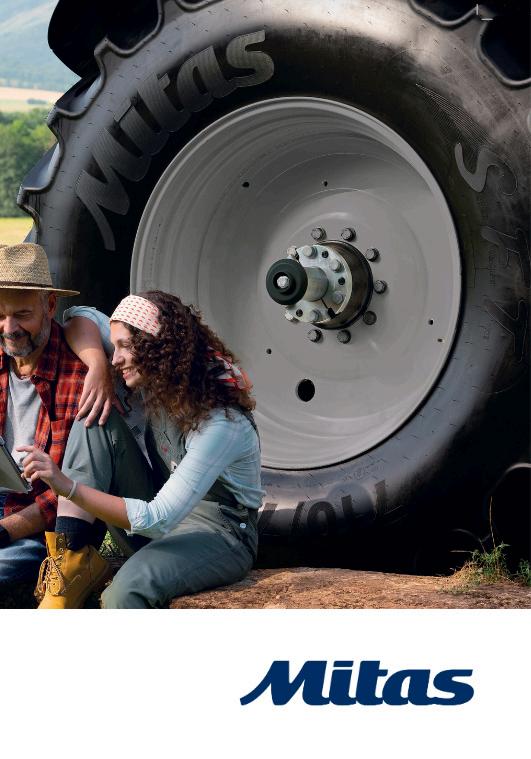
The Mitas team will be ready at Stand B/7 in Hall 16during EIMA exhibition to connect with professional farmers and worktogether on choosing the right tire to meet their specific operations and machinery.
Roberta D'Agnano, Brand Director Mitas, emphasizes the long-standing partnership that Mitas has built with its customers, stating, "EIMA has always been the international agricultural marketplace, and Mitas tires have consistently been at the forefront, helping farmers in their daily challenges with reliable, hardworking tires developed through extensive fieldwork. With decades of expertise, Mitas combines tradition with modern innovation, building on a rich legacy to shape a trusted brand. For this EIMA, we are launching a new brand campaign truly representing our on-going support for farmers and their machinery across generations. This year, as in the past, we have something for everyone: our latest tire ranges are designed to enhance performance and protect the ground across various applications, ensuring that end-users can rely on Mitas tires throughout the entire life of their vehicles".

ROAD SAFETY and breakdown organisation, GEM Motoring Assist, is warning drivers to be on the look-out for deer on the roads. The next few weeks will see a peak in deer mobility, as the breeding season gets into full swing.
This means more deer crossing roads, with an increased risk of collisions, says GEM. Periods of highest deer activity tend to occur at dawn and dusk, coinciding with the morning and evening rush hour, increasing collision risks in areas where deer are common.
“That’s why we’re encouraging drivers to be extra observant, and to know what to do if they come across a deer on the road ahead.
“Experts2 say not to swerve to avoid hitting a deer. If a collision with the animal appears inevitable, then the safest option is to hit it while maintaining full control of your car. The alternative of swerving towards oncoming traffic or into a verge or hedge could be a lot worse.”
GEM offers simple tips for drivers to reduce risk from deer collisions:
• Swerving to avoid a deer could prove a very dangerous action if it leads to a collision with another vehicle.


Experts believe the UK deer population numbers more than two million, and figures from the British Deer Society suggest a car hits a deer every seven minutes in England. Research from the RSPCA shows around 75,000 deer are involved in vehicle collisions each year1, with 10,000 killed instantly.
The human death toll from deer collisions ranges between 10 and 20 annually, with an additional count of around 450 serious injuries. Industry estimates put the cost of damage to vehicles alone to be at least £17 million.
GEM head of road safety James Luckhurst said: “Autumn brings the risk of more deer activity, and it should not be a surprise to see deer crossing roads. The risk of a collision is increased because the shorter daylight hours mean we need to make more journeys in the dark.
• Take note of deer warning signs. These are placed in locations where wild animal crossings are likely, so keep your speed down and be ready to encounter a deer at very short notice.
• Don’t assume it’s just a countryside problem. Deer populations have risen and spread in recent years. Although rural areas tend to present the highest risk, deer sightings have become increasingly common in more urban locations – such as on roundabouts, in parks and cemeteries.
• Be particularly alert at dawn and dusk, when deer are most active.
• If you spot one animal, it’s likely there may be others following, so don’t speed up and assume the danger has passed.
• If you do hit a deer, report it to the police, even if you’re uninjured and your car isn’t damaged, as the deer may be fatally injured and suffering.
Keep up to date with GEM Motoring Assist at:
X: @motoringassist
Facebook: @gemmotoringassist
Instagram: @gem_motoringassist
LinkedIn: @gem-motoring-assist

The All-New Dacia Spring, already one of the UK’s most affordable cars and the UK’s most affordable new electric car is also going to be the best value EV to lease thanks to Octopus Electric Vehicles’ first order for its salary sacrifice scheme.
From £195 a month, the AllNew Dacia Spring appeals to anyone who wants to keep their motoring costs low or maybe want to try their first EV, changing the game by addressing the usual complaint that electric cars are more expensive.
Salary sacrifice allows drivers to lease a car through their employer –paying through their gross salary and saving up to 40% on income tax and national insurance.
The five-door supermini will be available from Octopus Electric Vehicles in Expression and Extreme specifications, both offering a 7-inch digital instrument cluster, cruise control, manual air conditioning, rear parking sensors, Media Control system with USB port, electric front windows and remote central locking. Its 26.8 kWh battery can be charged from 20% to 100% in just four hours using a 7kW home charger.
186 miles (WLTP urban cycle), the All-New Dacia Spring will be a really viable EV for many people who want a car to commute to work, to use for their work or as an extra car that fits within a certain budget.


Octopus, the UK’s largest EV only leasing company, has agreed to purchase an initial batch of 50 All-New Dacia Spring, and will continue to monitor demand for the UK’s most affordable new electric car before expanding its order.
Under Octopus’ scheme, drivers are provided with everything they need to take the road within one price – including the car, installed home charger, insurance, maintenance and access to Octopus Electroverse, a charging roaming service with access to over 850,000 chargers, paid for with one card and app.
With a range of 137 miles (WLTP mixed cycle) or
Luke Broad, Dacia Brand Director for the UK, said: “With such an affordable price and compact size, we knew the Spring would be perfect for many fleet customers. We love that leasing via Octopus Electric Vehicles makes switching to an EV so easy and accessible, allowing more UK drivers to get behind the wheel of a highly efficient and usable car at a very attractive cost.”
Alvin Castillo, Head of Procurement at Octopus Electric Vehicles commented: “New EV models are hitting UK roads every month, providing drivers with a choice to help find the car that is the right fit for them. Being able to get a new electric car for less than £200 a month is a gamechanger –opening up clean, affordable driving for drivers that previously wouldn’t have been able to switch.”
The first All-New Spring models are due to be on UK roads this month.


Hyundai Motor has announced the upcoming launch of INSTERCross, a new variant of the all-new INSTER. This crossover model will be available soon, offering customers the versatility of INSTER while accompanying them on their mini-adventures in the outdoors.
Bold crossover design
The roomy interior and generous luggage capacity of the base version of INSTER already offer customers enhanced manoeuvrability, practicality, and flexibility. INSTER Cross will feature distinct

outdoor-focused exterior and interior design elements.
INSTER Cross will come with wide, rectangular front and rear bumpers to highlight its adventurous character, as well as embossed black claddings. The front and rear skid plates, coupled with the side rocker panels with complimentary 17-inch alloy wheels, provide extra protection when driving over rough roads. Roof racks will be standard to transport everything needed for everyday errands, outdoor sports, and camping trips. The crossover variant will be offered in an exclusive exterior colour, Amazonas Green Matte, as well as five colours available for INSTER – some of which are


available with a black two-tone roof: Atlas White, Natural Ivory, Aero Silver Matte, Abyss Black Pearl, and Jungle Khaki
Inside, INSTER Cross will offer a special colour and trim combination: grey cloth with limeyellow accents. The unique trim will be complemented by lime-yellow accents on the dashboard.


Same as the base model, INSTER Cross will come standard with a range of features more common in cars in higher segments. On top of offering up to 359 kilometres of all-electric range (subject to whole vehicle Type Approval), the model can be charged from 10 to 80 per cent in around 30 minutes. INSTER also offers a segment-leading ADAS package, including Highway Driving Assist 1.5, Smart Cruise Control, and Forward Collision-
Avoidance Assist 1.5. The interior offers true versatility with all seats being able to be folded flat, walkthrough access in the front row, and 50/50 split second-row seats that can slide and recline.
Production of INSTER Cross is set to begin later this year at Hyundai’s manufacturing plant in Korea.
Disclaimer: CO2 and emissions data
• The all-new Hyundai INSTER is not yet available for sale. Electricity consumption and CO2 values for this model have not yet been determined.



Hennessey, the Texas-based hypercar manufacturer and high-performance vehicle creator, has released a supercar-crushing 1,005 bhp version of the Cadillac Escalade-V. The three-row all-wheel-drive super-SUV can hit 60 mph in just 3.6 seconds, and launches so hard it leaves even a Lamborghini Huracan Evo for dead at the start line.
The Texan engineering team adds almost 50 percent more power (1,005 bhp) and 35 percent more torque (882 lb-ft) to the Escalade-V with a high-flow supercharger, custom Hennessey camshaft, ported cylinder heads, custom engine calibration, and a high-performance throttle body among the long list of upgrades.
The 6,200 lb, supercharged 6.2-litre V8 Escalade-V drips with technology and has capacity for seven luxuriously-
accommodated passengers, plus luggage. Yet, despite weighing almost double the Huracan, John Hennessey’s recent Lamborghini supercar drag race saw the Escalade consistently demonstrate superior off-the-line performance accelerating away by multiple car lengths before the supercar eventually catches up.
John Hennessey, company founder and CEO: “A full size luxury SUV has no business beating supercars, but the way the H1000 Escalade-V holds its own against legendary performance cars like the Huracan Evo is insane! If there’s a faster, more fun way to move seven people in this much comfort, I’m yet to find it!”
Production is now underway at Hennessey’s Sealy, Texas factory with all 2024 build slots already sold out. Orders are now being taken for 2025 production with exclusivity guaranteed with no more than 100 serial-numbered units produced


for the 2023 and 2024 model years. Every vehicle benefits from Hennessey’s extensive R&D, road and track testing, plus a 3-year / 36,000-mile limited warranty. Interested customers can find out more and place orders with authorized Cadillac retailers and at HennesseyPerformance. com, or by calling +1 979 885 1300.
Specification - Hennessey H1000 Escalade-V:
• 1,005 bhp @ 6,400 rpm
• 882 lb-ft torque @ 4,300 rpm
• Upgraded High-Flow Supercharger System
• Upgraded Upper Pulley for Increased Boost Pressure
• Upgraded Lower Pulley
• Custom Hennessey Camshaft
• High-Performance Throttle Body
• Ported Cylinder Heads
• Auxiliary Fuel System Upgrade
• High-Flow Air Induction System
• Upgraded Valve Springs and Retainers
• Upgraded Intake and Exhaust Valves
• Upgraded Lifters and Push Rods
• Oversized Heat Exchanger Upgrade
• Long-Tube Stainless Steel Headers
• Crankcase Ventilation System
• High-Flow Catalytic Converters
• HPE Engine Management Calibration
• All Necessary Gaskets and Fluids
• Professional Installation
• Chassis Dyno Tuning
• Road Testing (Up To 500 Miles)
• Serial-Numbered Engine Bay Plaque
• Hennessey & ‘H1000’ Exterior Badging


Kia Corporation (Kia) has developed the world’s first car accessory made from plastic extracted from the Great Pacific Garbage Patch (GPGP) by The Ocean Cleanup. The announcement of the accessory is a major milestone in its long-term partnership with The Ocean Cleanup. Since 2022, Kia’s support of the non-profit organisation, which is dedicated to developing and scaling technologies to rid the world’s oceans of plastic, has been a key part of the brand’s ongoing transformation into a leading provider of sustainable mobility solutions.
As one of the most significant outcomes of the partnership so far, Kia will introduce a limitededition trunk liner for the all-new Kia EV3 made using ocean plastic received from The Ocean Cleanup. The exclusive accessory will be available for EV3 in selected markets, including the UK, and available to order in line with the model’s market introduction.
Charles Ryu, Executive Vice President and Head of the Global Brand & CX Division, Kia, commented: “This partnership is not only a
testament to our shared commitment to environmental stewardship and innovation, but worldwide movement to create a cleaner, healthier oceans for future generations.”
“As the first genuine Kia accessory made using reclaimed ocean plastic, we are proud to see tangible progress made toward creating a circular resource system for ocean plastic. We will leverage the lessons learned during the recycling and product development process to continue to manufacture useful and beneficial products for our customers using ocean plastic retrieved and provided by The Ocean Cleanup.”
Taking inspiration from Kia’s ‘Opposites United’ design philosophy, the trunk liner’s ‘geometric wave’ top surface pattern is reminiscent of waves and the flow of trash into a collecting area, echoing The Ocean Cleanup’s process for extracting marine plastic. Made with 40% recycled ocean plastic*, the high-quality trunk liner is just as durable, protective and functional as a conventional trunk liner. Each liner also features a QR code, which provides customers with detailed information about the product's development and
the partnership, as well as The Ocean Cleanup logo.
Since the beginning of the seven-year partnership in 2022, Kia and The Ocean Cleanup have worked tirelessly to find innovative ways to transform plastic waste from the GPGP into durable, practical products. Due to the unique qualities of the ocean plastic catch, the first phase involves sorting, recycling, and processing the plastic to meet Kia’s strict quality standards.
Unlike ocean-bound plastic, the Ocean Cleanup's catch is exclusively composed of materials that were already in the ocean, making it more challenging to recycle. This means that the plastic must undergo a Chain of Custody Standard to verify its traceability and material integrity**.

“We are so grateful to have a visionary and passionate partner in Kia, who shares our vision of ensuring that the plastic we extract from the Great Pacific Garbage Patch is given a new life in sustainable items”, said Boyan Slat, Founder & CEO, The Ocean Cleanup. “Our mission is made possible by partners such as Kia and we look forward to this launch being the first of many ways we turn ocean plastic from trash to treasure.”
As part of the company’s ongoing sustainability
goals, Kia has proactively integrated recycled plastics and other eco-friendly materials in its latest models. This includes its all-electric flagship SUV –the EV9 – which incorporates recycled fishnets for flooring and recycled plastic bottles for seat fabrics, and the EV6, which uses cloth and matting produced from recycled plastics.
To support its broader vision of becoming a pioneer in sustainable mobility, Kia has pledged to increase the use of sustainable materials in its future products and raise application of recycled plastic in vehicles to more than 20% by 2030, underscoring its commitment to creating a circular resource system for ocean plastic.
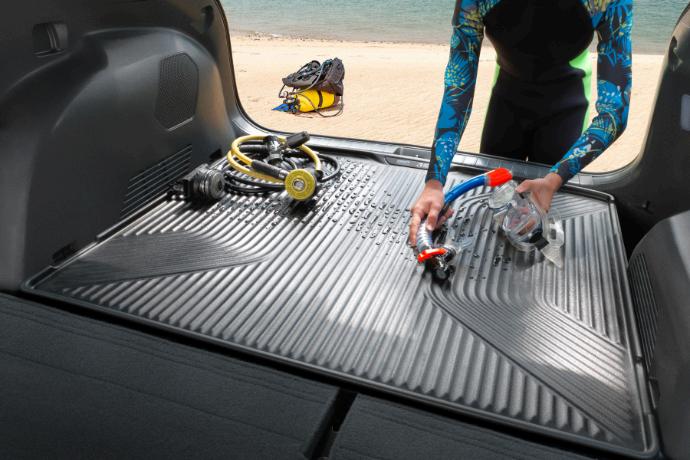

Since its foundation in 2001, Kingsley ReEngineered (Kingsley) has been leading the way in restoring and re-engineering classic Land Rovers and Range Rovers. With a reputation built on decades of craftsmanship and innovation, Kingsley has consistently pushed the boundaries of what these iconic vehicles can be. The Kingsley KSR series is the latest chapter in this story, offering an updated and refined take on the Range Rover Classic that builds on the successes of the previous KC and KR series. This isn’t just another take on a classic; it’s a bold step forward, integrating the latest advancements in technology and luxury to set a new benchmark for future builds.
The KSR series represents the apex of Kingsley’s engineering capabilities, with the ‘S’ standing for superior, highlighting the bespoke nature and exceptional craftsmanship of each individual client creation. While it pays homage to the iconic Range Rover Classic, the KSR takes the concept further, offering a driving experience that feels both familiar and refreshingly new. It is the first Kingsley build with a brand-new interior set-up, created with a world-leading British interior manufacturing partner, delivering a modern experience while retaining
some of the beloved features of old. A step-change from the previous interiors, the KSR has a reengineered, proprietary, in-house designed dashboard, including a longer windscreen de-mist vent. This sits above a beautifully designed, new instrument panel and centre console, expertly crafted by its team for seamless integration and modern usability.
What truly distinguishes the KSR series is its role as a statement of intent for Kingsley’s future. This updated version of the Range Rover Classic demonstrates Kingsley’s commitment to continually enhancing its offerings, ensuring that each new build is better than the last. From the seamless integration of modern features to finely tuned performance upgrades, every detail of the KSR has been thoughtfully crafted to elevate the driving experience.
Handcrafted in the heart of the UK’s automotive valley, each Kingsley KSR is a testament to British engineering at its finest. Using a 1991 Range Rover Classic as the basis for the transformation, the Kingsley KSR is available in both two- and four-door variants, and with a plethora of customisation options.

Starting from £220,000 + VAT, the KSR is designed for those who want the very best in luxury, performance, and individuality.


Technical specifications – technical innovations in the Kingsley KSR Series
At Kingsley, each car represents a unique bond between the vehicle, the team, and the customer. This philosophy drives the creation of the KSR series, where the sky truly is the limit in terms of customisation and engineering options for discerning clients worldwide.

Each KSR is powered by a 4.6-litre High Torque V8 engine as standard, delivering a robust 270 bhp and 310 ft-lbs of torque at 3,500 rpm. This engine is mated to a smooth-shifting, Kingsley-optimised four-speed automatic gearbox, designed to provide effortless power delivery whether navigating city streets or tackling rough terrain. For those seeking even more performance, Kingsley offers optional upgrades, including Chevrolet LS3/LT1 V8 engines and advanced six-speed transmissions.
One of the standout features of the KSR is its TracTive adaptive suspension system. This new technology offers pre-set controls that allow the driver to adjust the vehicle’s handling characteristics at the touch of a button. Whether cruising on a motorway, navigating winding country roads, or exploring off-road, the TracTive system ensures that the KSR adapts to any needs, delivering a comfortable and composed ride in all conditions. This advanced suspension system puts modern technology at the driver’s fingertips, ensuring that the KSR not only performs exceptionally but also provides an engaging and intuitive driving experience.
But the technological upgrades don’t end there. Inside the KSR, modern convenience meets classic design, as the fully digital dashboard and integrated Apple CarPlay offer seamless connectivity and control, allowing drivers to stay
connected and entertained while on the move. Investing in a state-of-the-art HVAC (heating, ventilation, and air conditioning) system for the KSR, Kingsley’s KSR not just blows icecold air through the airconditioning, but also helps with heating the cabin and de-misting. Working in tandem with the overhauled interior, the all-new Kingsley dashboard includes a longer windscreen de-mist vent, in lieu of the classic but unoptimized circular vent, to ensure optimal climate control within the cabin, making every journey as comfortable as it is enjoyable. These thoughtful upgrades highlight Kingsley’s mission to enhance the Range Rover Classic without compromising its authentic character.
Precision and performance are at the forefront of Kingsley’s design philosophy, and the KSR is no exception. Equipped with the Kingsley big brake kit, the KSR is engineered to handle the increased power and deliver a responsive, exhilarating drive. These features, combined with the KSR’s advanced suspension and drivetrain, create a driving experience that isn’t just about getting from A to B, but enjoying every moment behind the wheel.
At Kingsley, the creation of a vehicle like the KSR is more than restoring a classic, it’s forging a bond between the past and the present, the car and its owner. This commitment to quality and craftsmanship ensures that every Kingsley KSR is more than just a car – it’s a personal statement, a piece of history brought to life with the very best in modern engineering. With a range of products and customisation options, Kingsley continues to push the boundaries of what a restored classic can be, bringing the Range Rover Classic into the 21st century without losing the qualities that made it iconic in the first place.

At The City of Genius show in Shanghai on October 19, 2024, Mercedes-Benz and Moncler took the bold next step in their collaboration. Alongside the launch of the brand campaign, “Past Forward. Where the Future is Driven by the Past”, the partners unveiled a one-off art piece, “Project G-Class Past II Future” , inspired by NIGO. It’s based on a G-Class from the 90s that was completely restored. NIGO reworked numerous design elements inside and out to revive the design and brings it into the cultural landscape of the present. The G-Class Past II Future is a new G-Class model with a limited run of only 20 cars and is inspired by the art piece. At the show, the audience also got a sneak preview of Moncler’s new collection of urban, gender-neutral fashion designed by Mercedes-Benz and Moncler together with NIGO. Both the limited-edition G-Class and the capsule collection will be launched in April 2025. Alongside Mercedes-Benz and NIGO, the Shanghai event additionally hosted several other artists, who presented their own respective collaborations with Moncler: A$AP Rocky and Willow Smith, Edward Enninful (OBE), FRGMT by Hiroshi Fujiwara, Gilga Farm by Donald Glover, LuLu Li and Palm Angels. In addition to the Moncler Genius 2024 lineup, special showcases were presented by Rick Owens and Jil Sander.
“NIGO’s immense creative talent and our cocreation with Moncler are taking us into an exciting urban setting. The Mercedes-Benz G-Class Past II Future is a very special new ‘twist’ on our icon. This limited edition is a fresh take on 90s style and the character that's made the G-Class a timeless favourite. Going from inspiring art to engaging products marks an important step in our creative cooperation and offers a new brand experience captured by the zeitgeist.” Bettina Fetzer, Vice President Communications & Marketing Mercedes-


Benz AG
Art piece Project G-Class Past II Future inspired by NIGO
NIGO’s creation is the second art piece to emerge from the collaboration between Mercedes-Benz and Moncler. Like the PROJECT MONDO G, launched at Moncler’s “The Art of Genius” show in London in February 2023, this art piece merges the distinctively quilted aesthetic of the Moncler puffer jacket with the unmistakeable edginess of the GClass. Measuring 4.5 metres in length, 1.9 metres in width and 2.0 metres in height, the art piece features a minimalistic, matte two-tone contemporary colour palette in olive green and grey, which is offset by striking exterior accents in black and gold. The clean lines of the classic GClass cabriolet give it a contemporary attitude. Hallmark G-Class functionality and design cues are retained and reinterpreted. These include the iconic spare wheel on the rear tailgate, black steel wheels in the 90s design, a foldable windscreen, and a gold-coloured fuel can. The interior has also been reworked. Among other elements, G-Class enthusiast Devon Turnbull – known for his immersive audio installations – has designed a
sound system that fits perfectly into the vehicle concept, both technically and visually. The music “boom boxes” are mounted on the convertible top linkage and - like the entire roof and the speakers - can be removed. Its chequered seat upholstery pattern is an interpretation of a design element typical of earlier G-Class models. Accents in orange and gold draw parallels with the collaborative fashion collection by MercedesBenz, Moncler and NIGO.
“For me, the 90s were among the most influential decades from a cultural and creative standpoint. Electronic music and the hip-hop scene arose as a new expression of urban character. I wanted to integrate that vibe and energy into the design of the Project G-Class Past II Future by interpreting that legacy for a new contemporary era.” Fashion designer, music producer and creative director, NIGO
Limited edition Mercedes-Benz G-Class Past II
Future Both the limited-edition G-Class and the capsule collection are the collaboration’s first products available for purchase. As a crowning moment in the 45th anniversary year of the GClass, the new edition shows how timeless this brand icon remains, and how capably it adapts to contemporary lifestyles. The Mercedes-Benz GClass Past II Future references NIGO’s one-off art piece and is based on the new G 450 d (combined energy consumption: 10.0-8.7 l/100 km | combined CO₂ emissions: 261-227 g/km | CO₂ class: G)1 and the new G 500 (combined energy consumption: 12.3-10.9 l/100 km | combined CO₂ emissions: 281-248 g/km | CO₂ class: G)1. It has two-tone exterior paintwork in green and grey, the G-Class typical chequered upholstery and a rear-mounted spare wheel with the collaboration logo on its cover. Black exterior accents include the window frames, light metal alloy wheels and the signature bumper guard running the full length of the flanks. The latter features the Past II Future lettering. In the interior, this lettering can be found on the grab handle. On the centre console, the vehicle’s “1 of 20” limited series number is inscribed. The 20 cars will be delivered to customers in April 2025.
The capsule collection
The gender-neutral fashion collection incorporates 90s influences with contemporary street style elements. Following “The City of Genius” show preview, the pieces shown will be winnowed down into a capsule collection that will be available for purchase starting in April 2025. It will mainly consist of souvenir and college jackets, hoodies, checked shirts and Bermuda shorts as well as lightweight down and field jackets, parkas and windbreakers with a vintage look. The colour palette is classic: Blue, black, green and white dominate – complemented by orange accents. Many of the garments feature elaborate prints that

merge archival photos of the collaboration partners. Jackets and pants are made using raw denim, with one exception: a satin jacket that combines the visual language and logos of both brands. The jacket captures the spirit of their collaboration, especially in combination with the grey checked shirts.
Brand campaign “Past Forward. Where the Future is Driven by the Past”
The unbreakable bond between past and future is reflected in the brand campaign accompanying this next step in the Mercedes-Benz x Moncler collaboration – together with NIGO and photographer Thibaut Grevet. With the motto, “Past Forward. Where the Future is Driven by the Past”, it visualises the evolution of the collaboration from an imaginary cosmos to its arrival in metropolitan life. A city rooftop symbolises the campaign’s urban look and feel. The rooftop’s angular metallic surfaces provide the perfect backdrop for showcasing the streetwear collection by the partners Mercedes-Benz, Moncler and NIGO. The campaign’s aim is to highlight the overarching theme of taking inspiration from the past, harnessing creativity and translating it into something new. The global campaign will be rolled out across each brand’s respective websites and social media channels. In addition to the main campaign film, a making-of video by Theodor Guelat gives a closer, behind-the-scenes peek into the collaboration with NIGO.
The creative team:
• Idea, concept and realisation: team x
• Creative director: Thibaut Grevet
• Director of photography: João de Botelho
• Sound design: Pierre Rousseau at Stereo Image

Milltek Sport, the premium performance exhaust specialist, has launched its first range of bespoke engineered and styling products for overland and performance cars under the brand, MLTK by Milltek.
With over 41 years of engineering and design experience in the performance and modified car scene, Milltek has designed and produced MLTK’s products alongside its performance exhausts at its headquarters in Derbyshire, UK. These styling enhancements are designed to perfectly compliment Milltek Sport’s exhaust systems.
The first MLTK products are for the original Land Rover Defender, as previewed at the

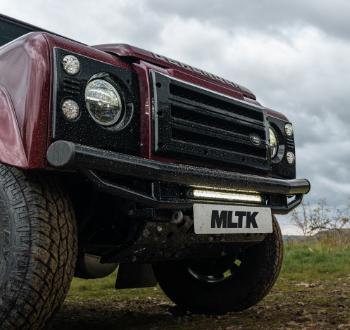
Goodwood FOS, and the new INEOS Grenadier. The range includes additional lighting units, aluminium and tubular front bumpers, a rear spoiler with integrated third brake light, plus new taillights, rear corner steps, side steps and under body protection. It almost goes without saying that the range also includes Milltek stainless steel exhausts.
In the coming months, MLTK will also introduce products for performance cars like the latest MINI Cooper S (F66).
Steve Pound, Managing Director of Milltek Sport, said: “Working so closely with the aftermarket sector and performance enthusiasts for over 40 years, it seems an obvious step for Milltek to design and produce our own styling products engineered to the same high quality as our performance exhausts. We’re really pleased with the first range of MLTK products and how they enhance the visual appeal of the vehicles even further.”
For further information and to pre-order the first products from MLTK by Milltek, visit: https://mltk.com


Tune in to Nissan’s ultimate “Singalong Sensations” playlist this World Singing Day! The dynamic, mood boosting selection of songs is perfectly poised to bring people together through the unique power of song.
The theme of World Singing Day, “Sing Together. Unite the World”, encourages people from all walks of life to take time out of their busy schedules to come together, flex their vocal chords and sing their heart out to their favourite feel-good songs, allowing themselves to work better and live better.
What is more, the playlist has been specifically curated to align with Nissan’s one-of-a- kind van, the Townstar Karaok-e. With its built-in karaoke features designed to dazzle and delight passengers and passers-by alike, the van aligns perfectly with that of World Singing Day: bringing people together through song,and unleashing the physical and mental benefits of belting out your favourite songs at the top of your lungs – helping you to work better and live better!
With the model’s interior expertly transformed into a portable karaoke booth and with the sound system and lighting precisely crafted to amplify your performance to the max – this is a model that breaks the mould of what an electric van can be.
Bursting into life earlier this year, the all-electric Townstar Karaok-e re-imagines what Nissan’s renowned Townstar compact van can be, fusing all-electric efficiency with endless entertainment to produce an unforgettable experience. With singing and music scientifically proven to reduce stress, boost dopamine levels and produce endorphins, the Karaok-e is a oneoff van designed to defy ordinary routines, and bring an
electrifying boost to urban dwellers from all walks of life.
Showcasing the versatility and conversion possibilities of the Townstar range, the Karaok- e’s rear layout has been transformed into a funky and fresh Karaoke lounge in place of the usual spacious seven seats - capable of turning anyone into a singing sensation! With a revamped interior space, its seamlessly integrated karaoke system and 32" monitor display, state-of-the-art sound system, and an extensive repertoire of songs spanning diverse languages, this karaoke experience guarantees a journey that's enriched with spacious comfort and unforgettable performances. At the same time, singers and audiences alike won’t need to worry about what impact their journey is having on the environment - with a 45kWh battery and a range up to 301 km, Townstar Karaok- e offers emission-free rides through the city!
In bringing our Singalong Sensations playlist together, Nissan combined the views, tastes and preferences of our employees from across our diverse AMIEO (Africa, Middle East, India, Europe and Oceania) region. When you tune in and belt out this superb selection of songs, you can be certain that it represents the very best of our brilliant employees and customers – and shows what singing, and the Townstar Karaok-e, is all about.
Read more about Townstar Karaok-e here: https:// europe.nissannews.com/en- GB/releases/buckle-upand-sing-out-loud-with-nissan-townstar-karaok-e.
Whilst our one-of-a-kind Karaok-e van is not available to purchase, Nissan offers a range of Townstar variants which will have you singing all day long, with the option to turn this versatile van into your very own fun project: Small Electric Van l Nissan Townstar | Nissan



Isuzu UK is proud to announce its sponsorship of the YFC Supporter of the Year Award at the prestigious YFC Achiever Awards 2024, taking place on 2nd November 2024 at the National Conference Centre. The awards celebrate the dedication and commitment of young people and their supporters to the British countryside. As the biggest celebration of rural young people in England and Wales, the YFC Achiever Awards highlight the outstanding contributions of members of the National Federation of Young Farmers' Clubs (NFYFC) and those who support them.
The black-tie ceremony will include a threecourse meal and entertainment, providing a fitting backdrop to honour the achievements of the YFC community. The event features eight award categories,
showcasing everything that makes YFC members and supporters so special – from acts of kindness in local communities to developing rural enterprises.
Isuzu UK’s sponsorship of the YFC Supporter of the Year Award highlights the company’s commitment to championing the individuals who dedicate themselves to fostering the next generation of rural talent.
This year’s shortlist includes five remarkable individuals: Alan Radcliffe (Isle of Man), Bay Bardwell (Somerset), Linda Kinston (Leicestershire and Rutland), Mark Horner (Oxfordshire), and Martin Attwell (Hampshire). Each nominee has demonstrated an unwavering passion for YFC, helping to guide, mentor, and inspire young farmers in their communities.
Young Farmers' Clubs (YFC) play a pivotal role in supporting the next generation of farmers and rural leaders in the UK.
Through a wide variety of initiatives, YFC offers opportunities for personal development, leadership, and community engagement. Programmes such as “YFC is for Everyone”, which promotes inclusion and diversity, ensure that all young people, regardless of background, can benefit from the organisation’s support. With over 575 YFCs across England and Wales, the organisation nurtures skills in agriculture, public speaking, leadership, and enterprise, all while fostering a sense of community.
As a key sponsor of the NFYFC, Isuzu UK is proud to support the network of Young Farmers' Clubs throughout the country. Isuzu’s partnership with NFYFC strengthens the commitment to helping young people in rural areas access opportunities and thrive in agricultural careers. By sponsoring events and initiatives, Isuzu is helping to ensure the long-term sustainability of the UK farming industry, as well as the development of the next generation of rural leaders.
NFYFC’s Chair of Council, Drew Bailey, said: “We are delighted to have Isuzu UK
on board as a sponsor for the YFC Supporter of the Year category at the YFC Achiever Awards 2024. Isuzu’s support enables us to celebrate those dedicated to nurturing our young members through mentoring, training, and providing the guidance they need to succeed. Isuzu’s commitment to the rural community aligns perfectly with the values of NFYFC, and we’re excited about our partnership moving forward.”
Head of Marketing at Isuzu UK, George Wallis, added: “We’re proud to support NFYFC’s YFC Supporter of the Year Award. The work these individuals do to cultivate the next generation of farmers is invaluable to British agriculture. At Isuzu, we’re driven to help rural communities grow and thrive, and we’re excited to see where the future takes this next crop of young famers.”
For more information on the YFC Achiever Awards and Isuzu UK’s involvement, visit www.nfyfc.org.uk/yfc-supporter-of-the-yearfinalists-2024
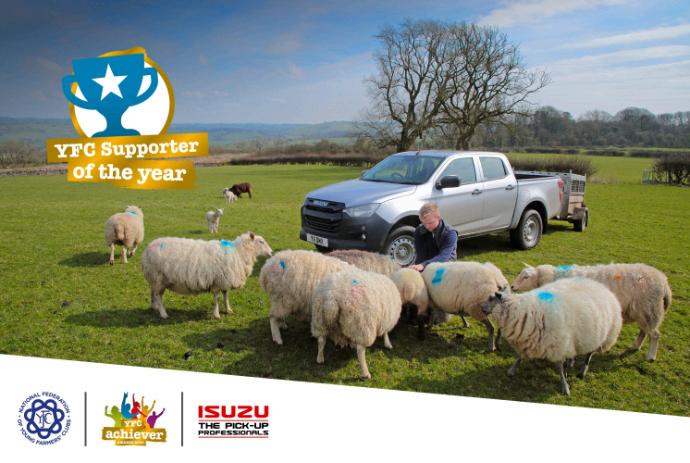

aving gained multiple honours as a new car, the Volvo XC40 has today been recognised for its compelling qualities in the pre-owned market, winning the overall Used Car of the Year and Used SUV of the Year titles in the What Car? Used Car of the Year Awards.
The XC40 impressed the judges across the board. Key factors that sealed its success included the wide choice of powertrains, the interior quality, refinement and family-friendly practicality, delivered with superb value for money for used car buyers.
Mark Pearson, What Car? Used Cars Editor, said: “For us, the XC40 is the supreme all-rounder – a reliable and desirable car that does so many things exceptionally well. You can have it as a petrol, diesel, hybrid or fully electric car, too, giving the used car buyer a variety of options. The fact that this immensely appealing family SUV should also be such great value when bought used just seals the deal for us.”
Volvo also celebrated success for the XC90 T8 large SUV, which was commended in the Used Hybrid category.
Rob Deane, Volvo Car UK’s Commercial Operations Director, said: “The qualities that have made the XC40 such a great success for us in the new car market are proving equally appealing to customers looking for a used car – an area where value for money and peace of mind are also crucial considerations. These factors have helped earn our great SUV this much-appreciated award.”
People looking to buy an XC40, or any other preowned Volvo, can source the best-quality cars and enjoy excellent customer support from the Volvo Selekt Approved Used service. Every car offered has undergone a rigorous programme of more than 150 checks and is sold with a 12-month unlimitedmileage warranty*. The package of benefits also includes MoT test cover, covering the majority of items that could cause a failure at the car’s next check, and 12 months’ free roadside assistance in the UK and Europe. In addition, if the customer is not completely satisfied, they can exchange their car for one of equivalent value under the Volvo Selekt Approved Used 30-day/1,500-mile satisfaction guarantee.
To find out more about Volvo Selekt Approved Used, please visit www.volvocars.co.uk/used



Renault has continued its award-winning ways after the brand collected two further accolades at the prestigious Carbuyer Best Car Awards 2025. The Renault Scenic E-Tech 100% electric has been voted “Best Family Electric Car”, while the Renault Clio was awarded the “Best Small Car” crown.
On the renowned website naming the Scenic E-Tech 100% electric the “Best Family Electric Car”, Carbuyer Editor Paul Barker said: “The term ‘game-changer’ might be overused, but there’s something about the Renault Scenic that makes it feel like a seminal car. Here’s an electric family SUV that offers a driving range of up to 379 miles, along with a spacious and sustainable interior, all without breaking the bank.
“Renault has really thought about passengers too, serving up excellent rear space and a clever multipurpose armrest that’s also a charging station and tablet holder for long trips. Other ticks include a big boot and intuitive Google-based infotainment.”
Fully electric and brimming with useful and intuitive technology, the Renault Scenic E-Tech 100% electric features a compact motor (with 170hp or 220hp) plus a 60kWh or 87kWh battery pack for a range of up to 379 miles. The 87kWh version is available in a choice of three trim levels – techno, esprit Alpine and iconic –
while the 60kWh Comfort Range model comes exclusively in techno trim. The range starts from £37,495 OTR.
Meanwhile, the Renault Clio has maintained its position as the nation’s favourite small car, after it drew praise from the Carbuyer judges for its interior, generous equipment and low running costs.
Paul Barker explained: “The small car still has a vital role to play for consumers in 2025 and the Renault Clio is a masterclass in how to get it right. A top-class interior with loads of standard equipment is a highlight but so are the low running costs driven by the clever E-Tech hybrid engines.”
Offered with a choice of powertrains, including the innovative full hybrid, the Renault Clio boasts bold, fresh styling and a cutting-edge digital experience. The wellequipped three-model line-up, crowned by the sporty range-topping esprit Alpine trim, is available from just £18,395 OTR.
Adam Wood, Managing Director and Country Head Renault Group UK, said: “These two accolades perfectly illustrate the breadth and appeal of our award-winning model line-up. From the ever-popular Clio to the sustainably-minded and family-focused Scenic E-Tech 100% electric, there is a Renault to suit the individual requirements of a whole host of car buyers.”
The Škoda Kamiq has been crowned Best Small Family Car at the Parkers New Car Awards 2025, just months after receiving a host of upgrades that make it even more compelling than before. The Kamiq beat last year’s overall Car of The Year to take the Best Small Family Car title.
The Kamiq has been a huge success for Škoda and was revised earlier in 2024 with a new look, more features and upgraded safety tech. More recently, the introduction of new Edition trims have taken this one step further, ramping up the value for drivers with a significant boost in specification.
Keith Adams, Editor of Parkers, commented: “A well-deserved award for this fine and underrated car, which following the latest raft of Model Year updates just gets better and better.“
The upgraded Karoq and Octavia, as well as the all-new Kodiaq and Superb, also received Highly Commended in their respective categories.
The Kamiq has been recently revamped with new front and rear bumpers, wheels and a tweaked radiator grille. Inside, more sustainable materials have been used, reinforcing Škoda’s commitment to further reducing its environmental impact. The model line-up consists of SE Edition, SE L Edition and Monte Carlo Edition.








DON’T MISS OUT. FIND OUT MORE AT
B&B TRUCKS Castle Point Park, Staffordshire
DRIVEN TO DO
JEFFRIES OF BACTON Stowmarket, Suffolk WWW.BANDBTRUCKS-ISUZU.CO.UK 01283 521522
CULVERWELL CARS Robertsbridge, East Sussex
CULVERWELL-ISUZU.CO.UK 01580 880 567
DUCKWORTH ISUZU London Road, Boston
DUCKWORTH.CO.UK/ISUZU 01205 725 700
JEFFRIESOFBACTON-ISUZU.CO.UK 01449 781 131
STARTIN TRACTORS Ashby Road, Twycross
STARTINTRACTORS-ISUZU.CO.UK 01827 880 088
VAN CENTRE Station Lane, York
01904 470 170
Low 25.1 – 27.6 (10.2 – 11.2). Mid 31.4 – 36.4 (7.8 – 9.0). High 36.0 – 39.4 (7.2 – 7.8). Extra-High 29.0 –
– 241g/km. Visit isuzu.co.uk for more information. ^Terms of
the remaining 50% paid in one payment after 12 months. Credit available subject to status to UK residents aged 18 and over. This credit offer is only available through Isuzu Finance provided by International Motors Finance Limited, St. William House, Tresillian Terrace, Cardiff CF10 5BH. We typically receive commission or other benefits for introducing you to International Motors Finance Ltd. This may be a flat fee or percentage of the amount you borrow. Vehicle shown is an Isuzu D-Max V-Cross, OTR price of £43,716. Model shown features optional special paint finish at £720. OTR price includes VAT, delivery, number plates, 12 months road fund licence and first registration fee. Prices correct at time of going to print. Offer available on the DL40, V-Cross and V-Cross Steel Special Edition only registered between 01.10.2024 - 31.12.2024. Stock subject to availability. Isuzu reserves the right to amend or withdraw offers at any time without prior notice. Retail customers only, not available in conjunction with any other offers. Excludes Personal Contract Hire and Business Contract Hire. Offers may be varied or withdrawn at any time.